Introduced in 2008 as a brand-new nameplate, the Forte has already made a name for itself in the affordable compact car market. And while it might not be as popular as the Toyota Corolla and Honda Civic, the Forte was Kia’s best-selling vehicle in the U.S. in recent years and one of only 15 cars to earn the IIHS’ Top Safety Pick+ rating for 2018. Not bad for an automobile that had nothing to brag about a decade ago. Almost six years old as of early 2018, the second-generation Forte is living its final months on the market, with a redesigned model introduced for the 2019 model year at the 2018 Detroit Auto Show.
Redesigned from the ground up, the third-generation Forte follows in the footsteps of larger Kia models. Not only sportier on the outside, the new Forte comes with an upscale interior that moves it closer to the premium market. In addition to that, it's the first Kia to borrow styling cues from the hot Stinger sedan. I don't know about you, but I've been expecting Kia to add some "Sting" to its lineup ever since the four-door debuted in 2017. The new Forte arrives just in time for the redesigned Volkswagen Jetta, yet another affordable compact that wants to play in the premium league. But the Forte has other things to worry about too, like the popular Toyota Corolla and Honda Civic. How does it stack against them? Let's find out in the review below.
Continue reading to learn more about the Kia Forte Sedan.
2019 Kia Forte
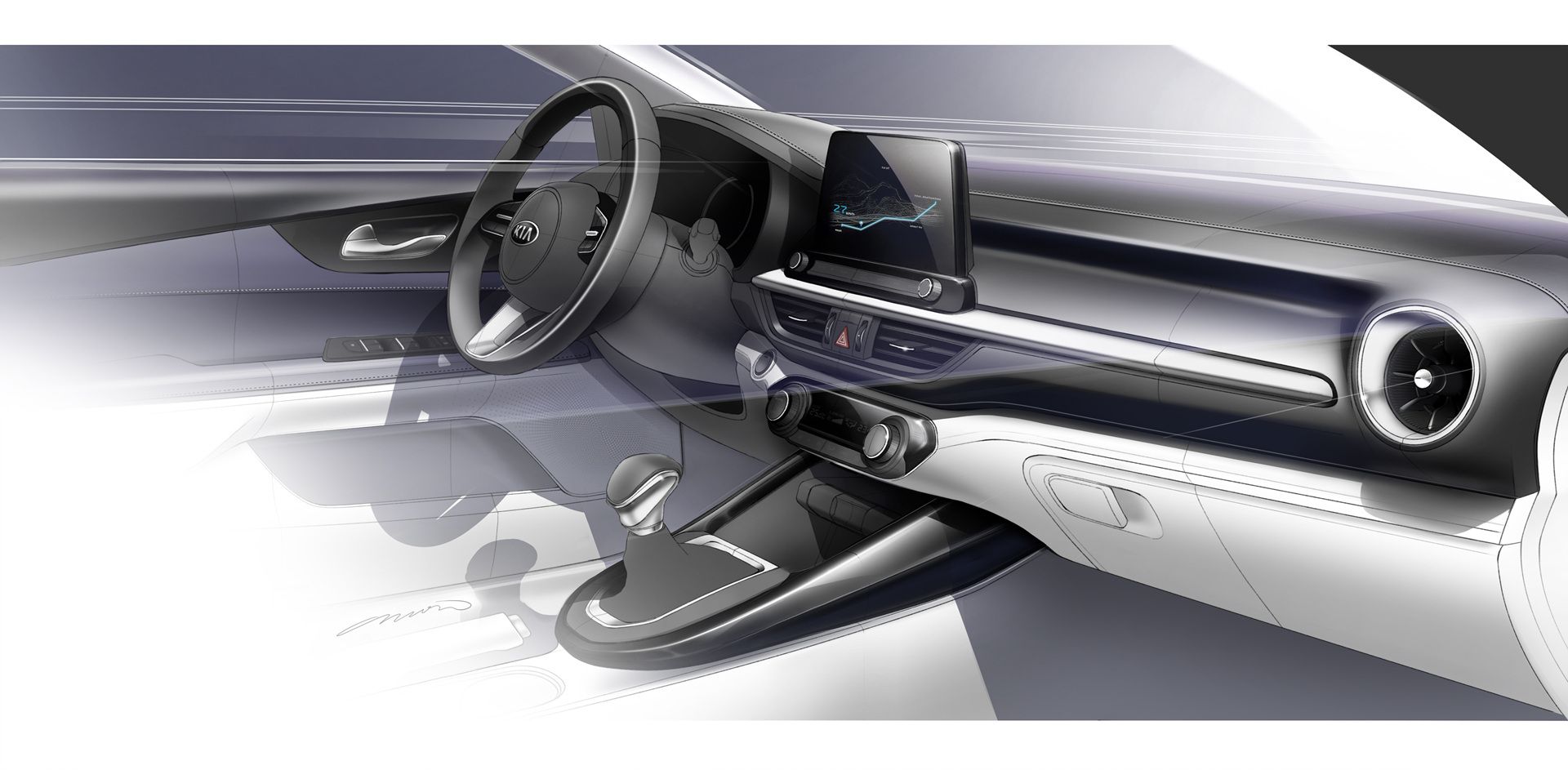

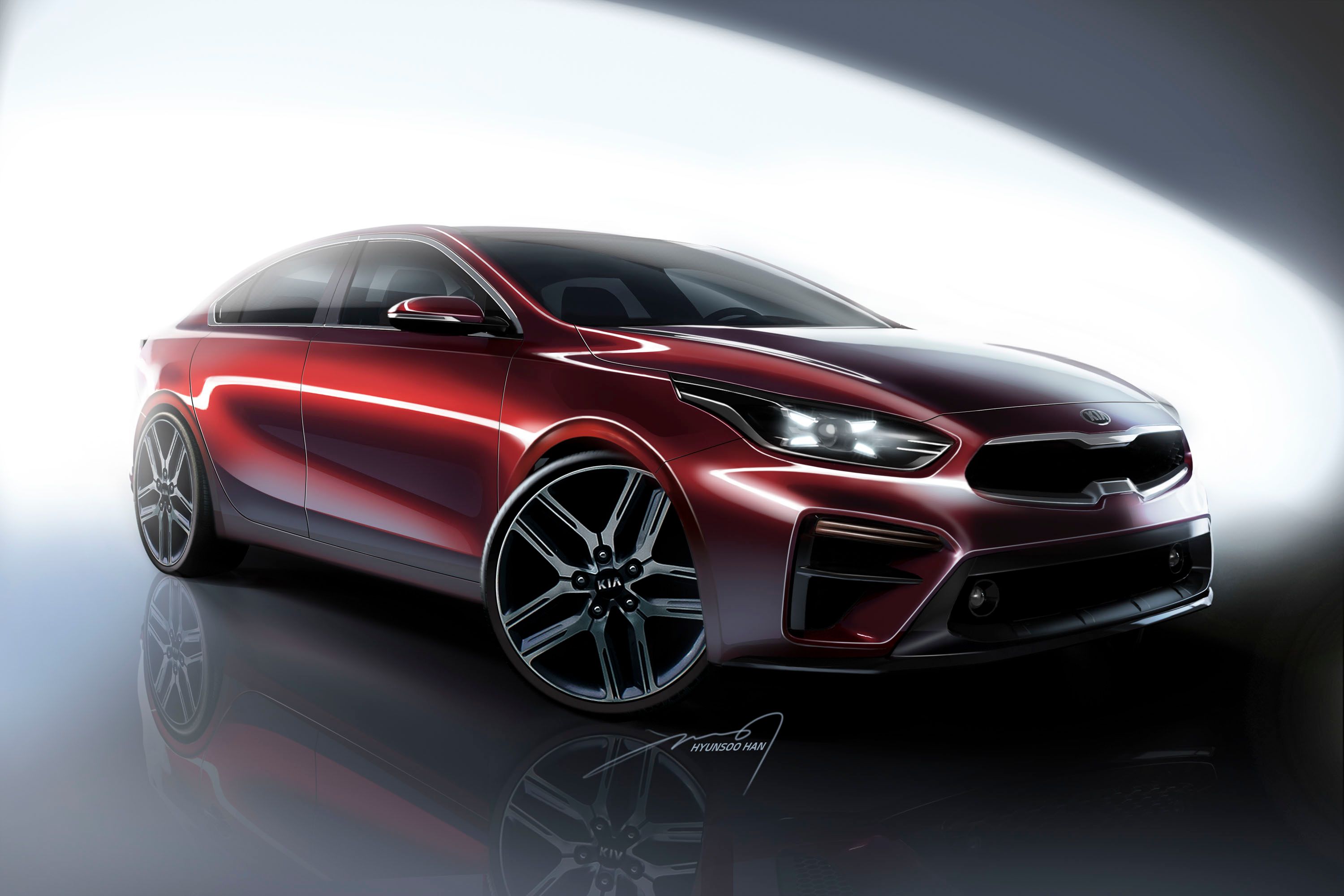
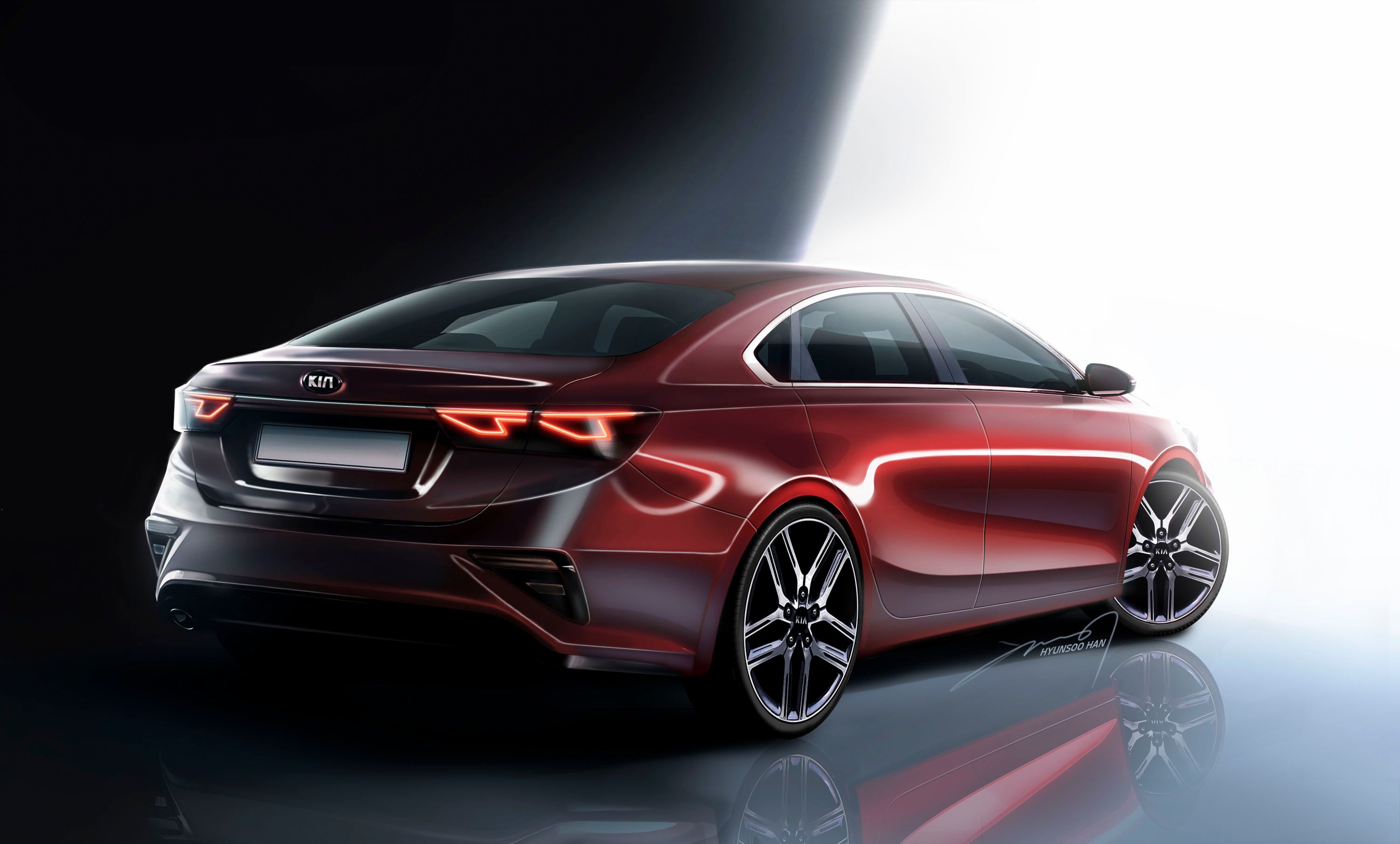
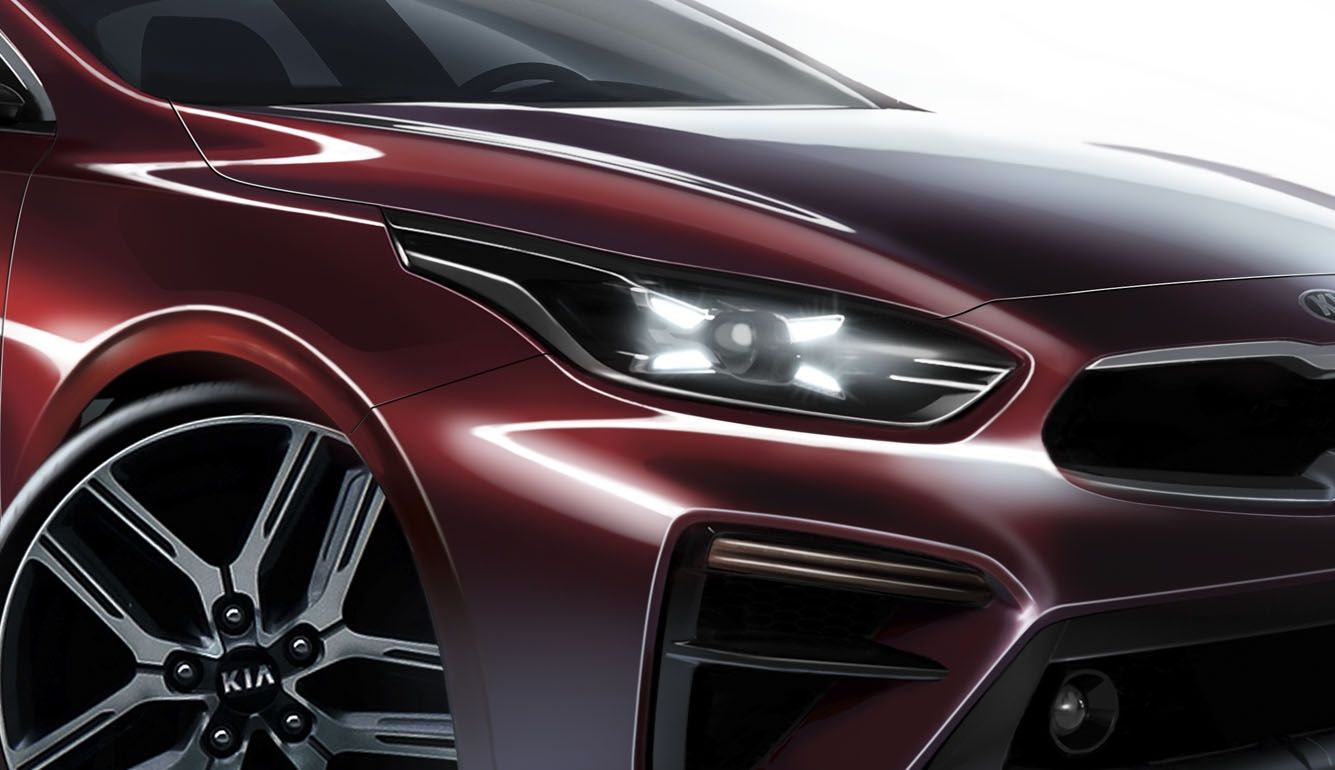
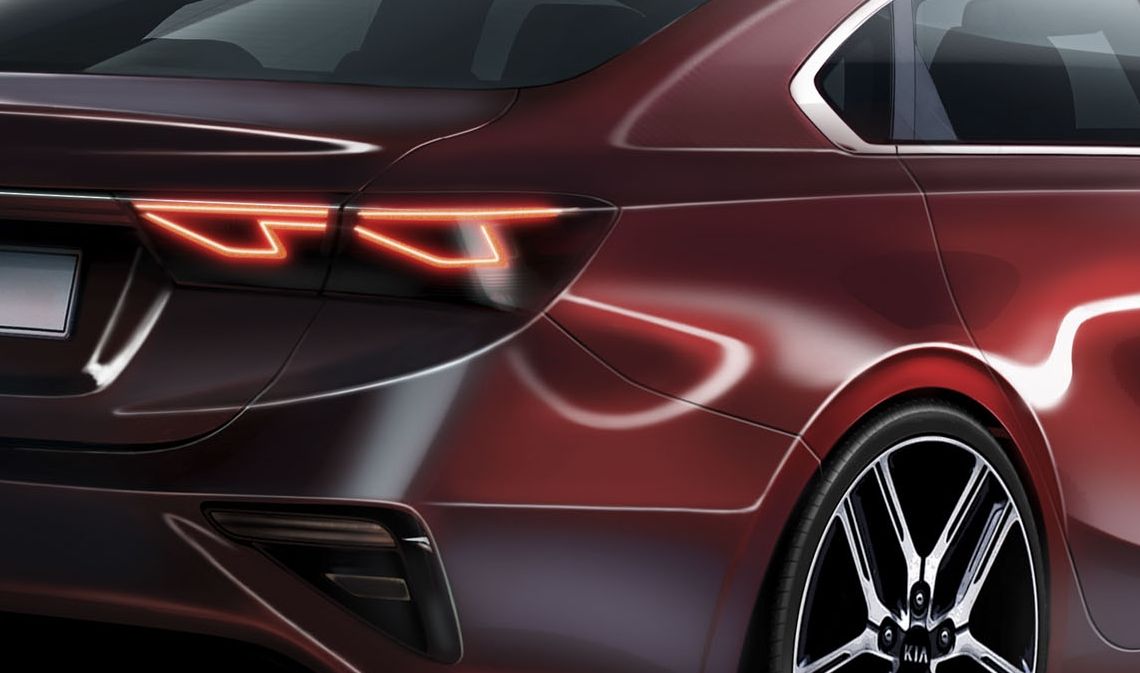
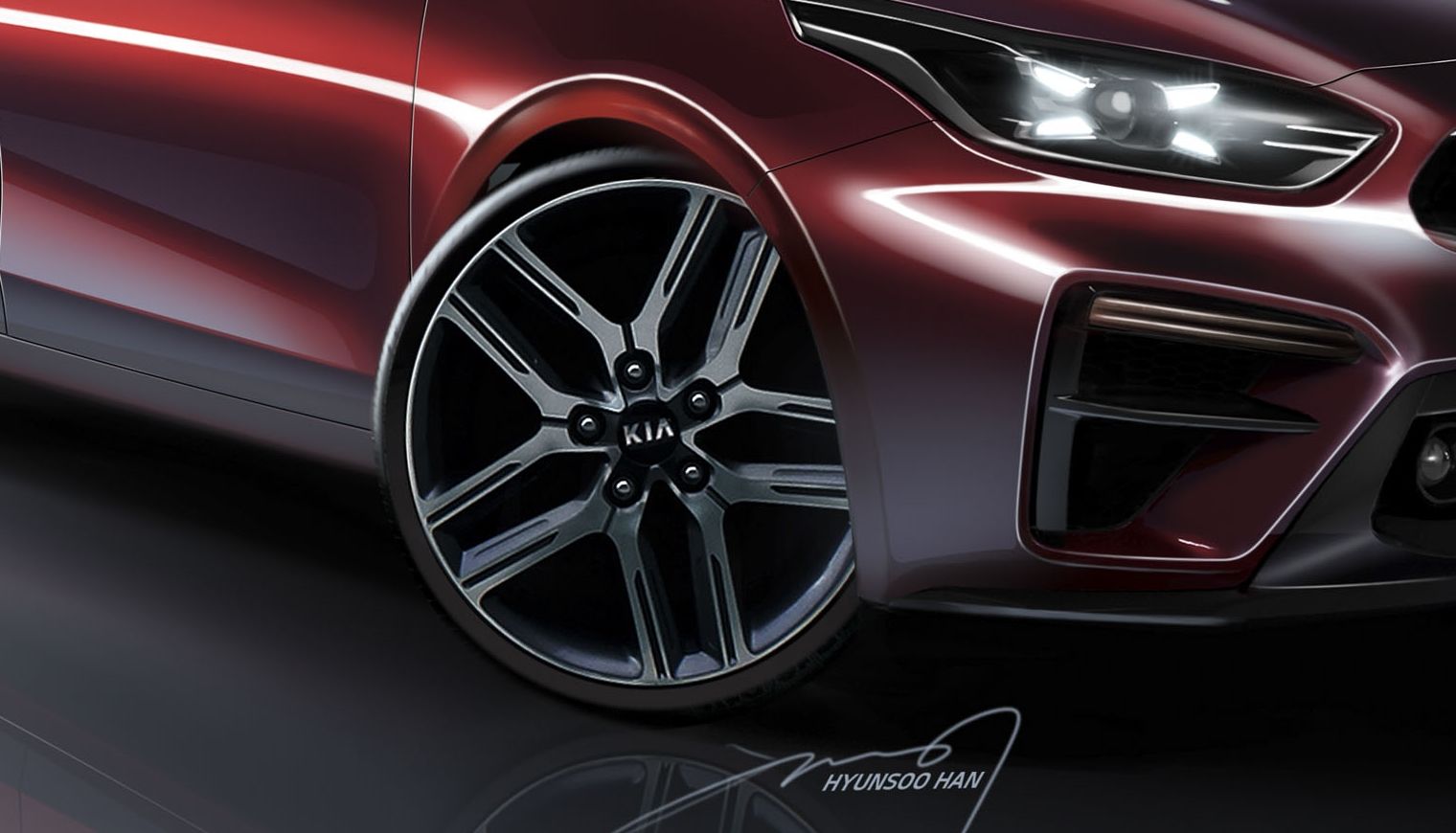
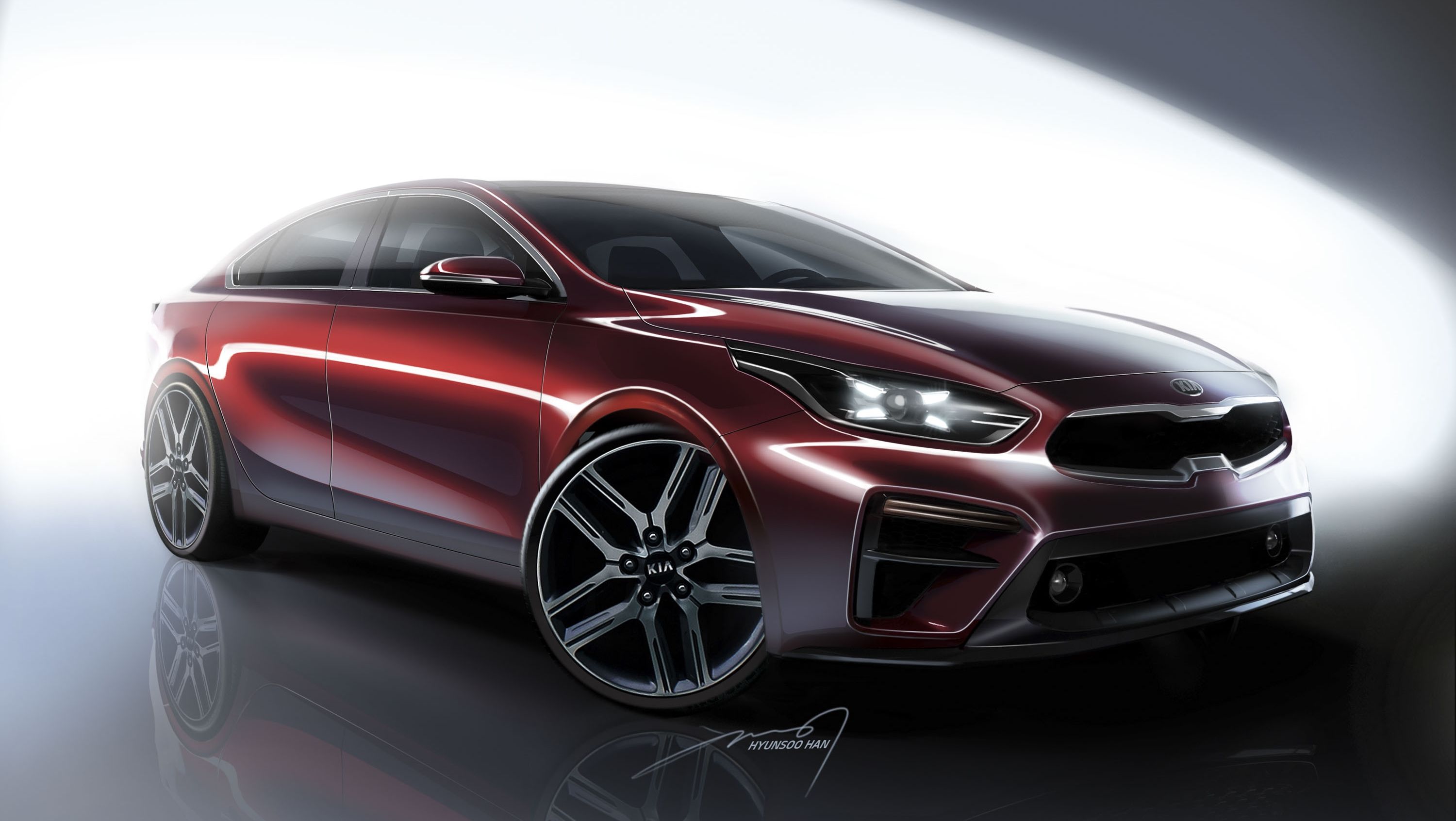
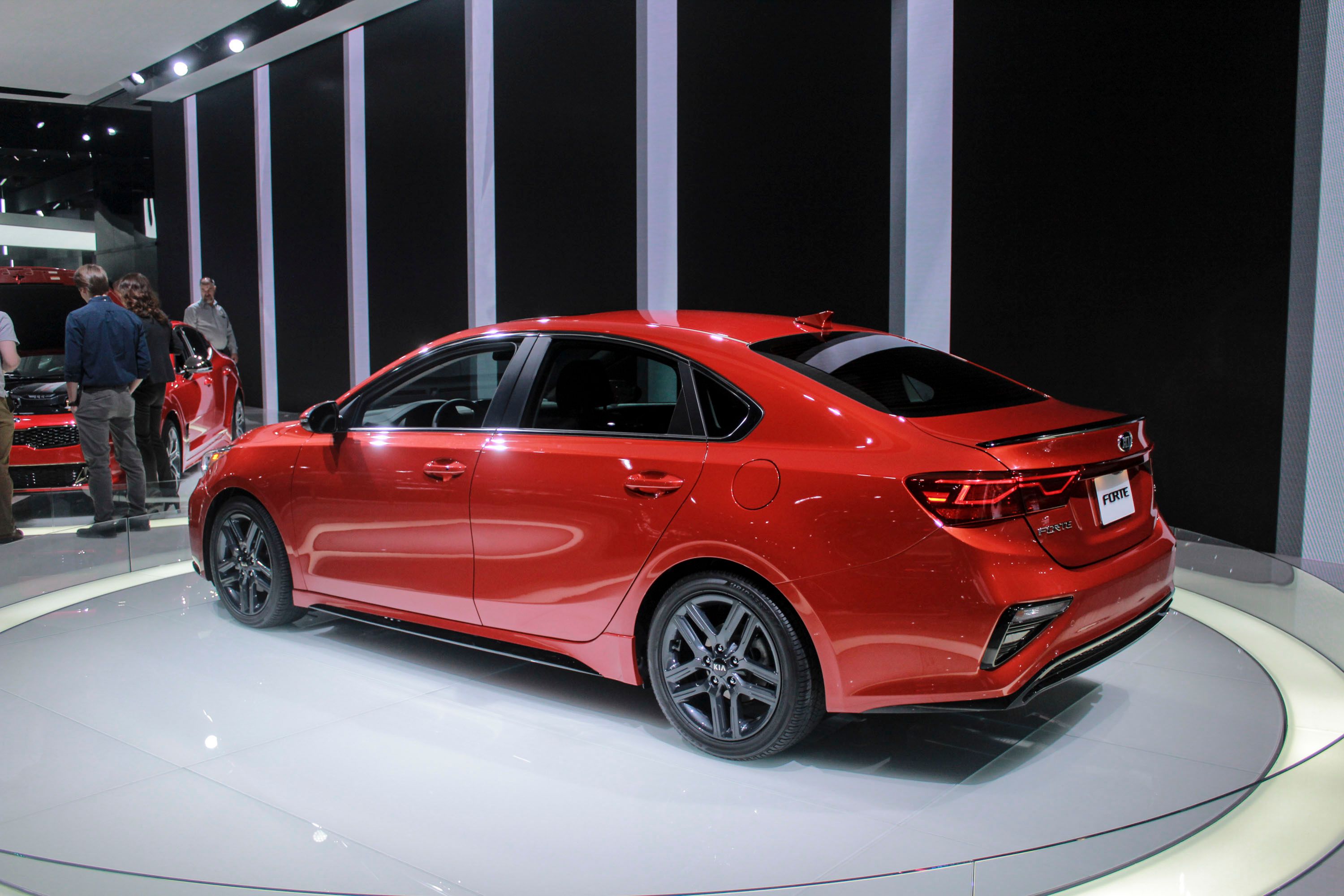
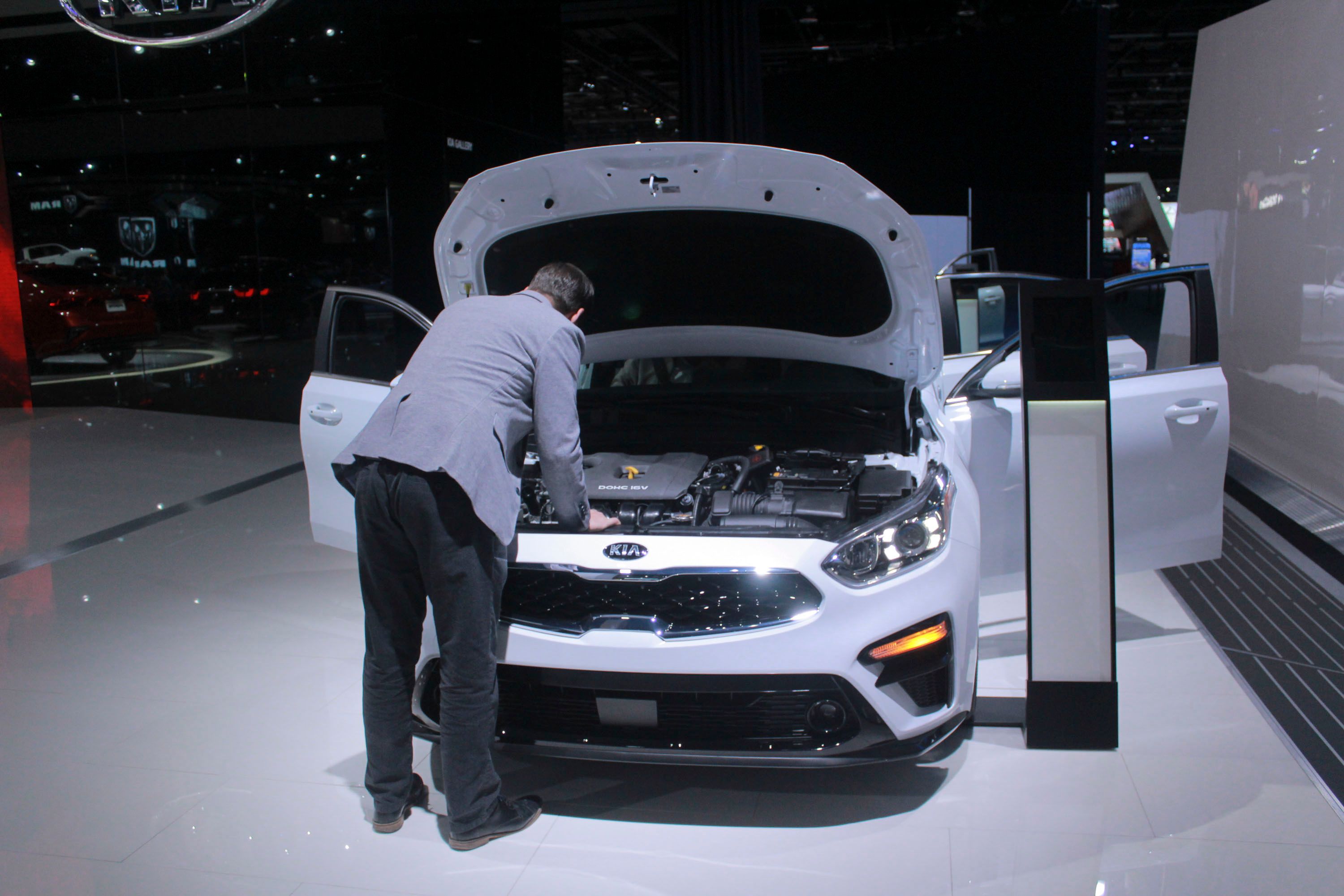
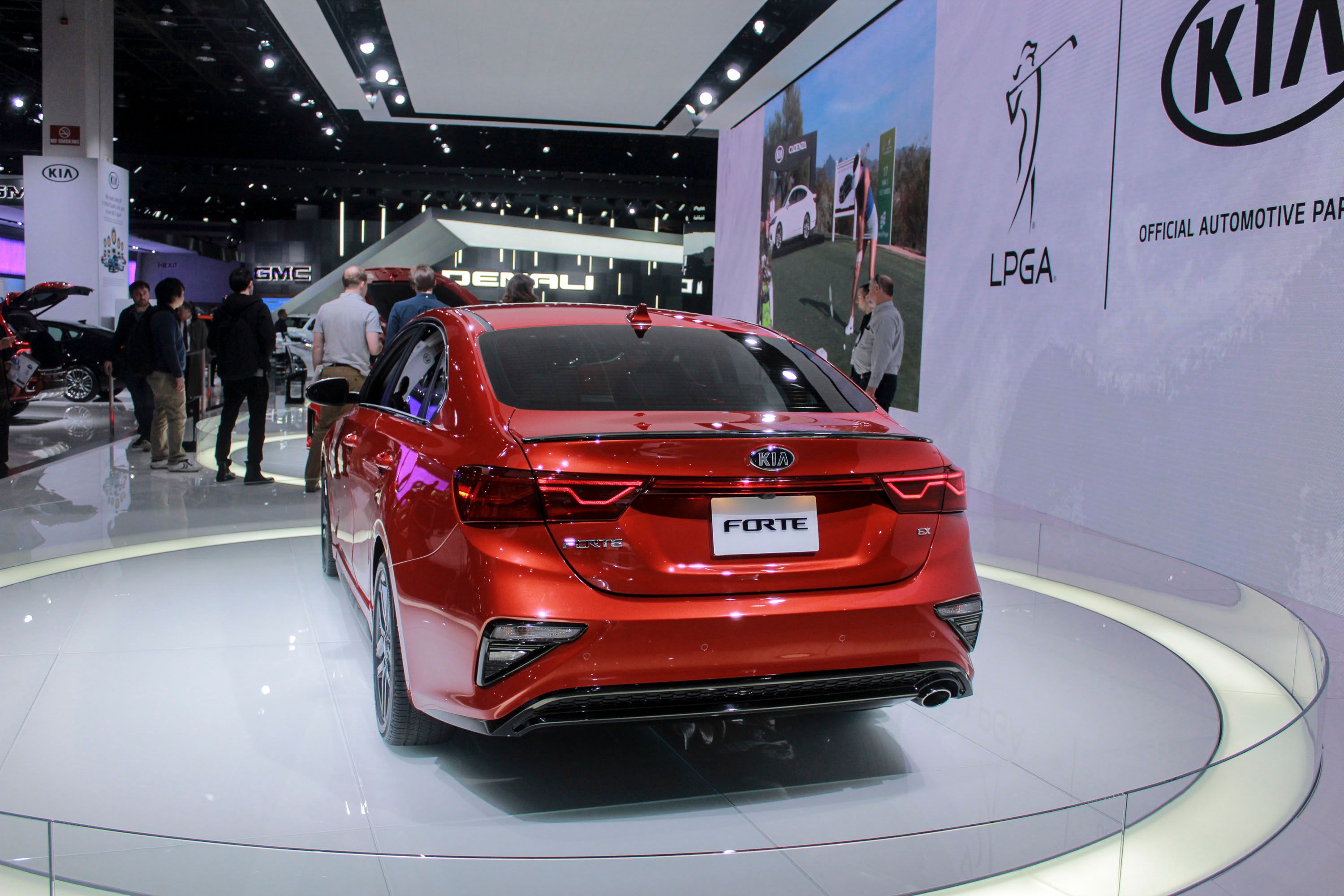
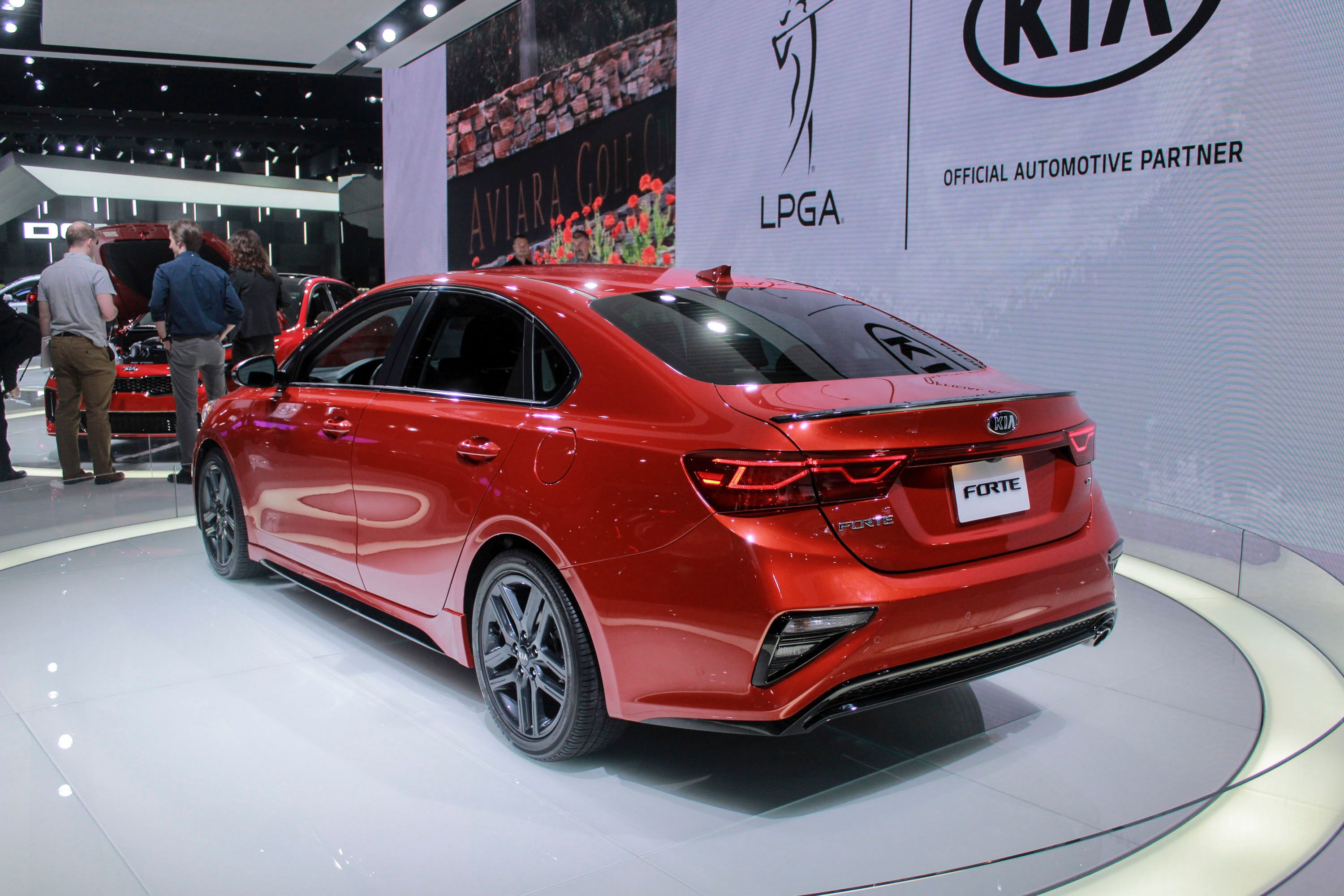
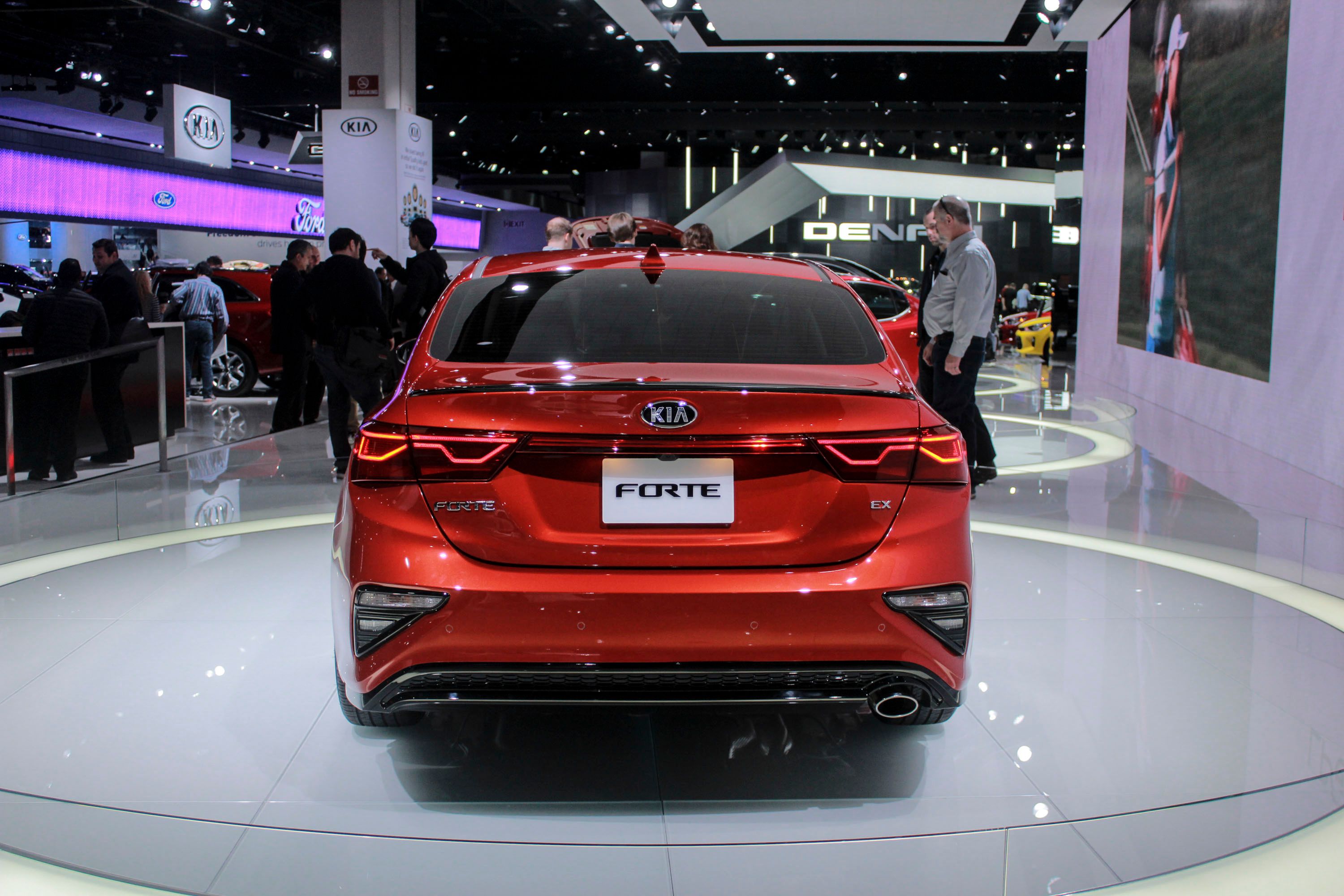
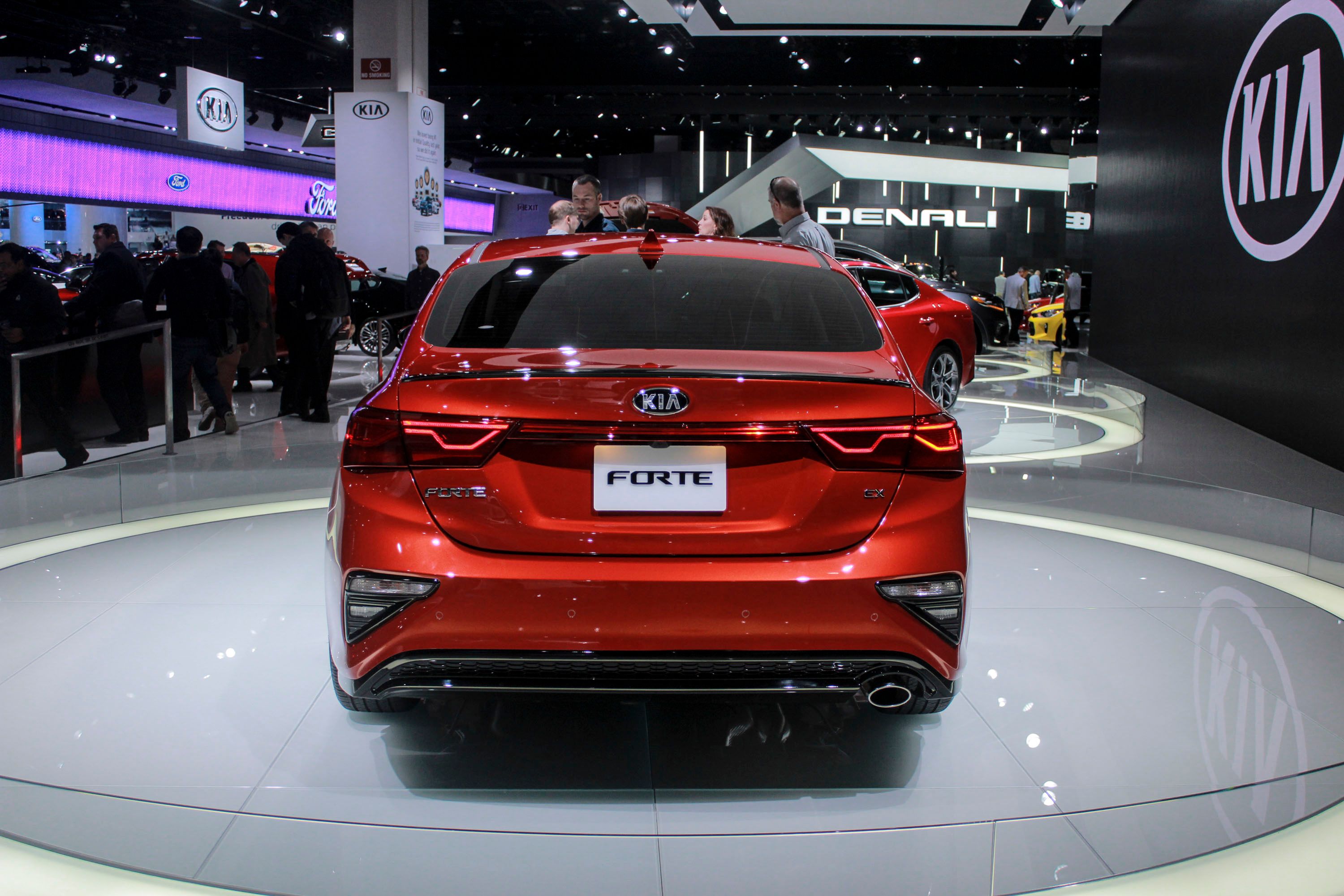
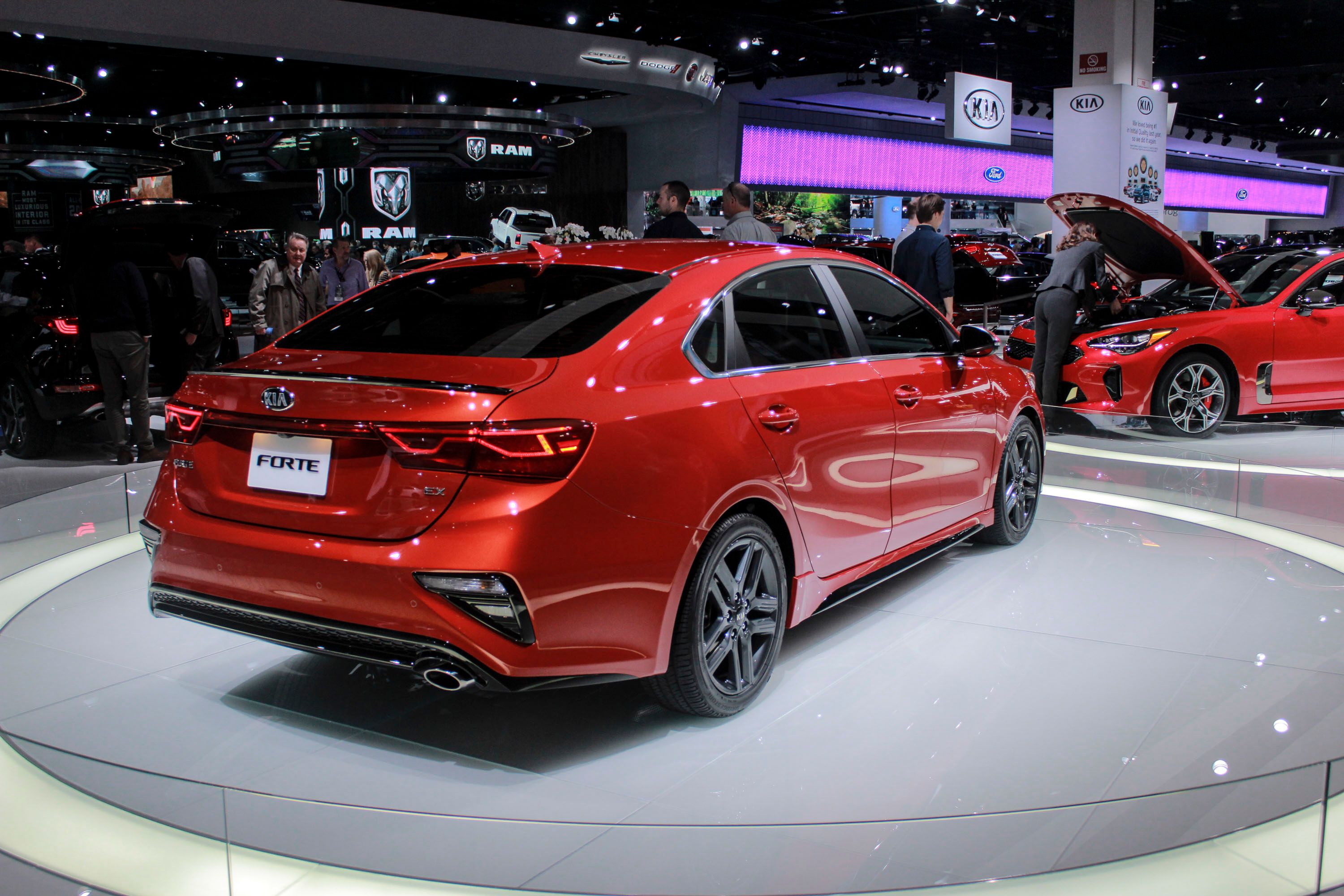
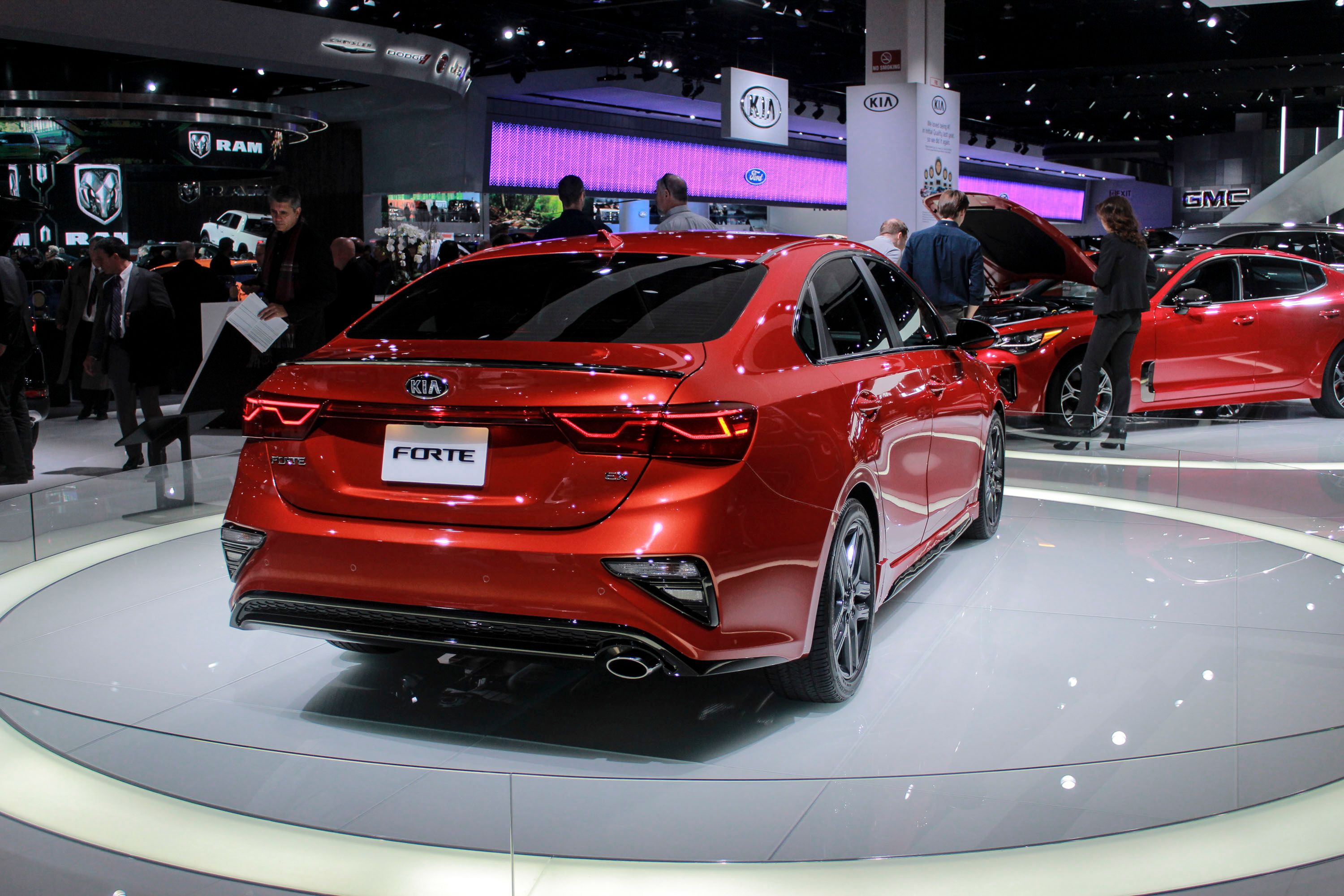
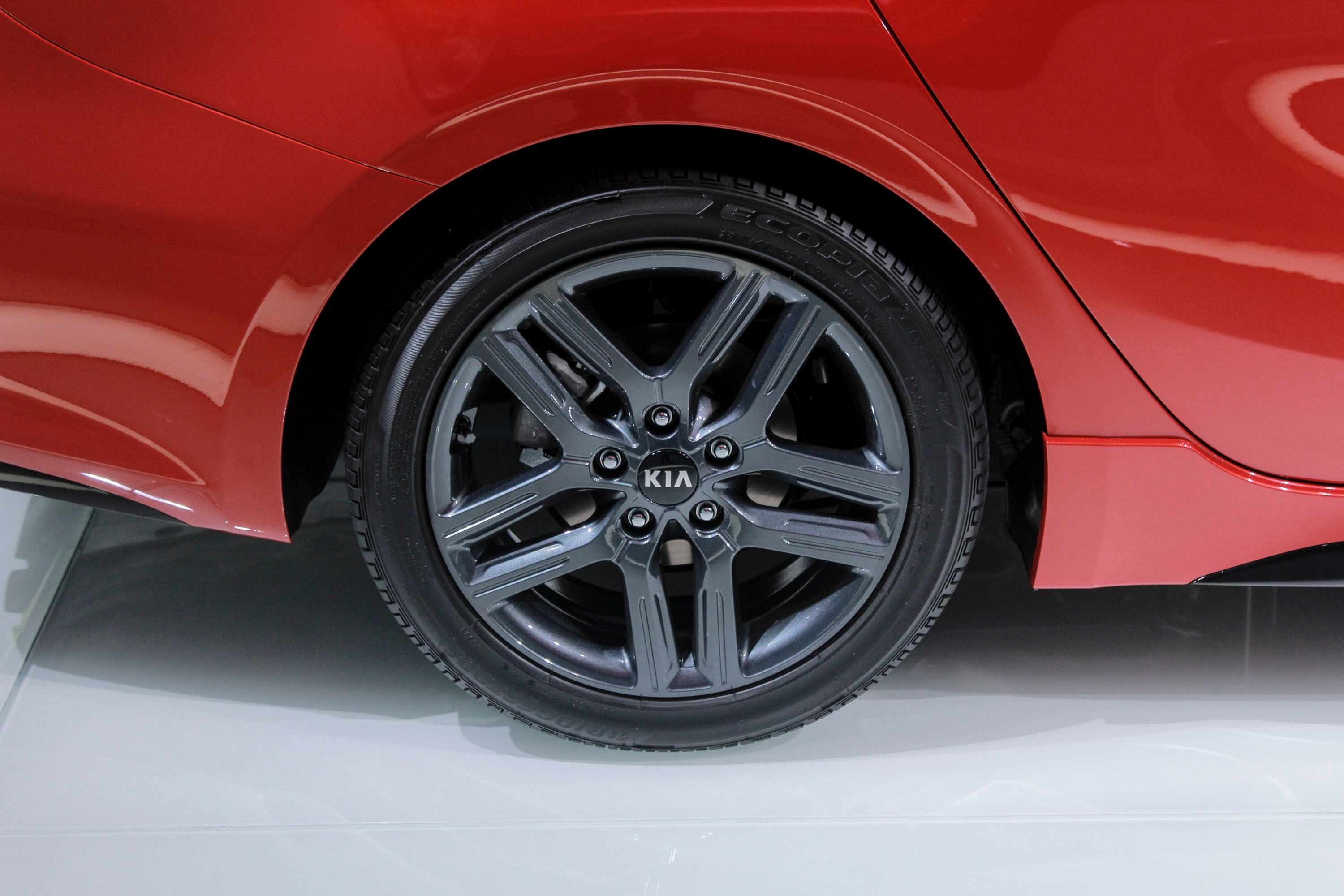
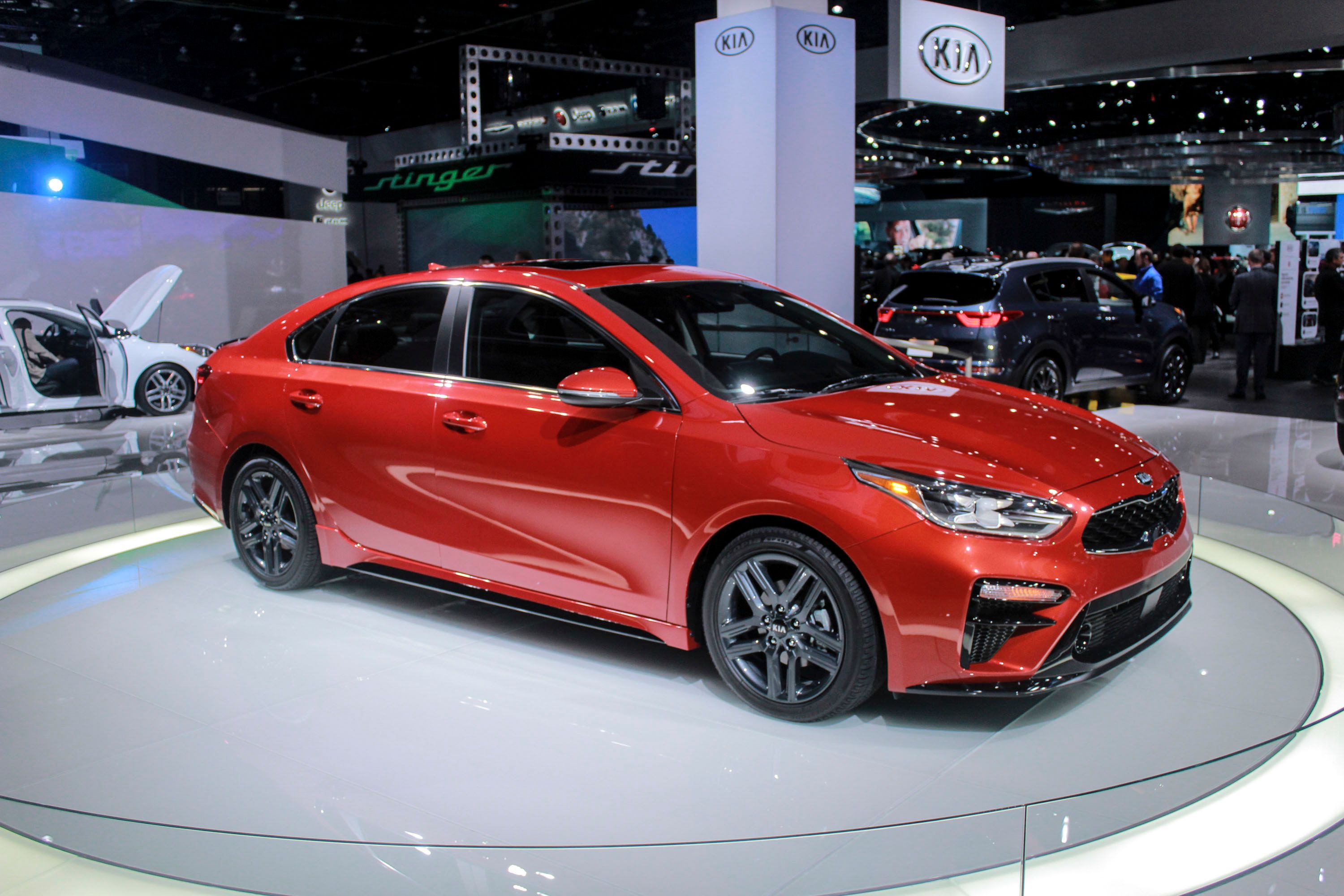
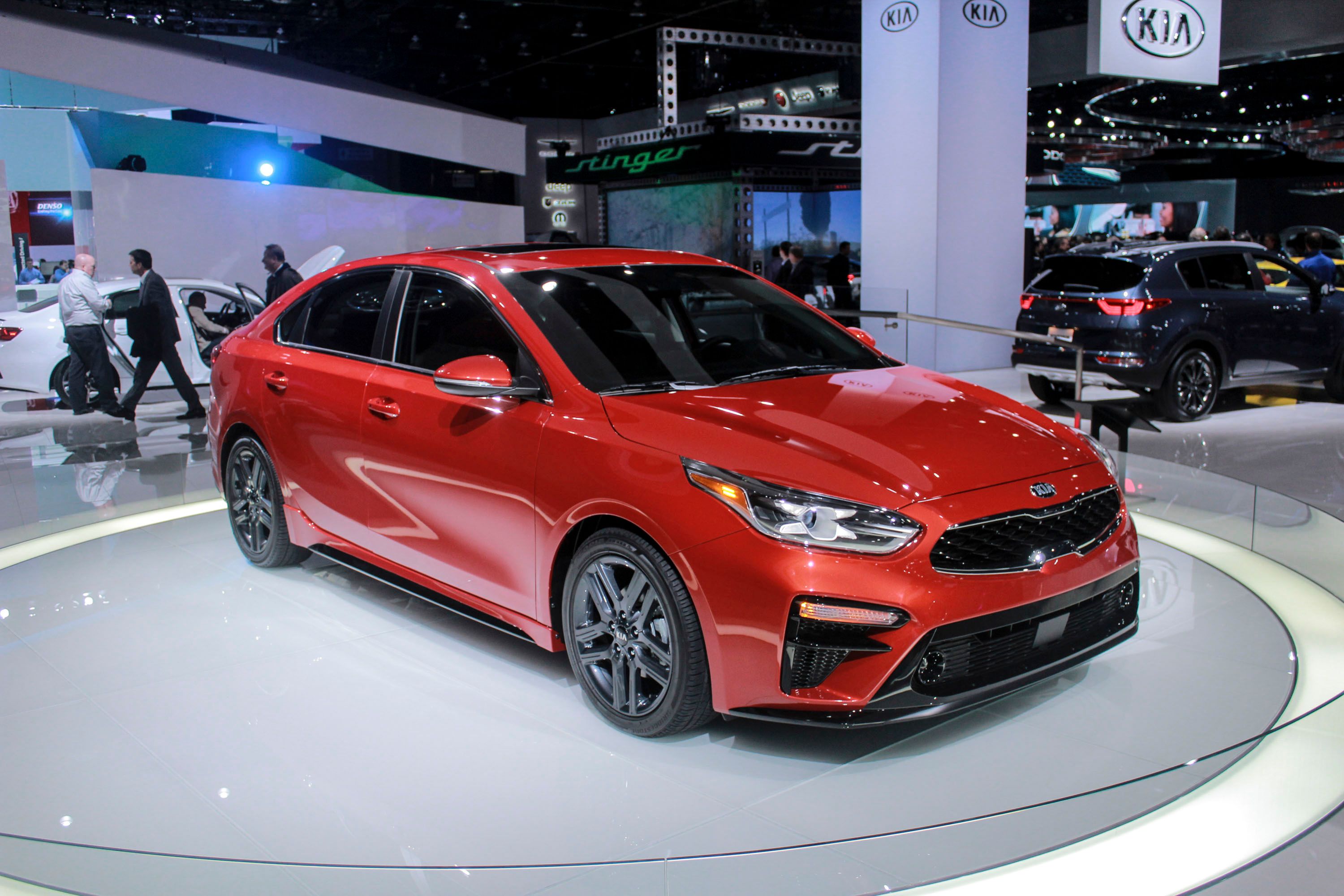
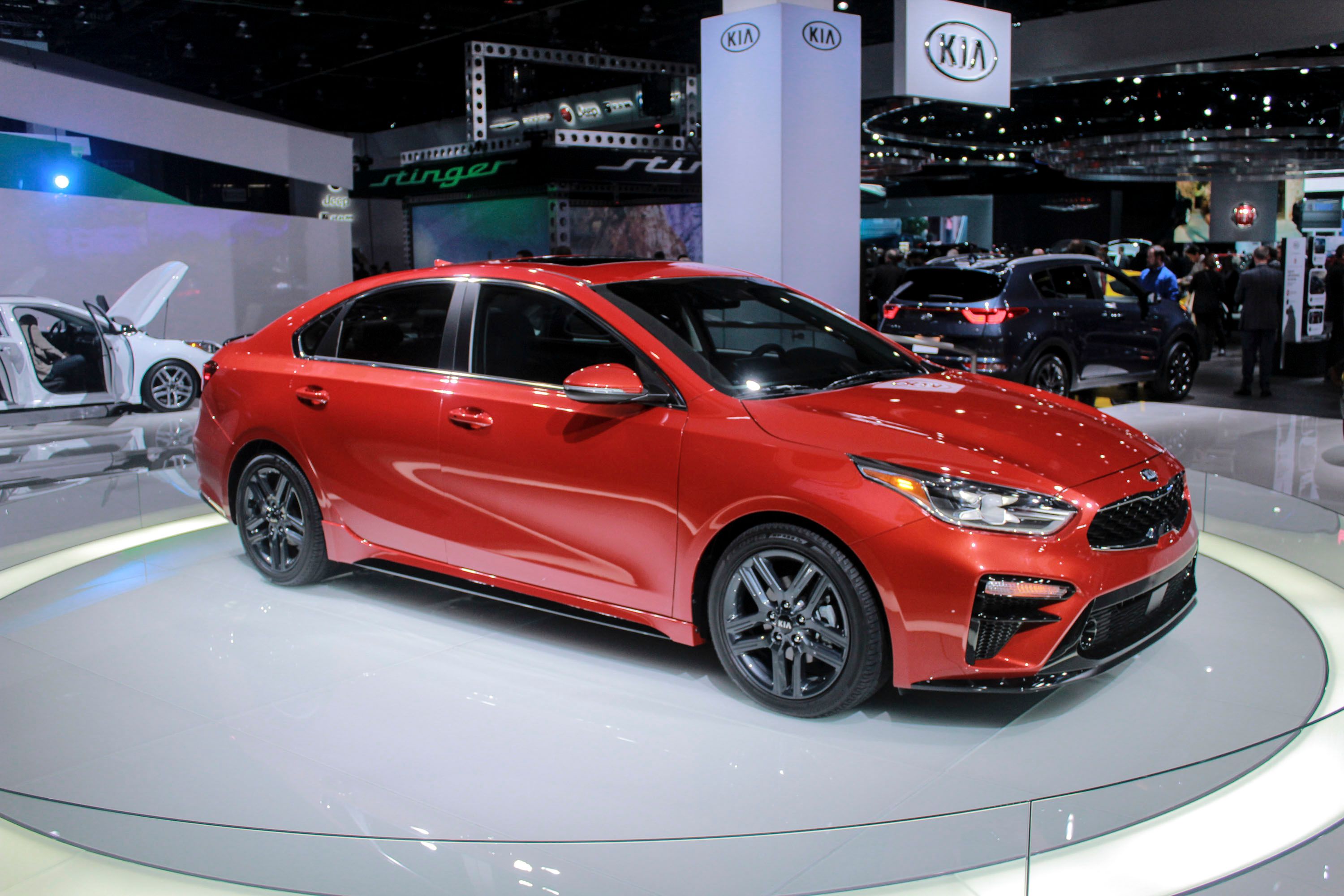
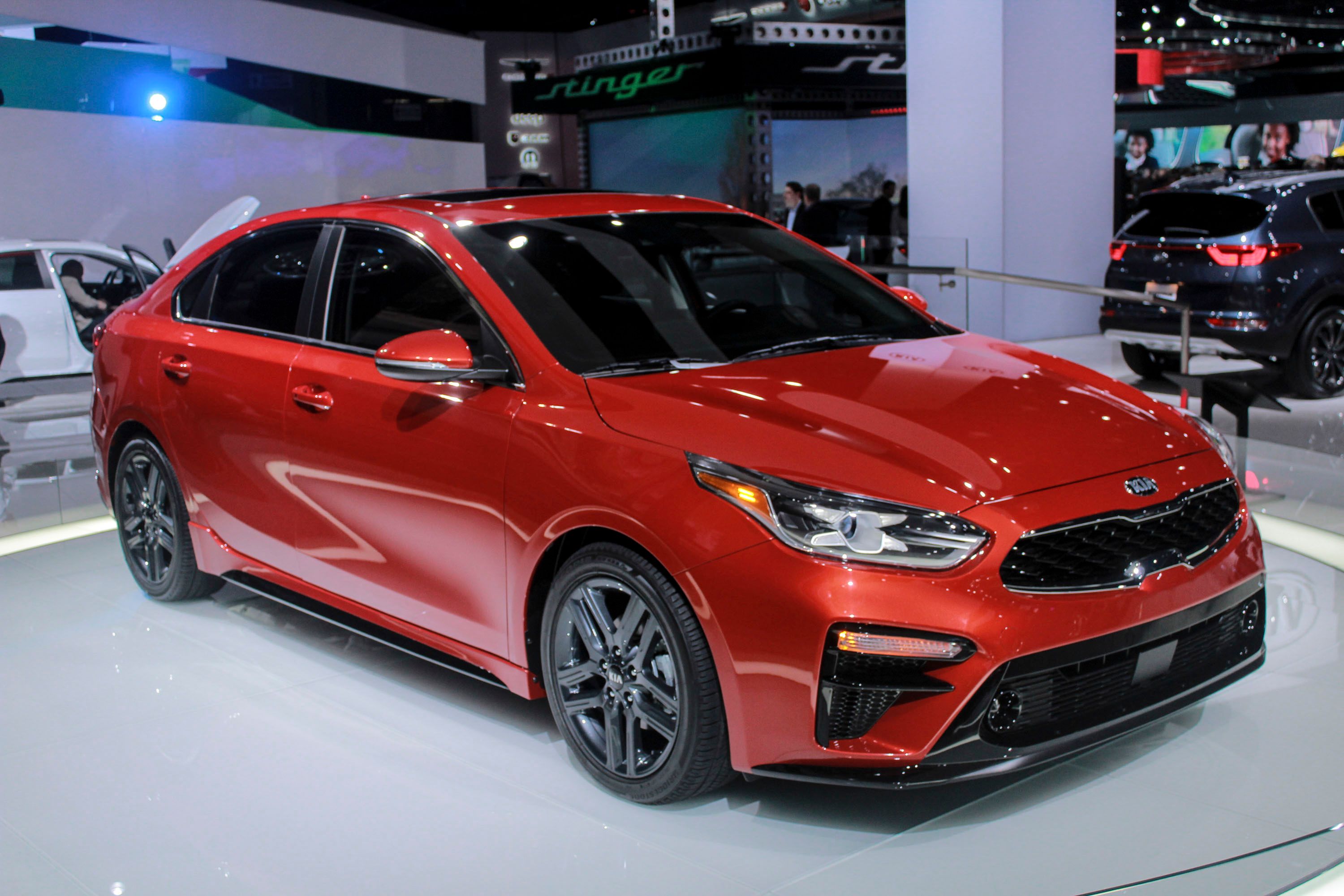
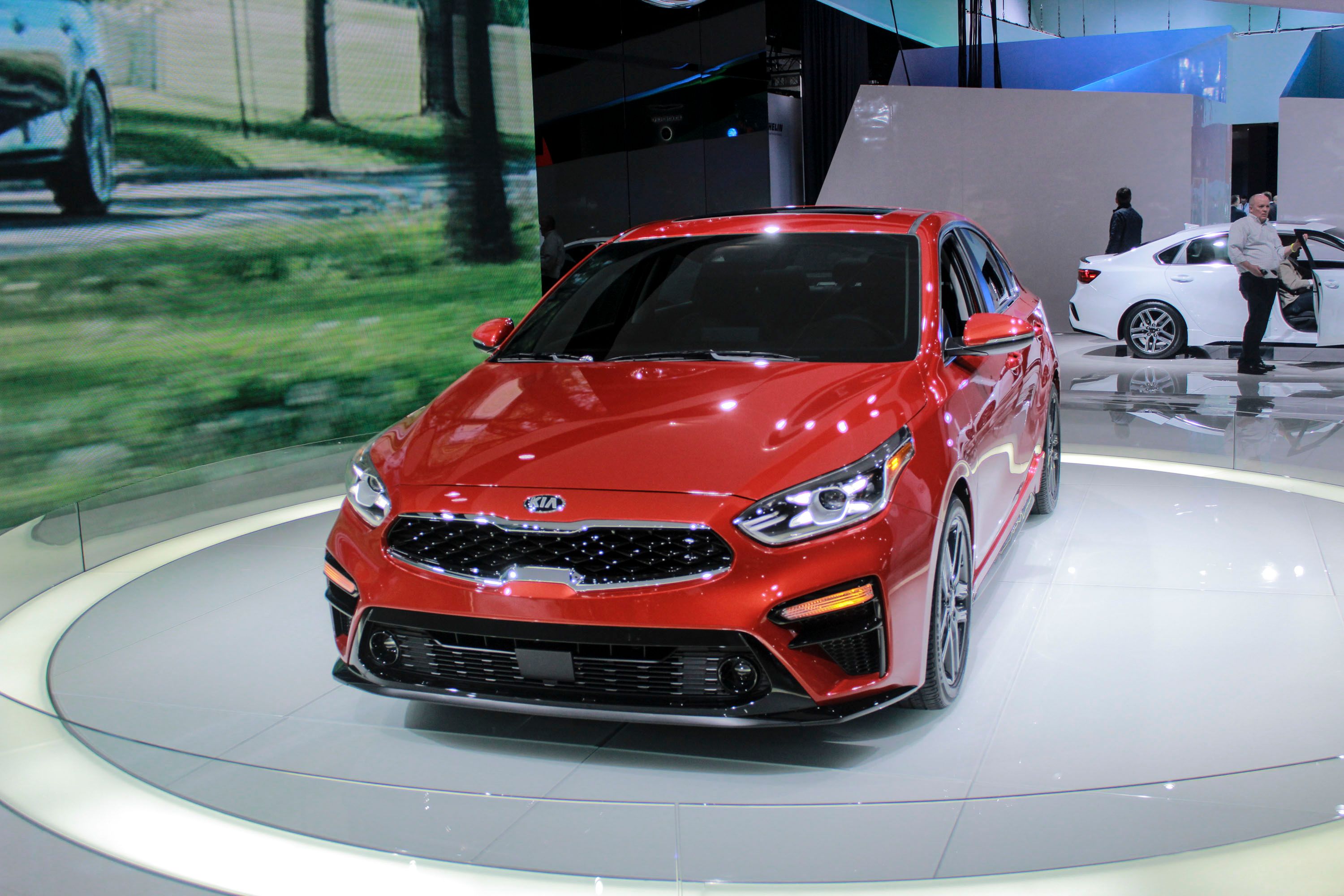
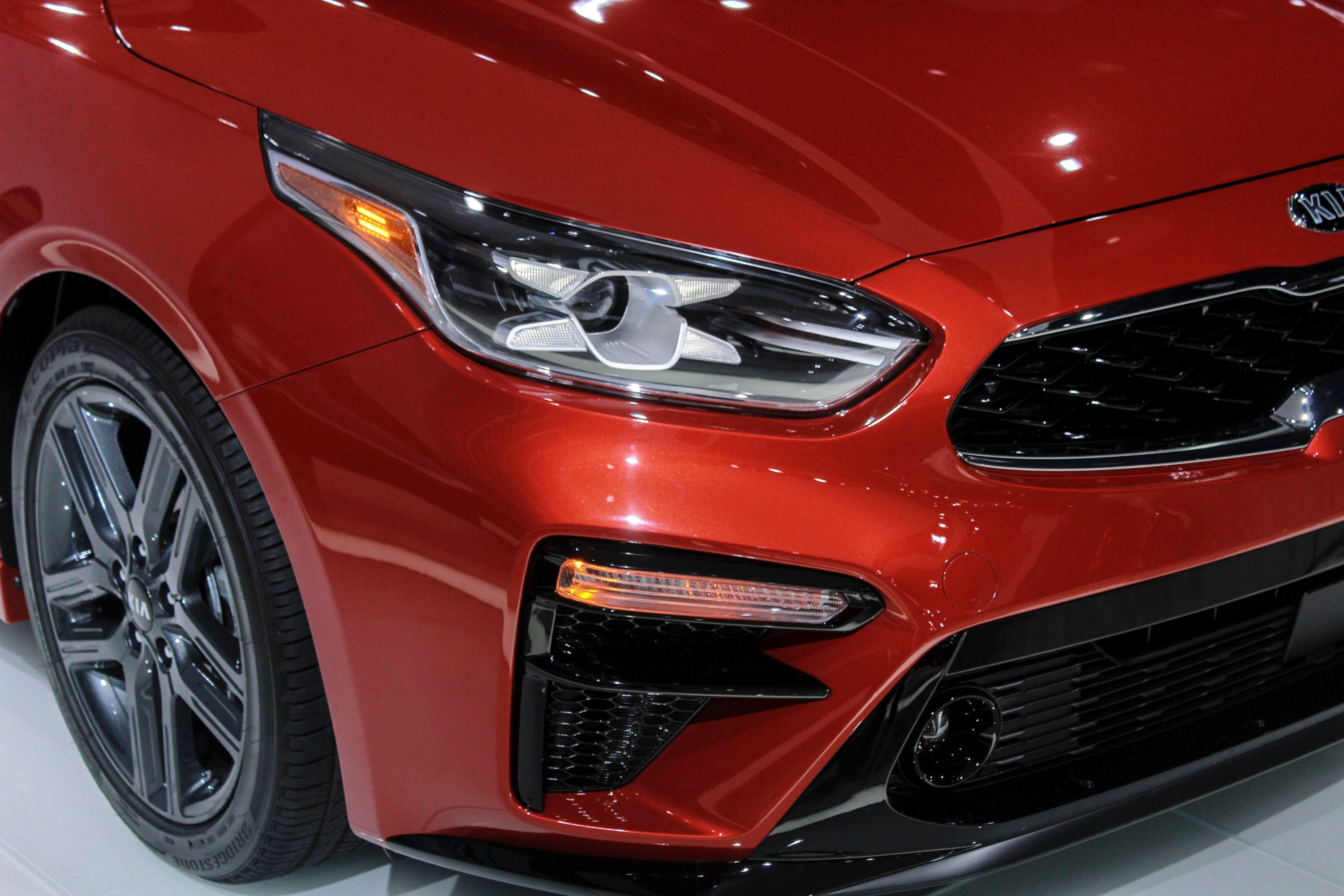
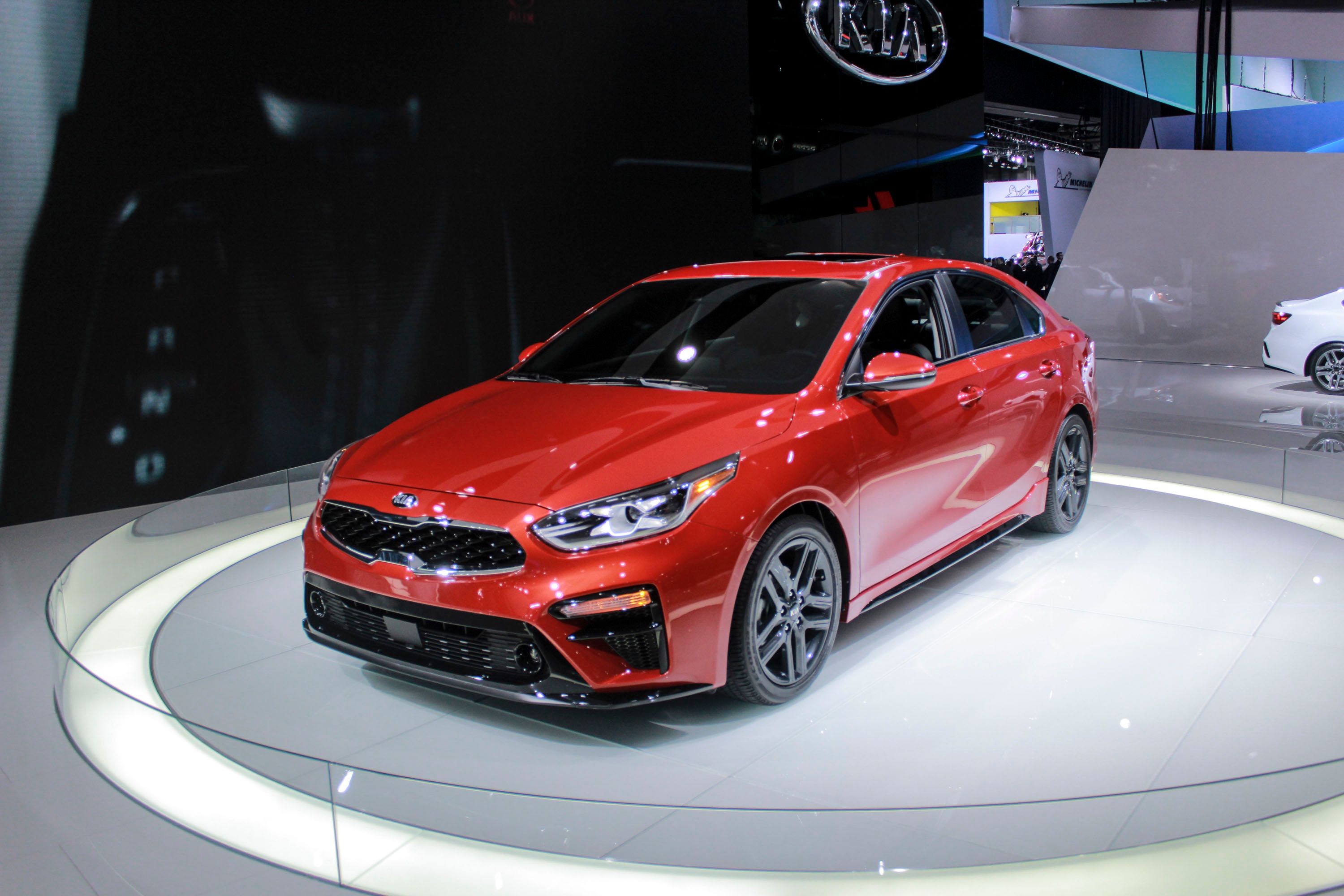
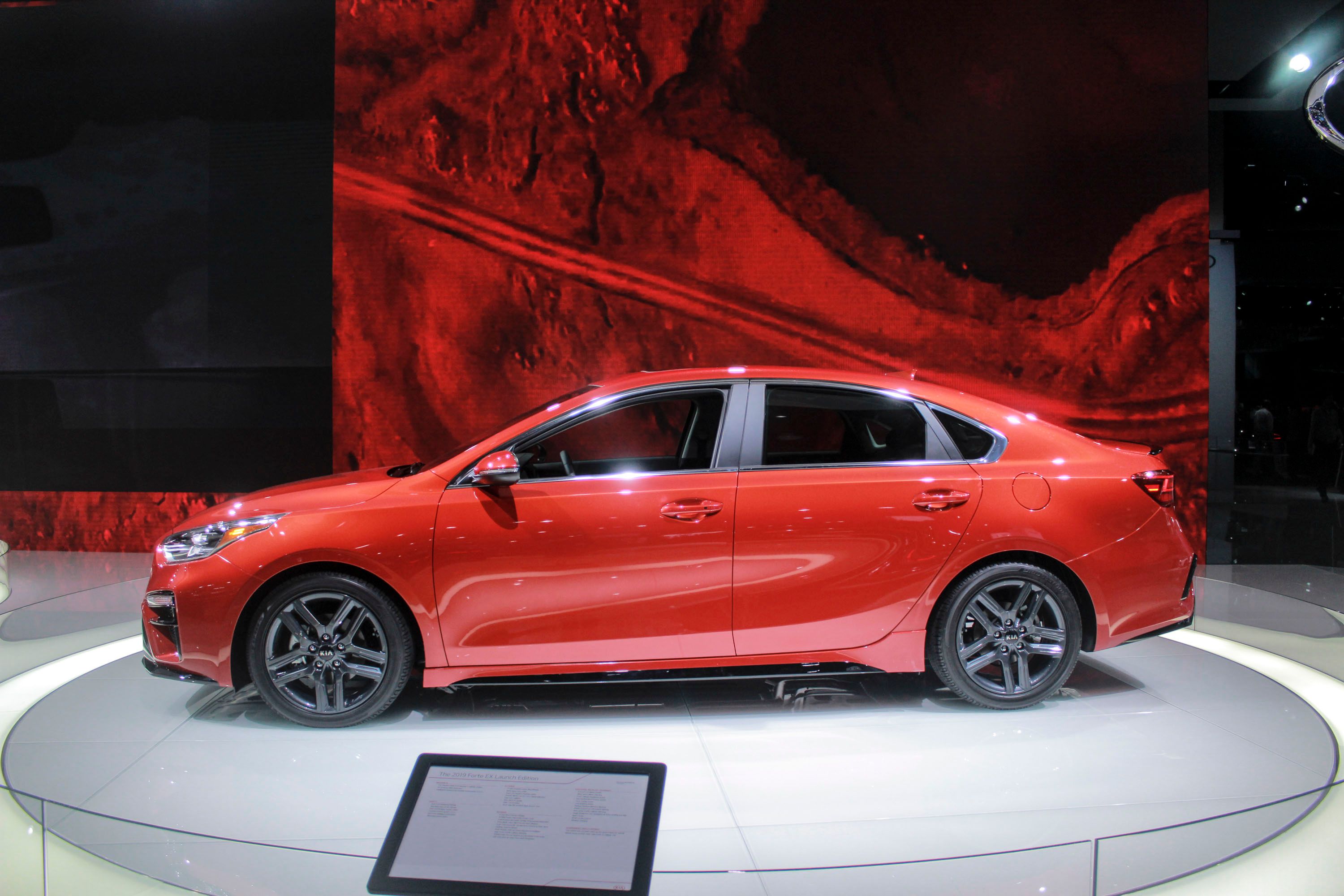
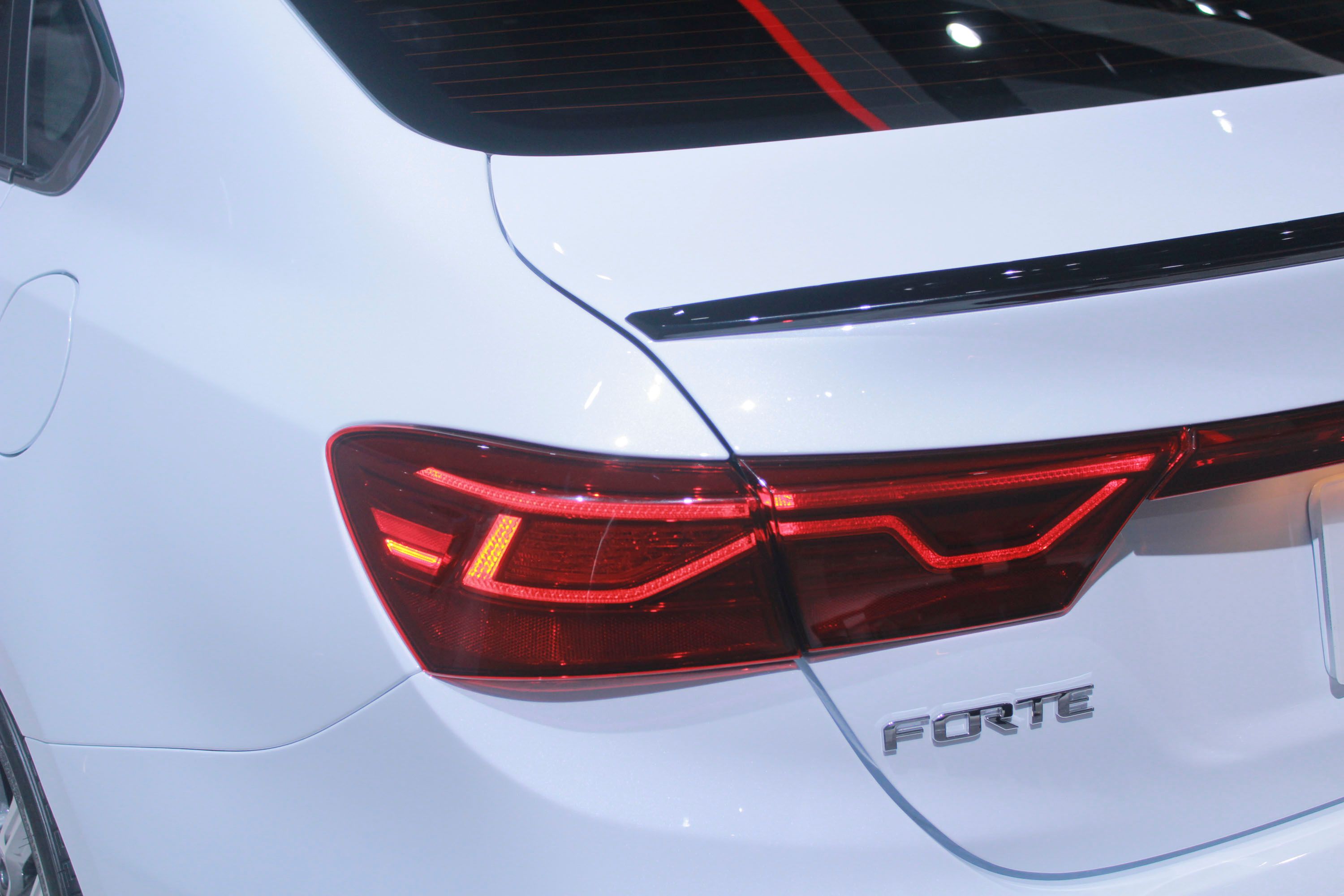
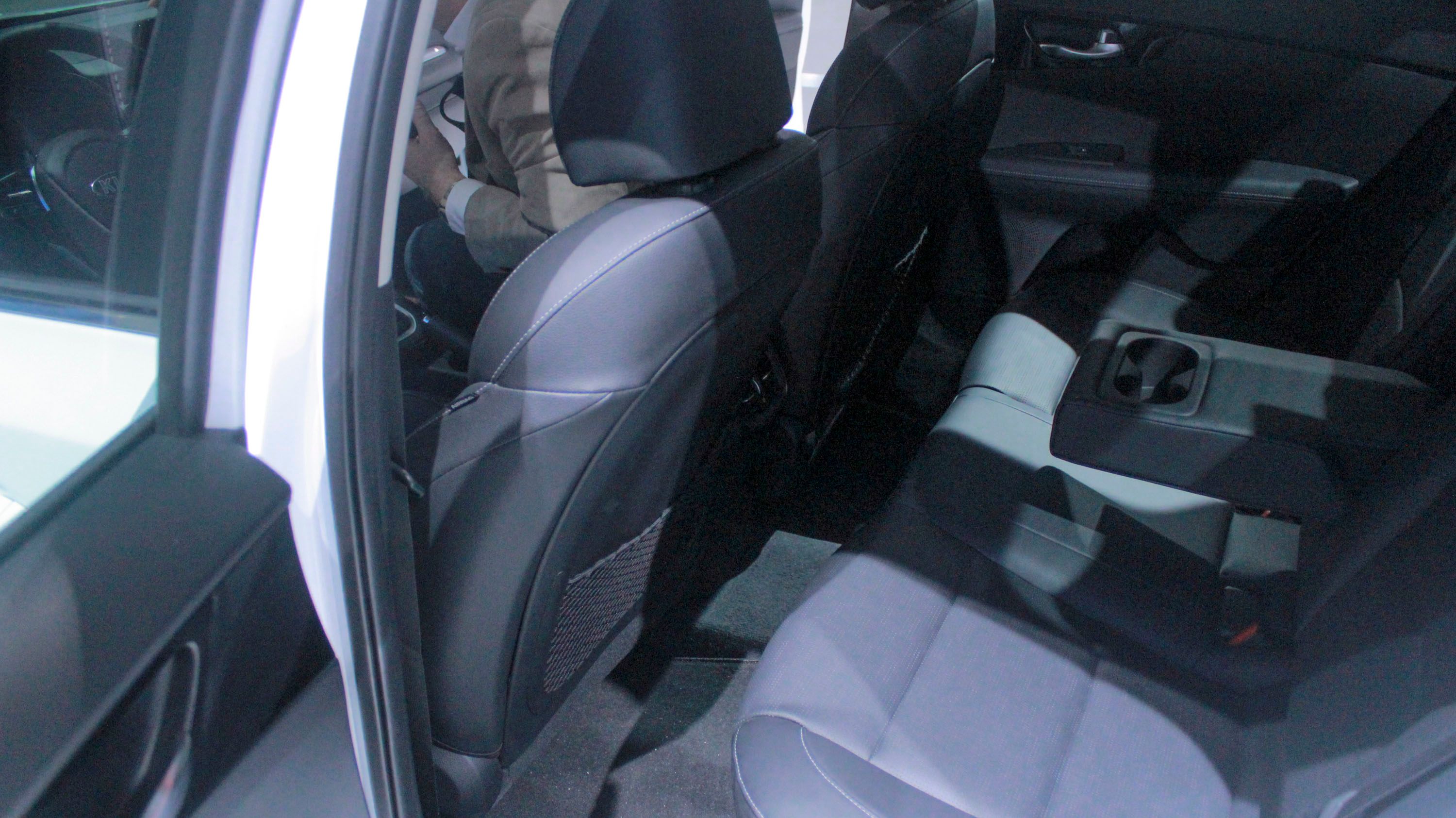
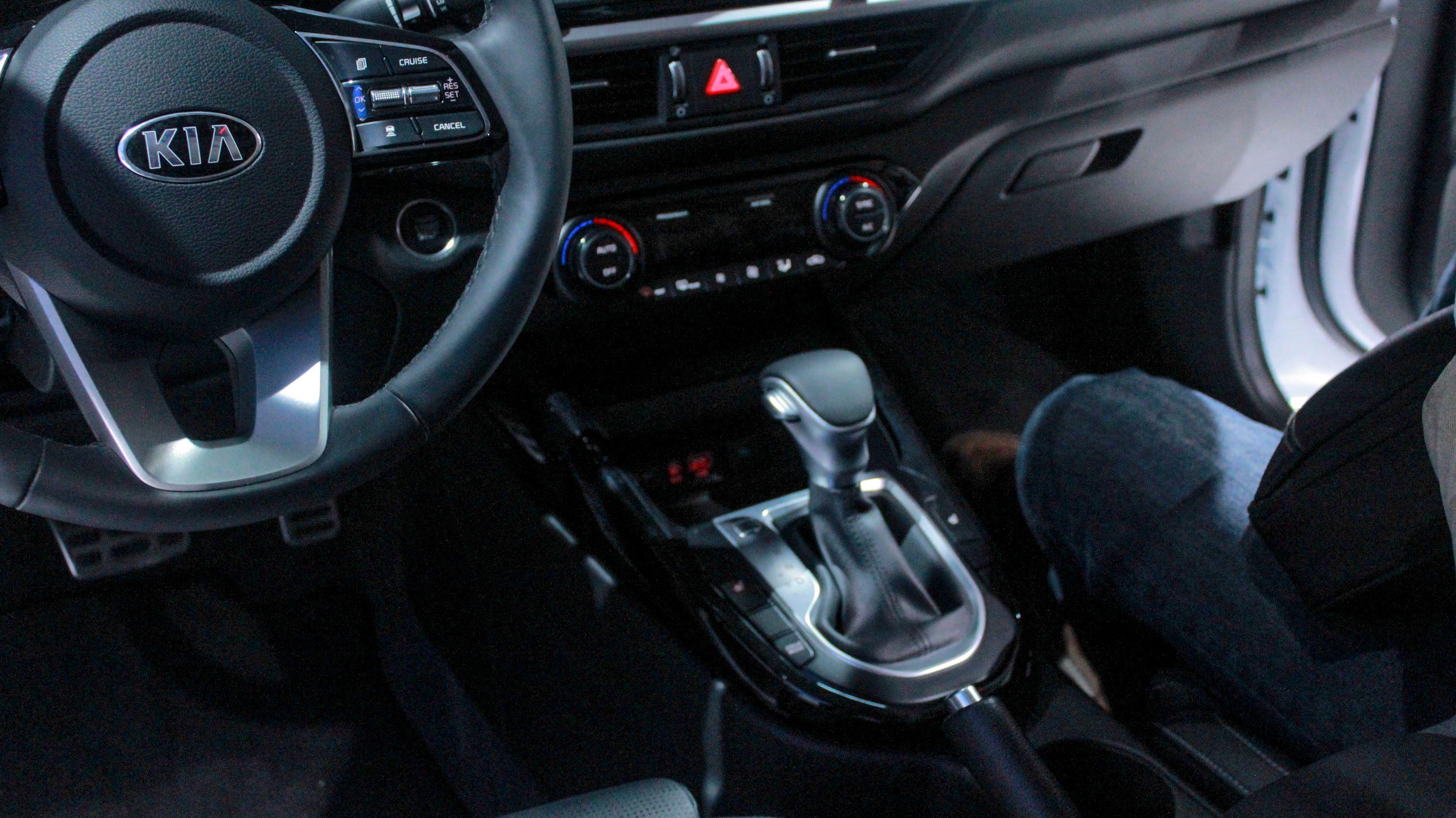
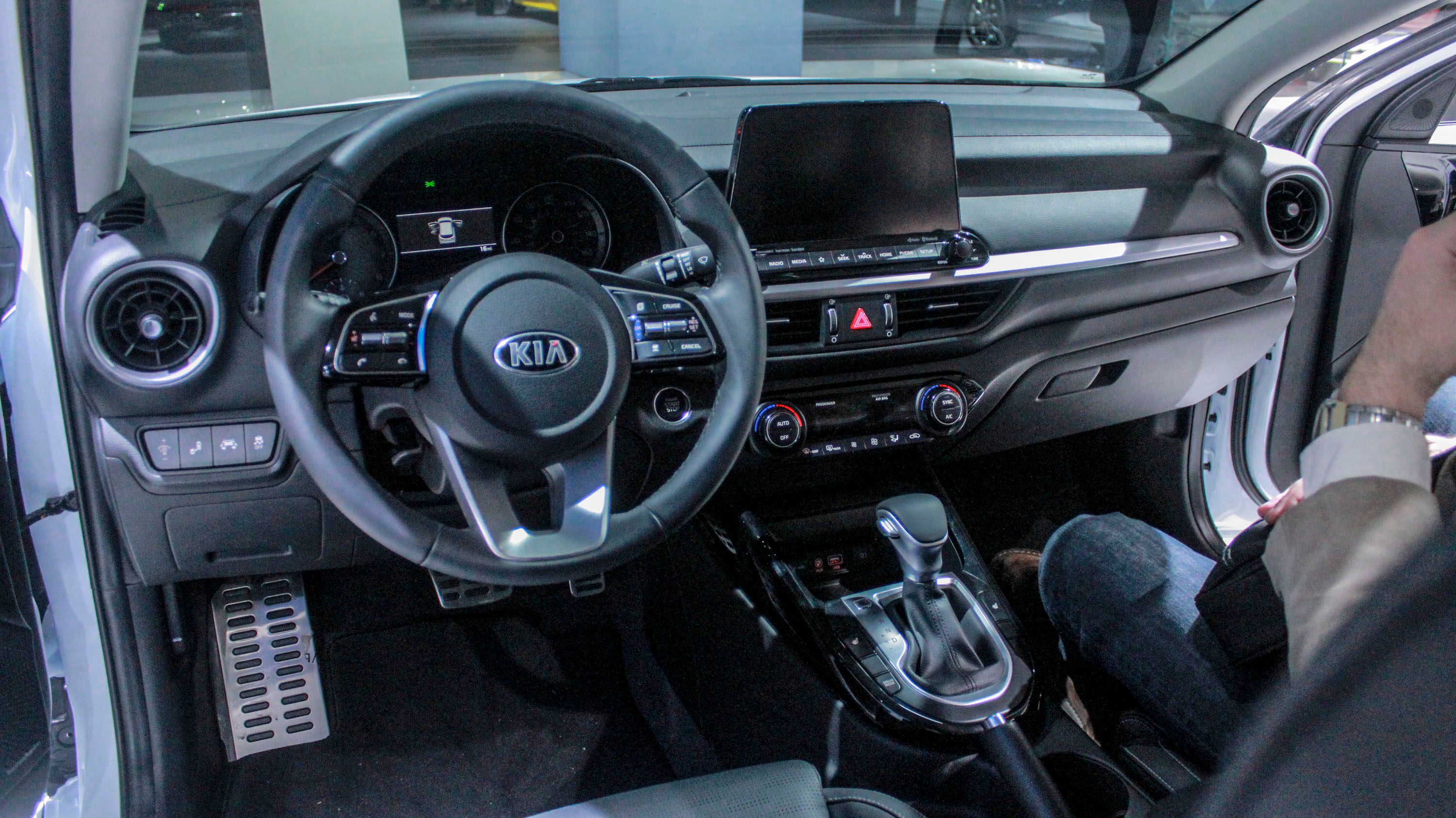
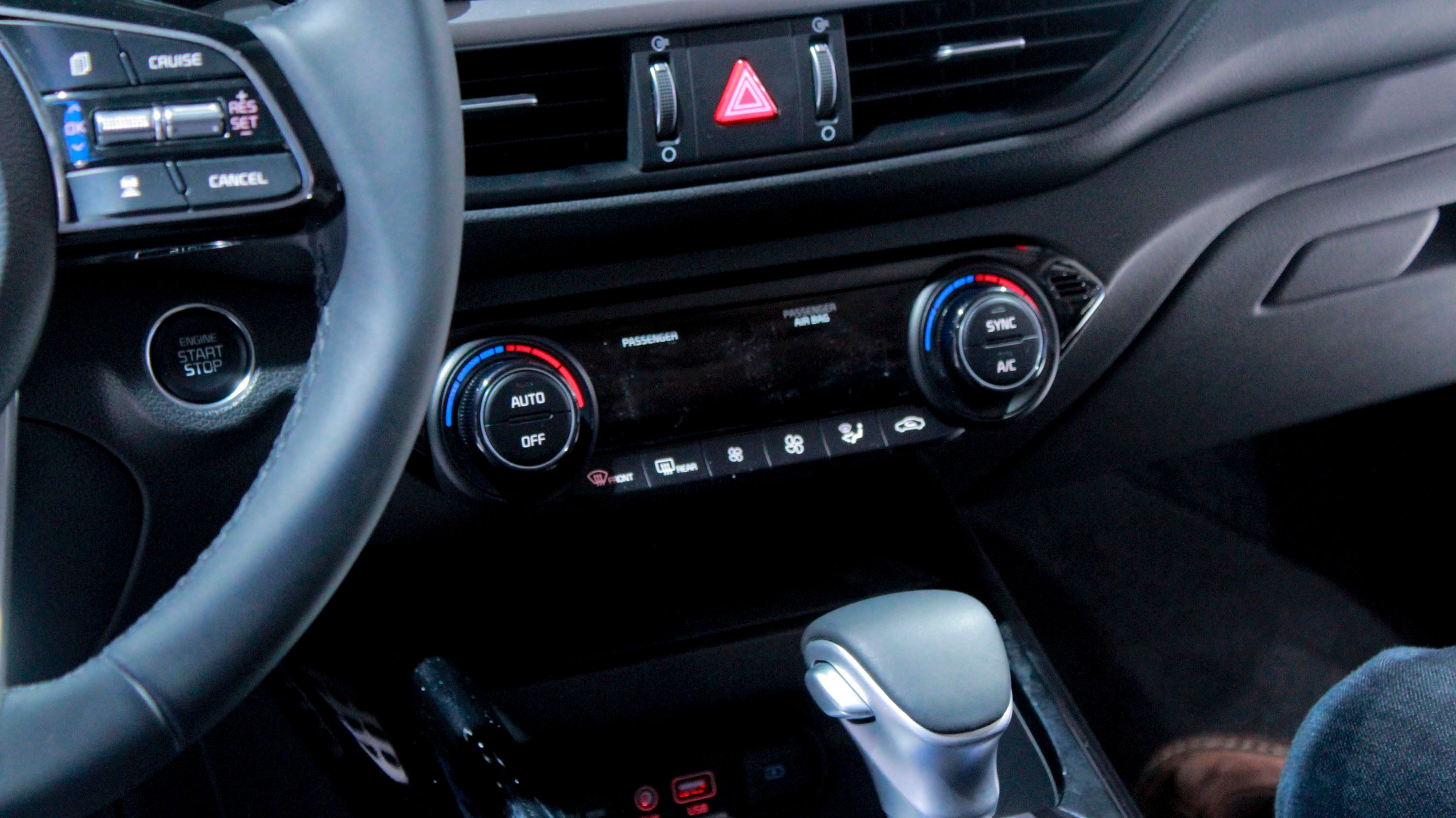
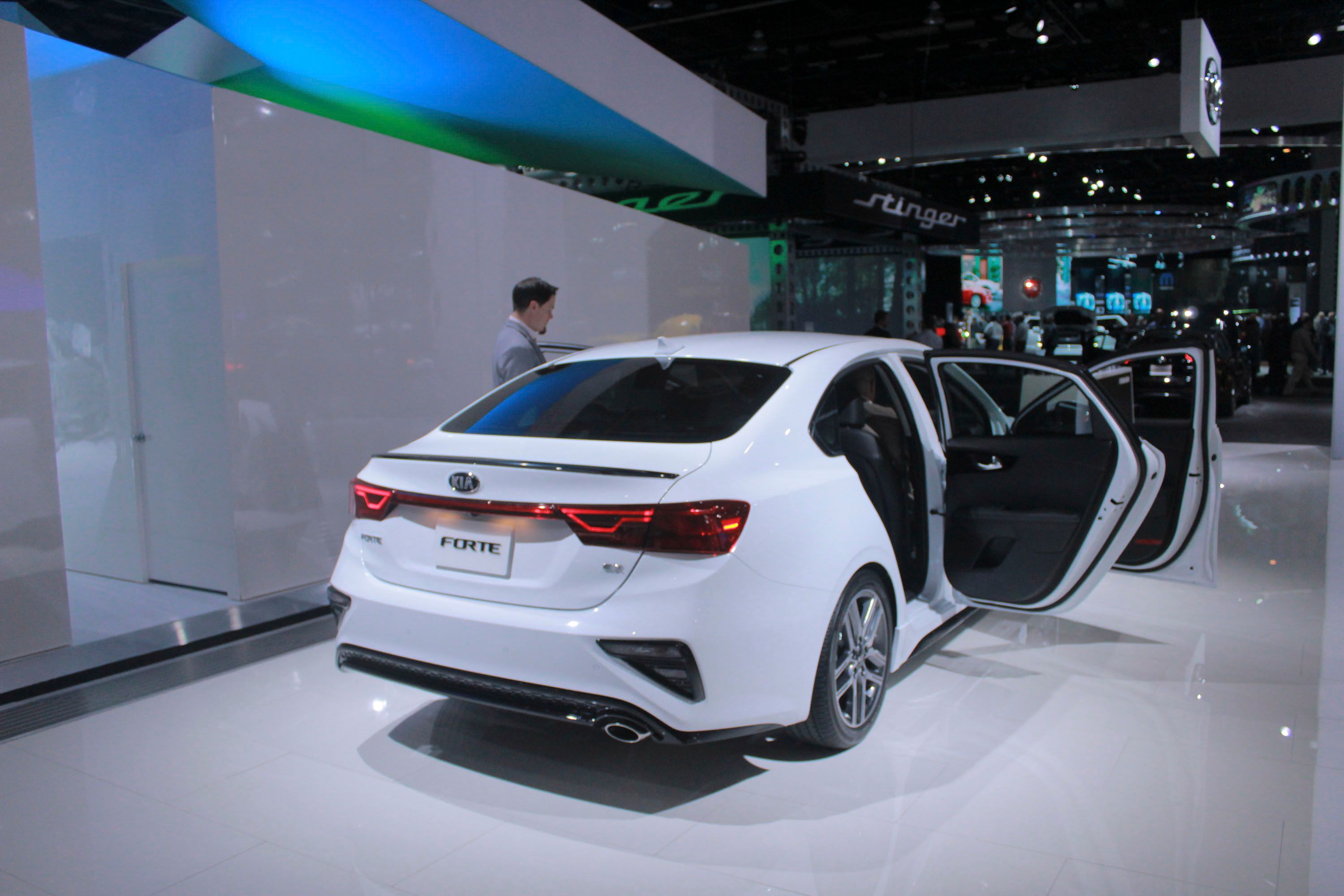
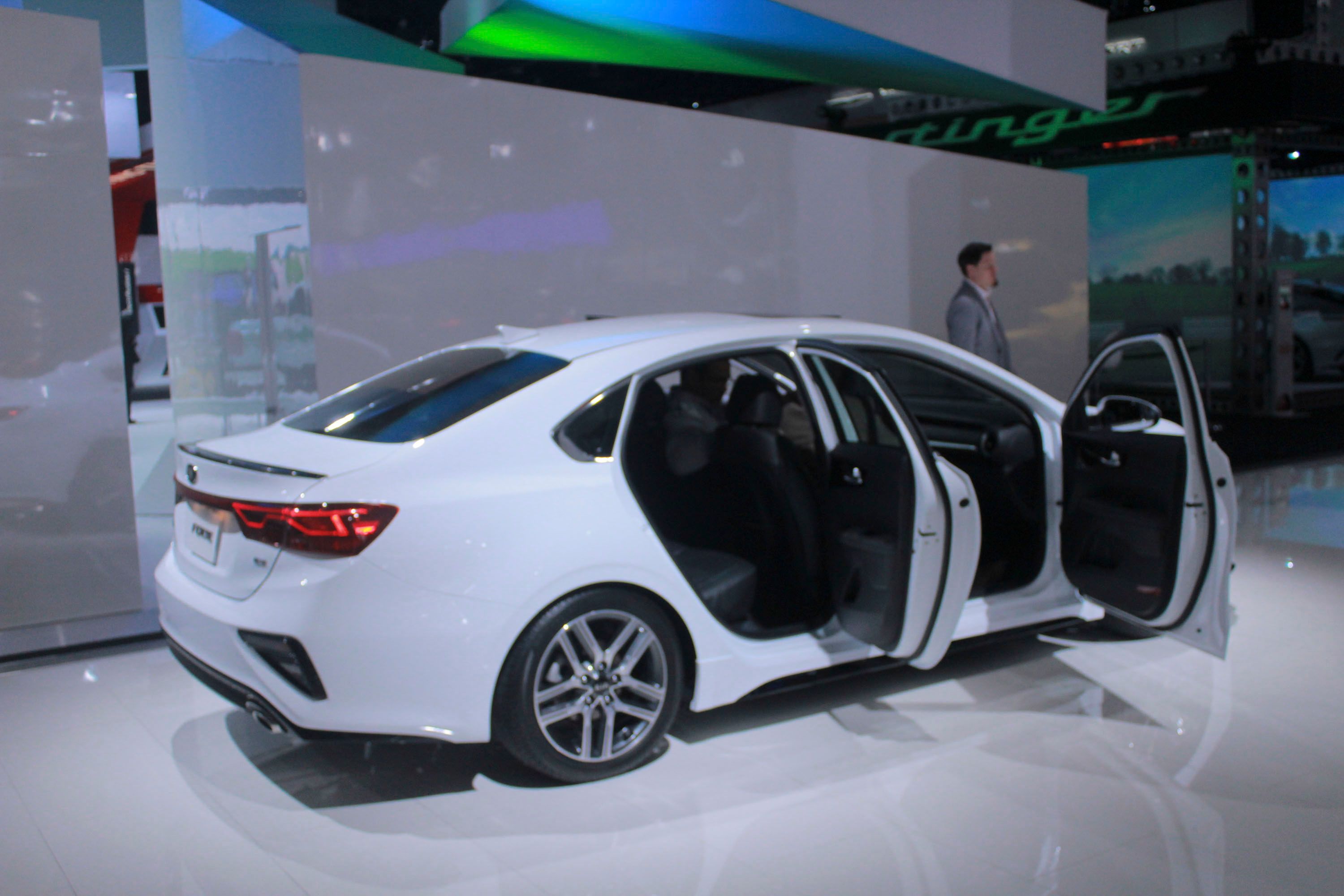
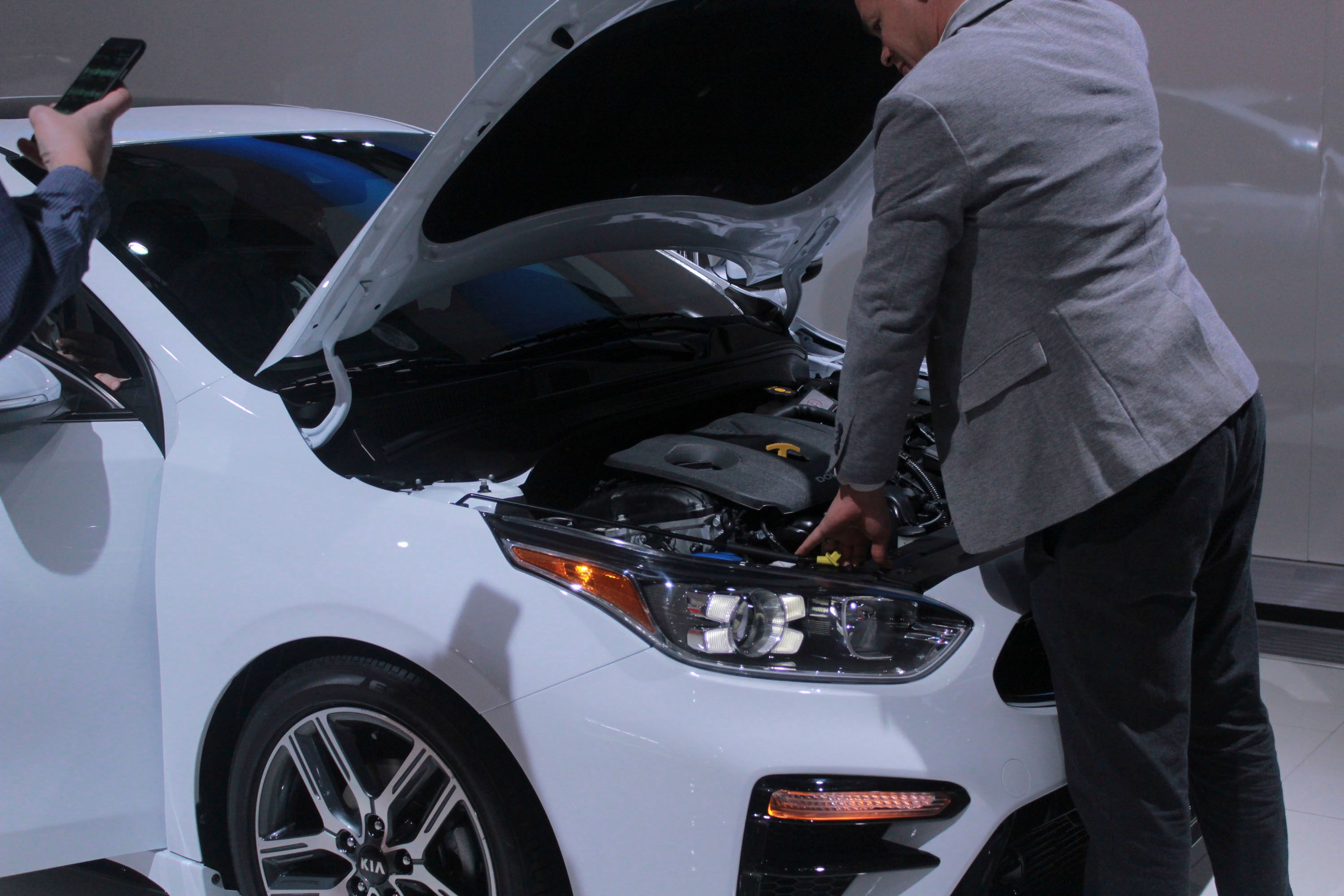
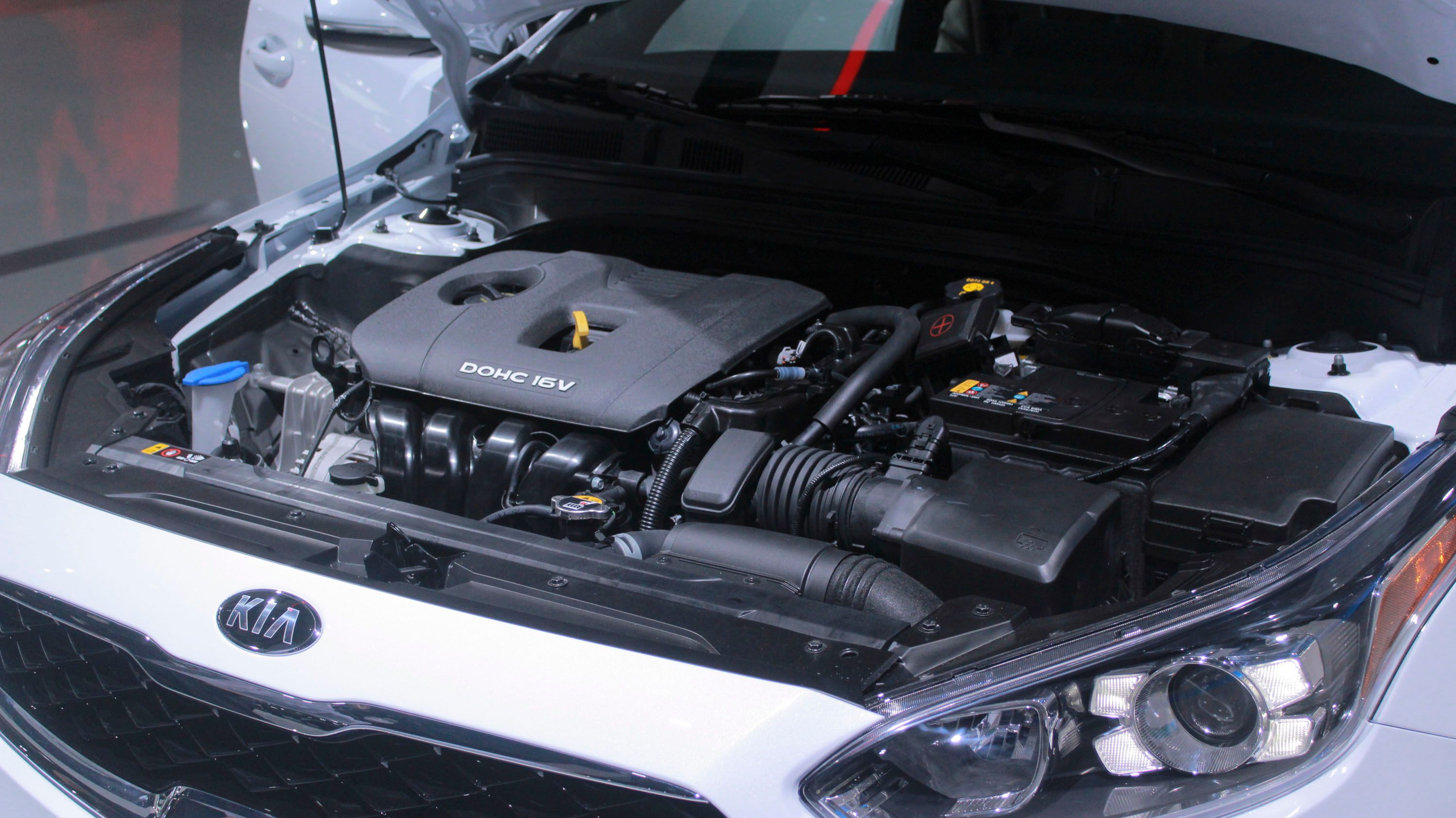
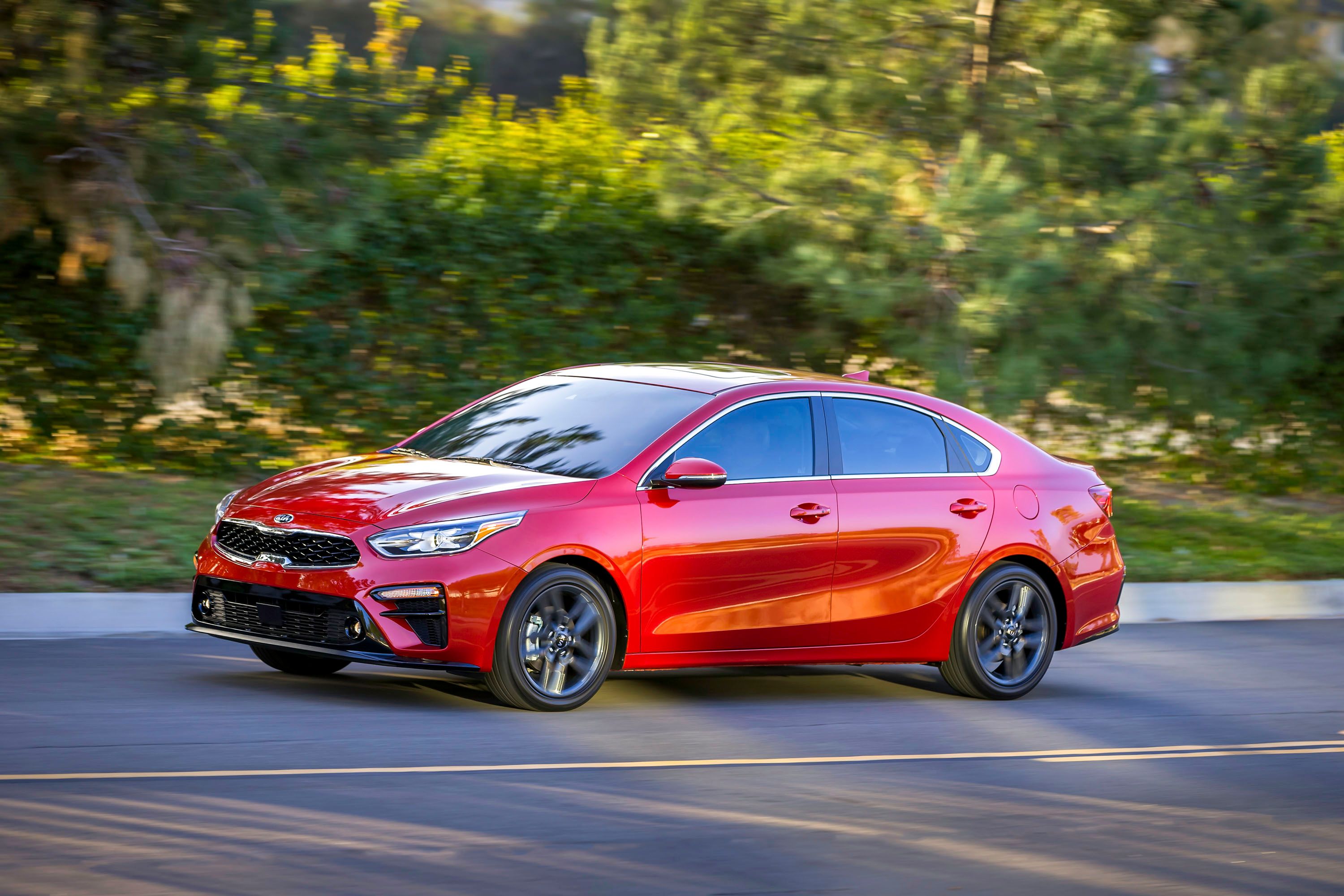
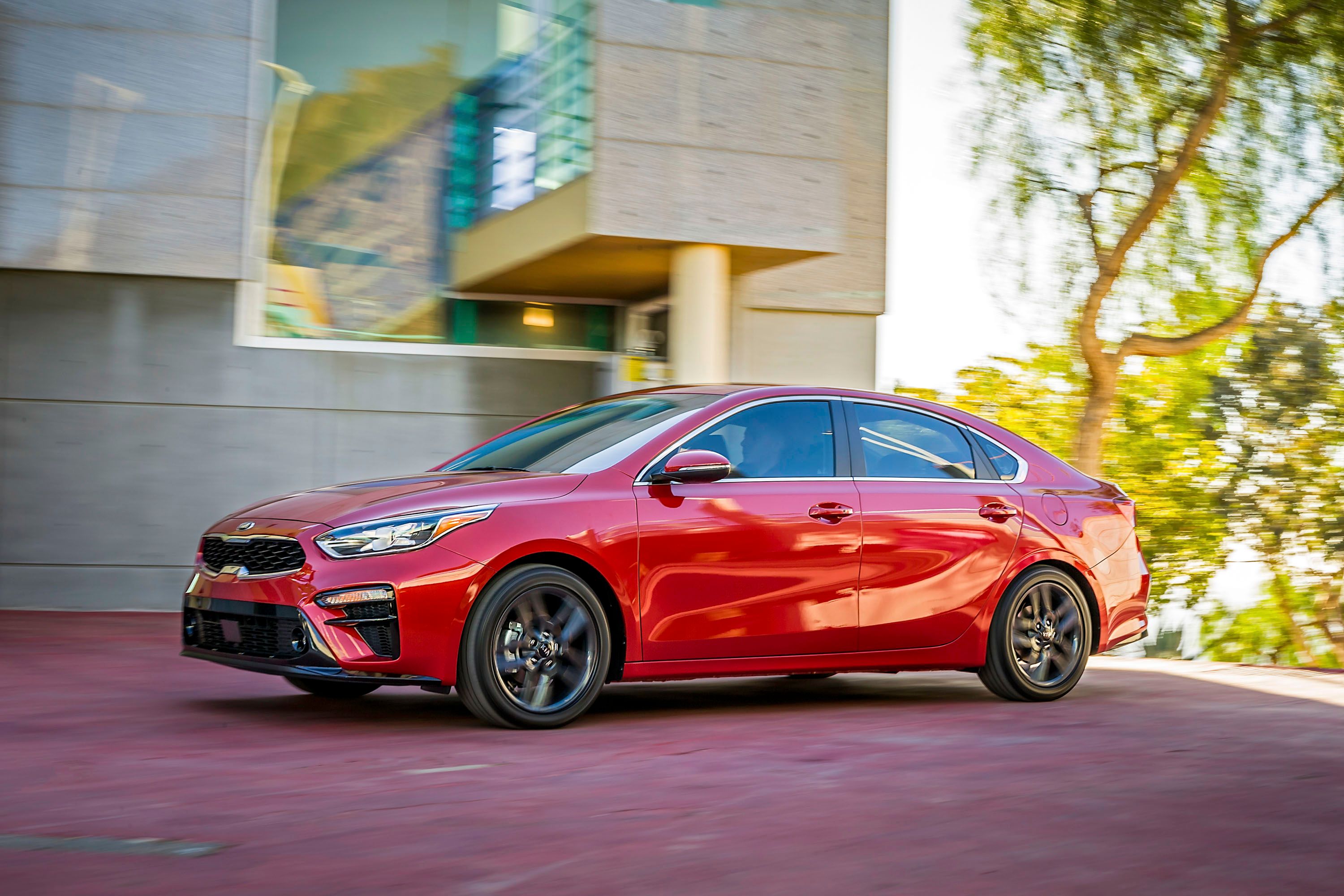
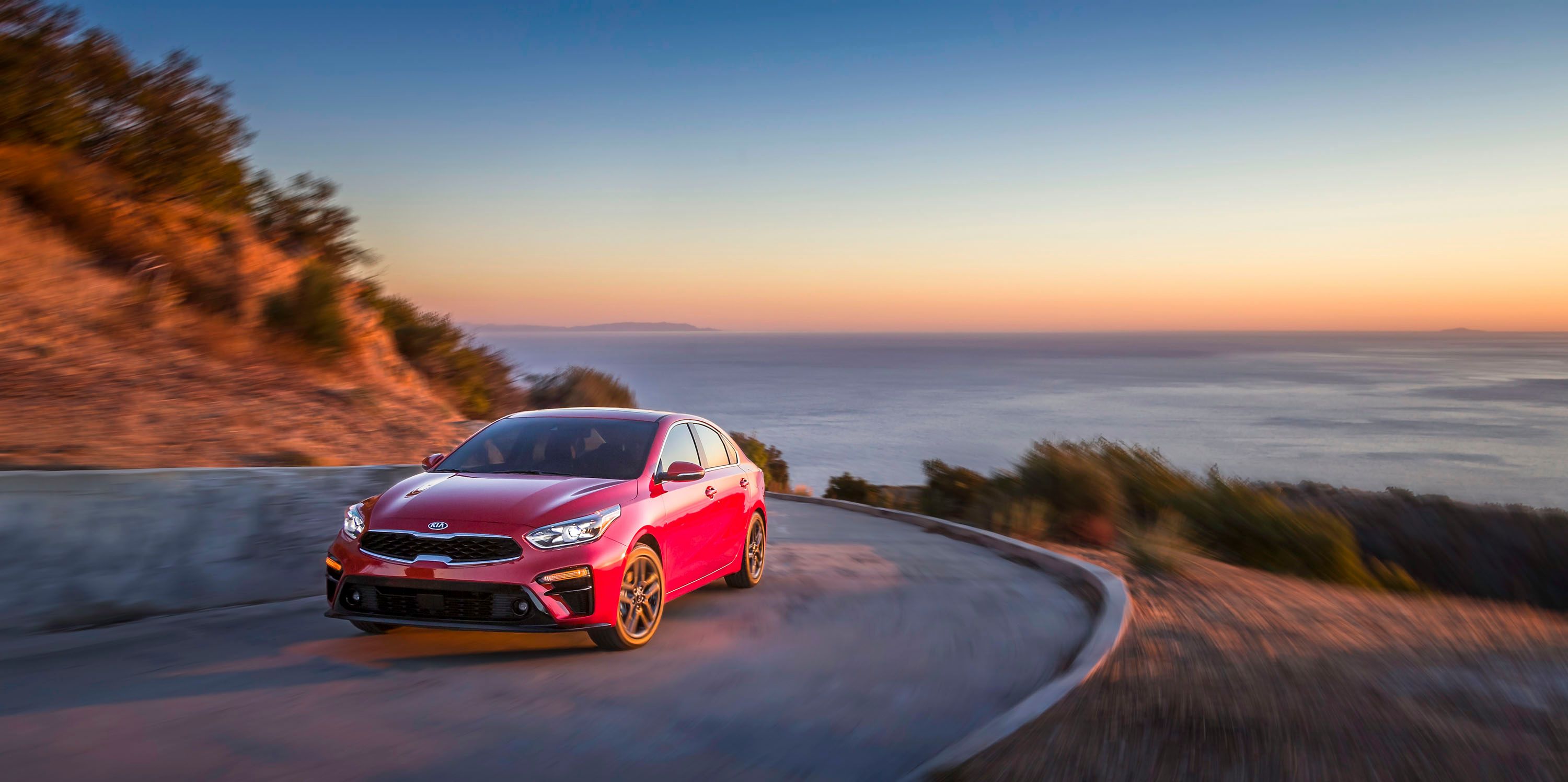
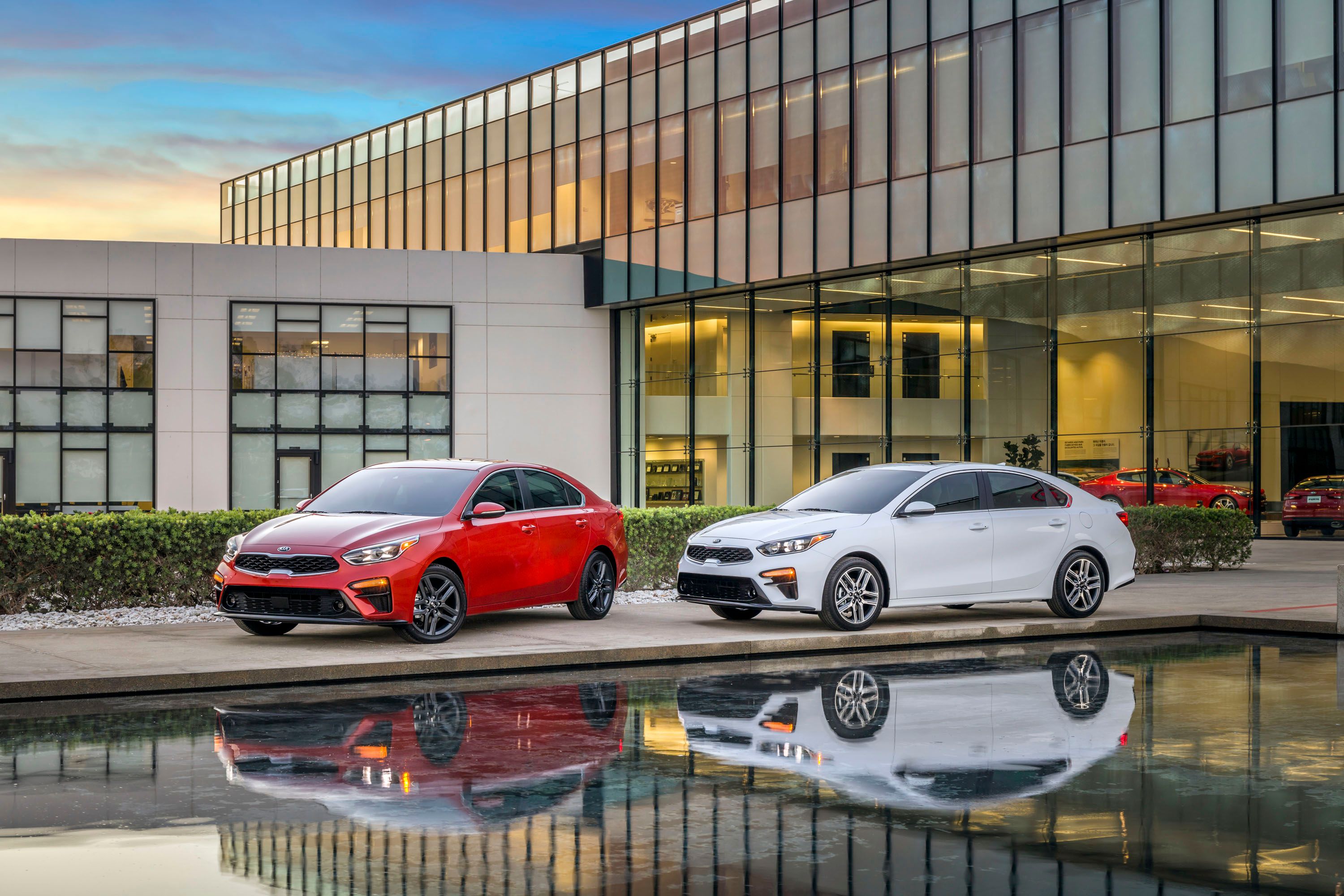
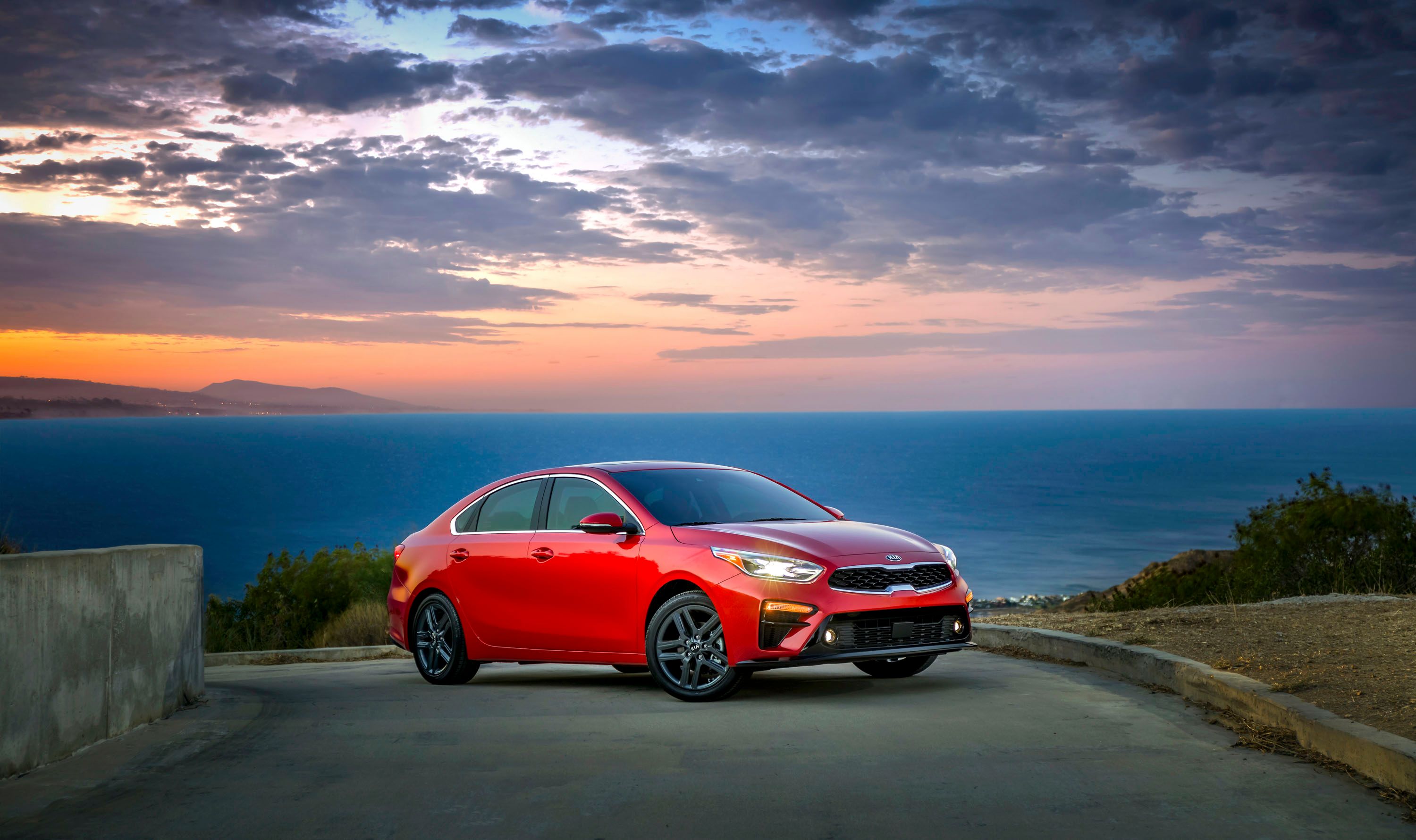
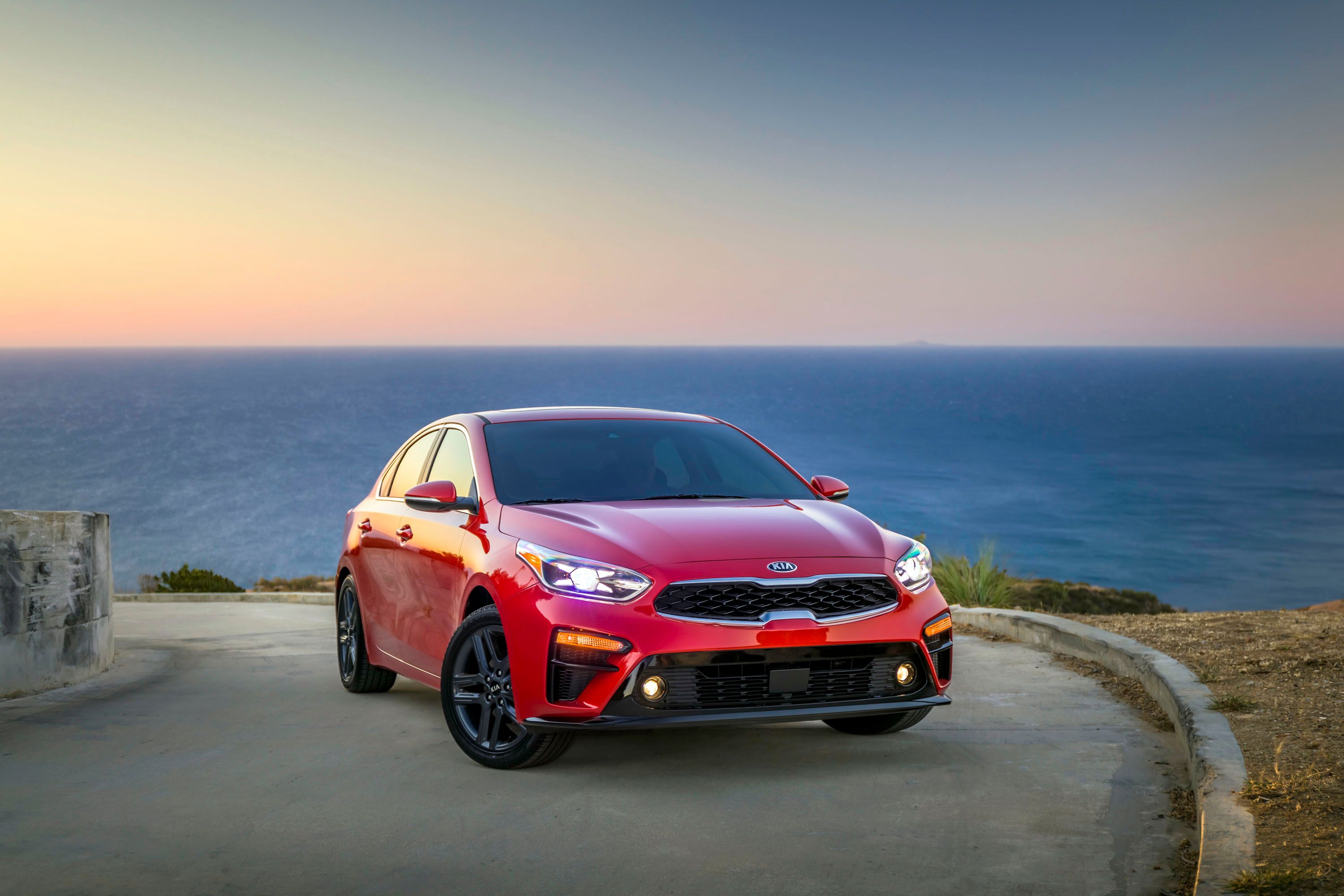
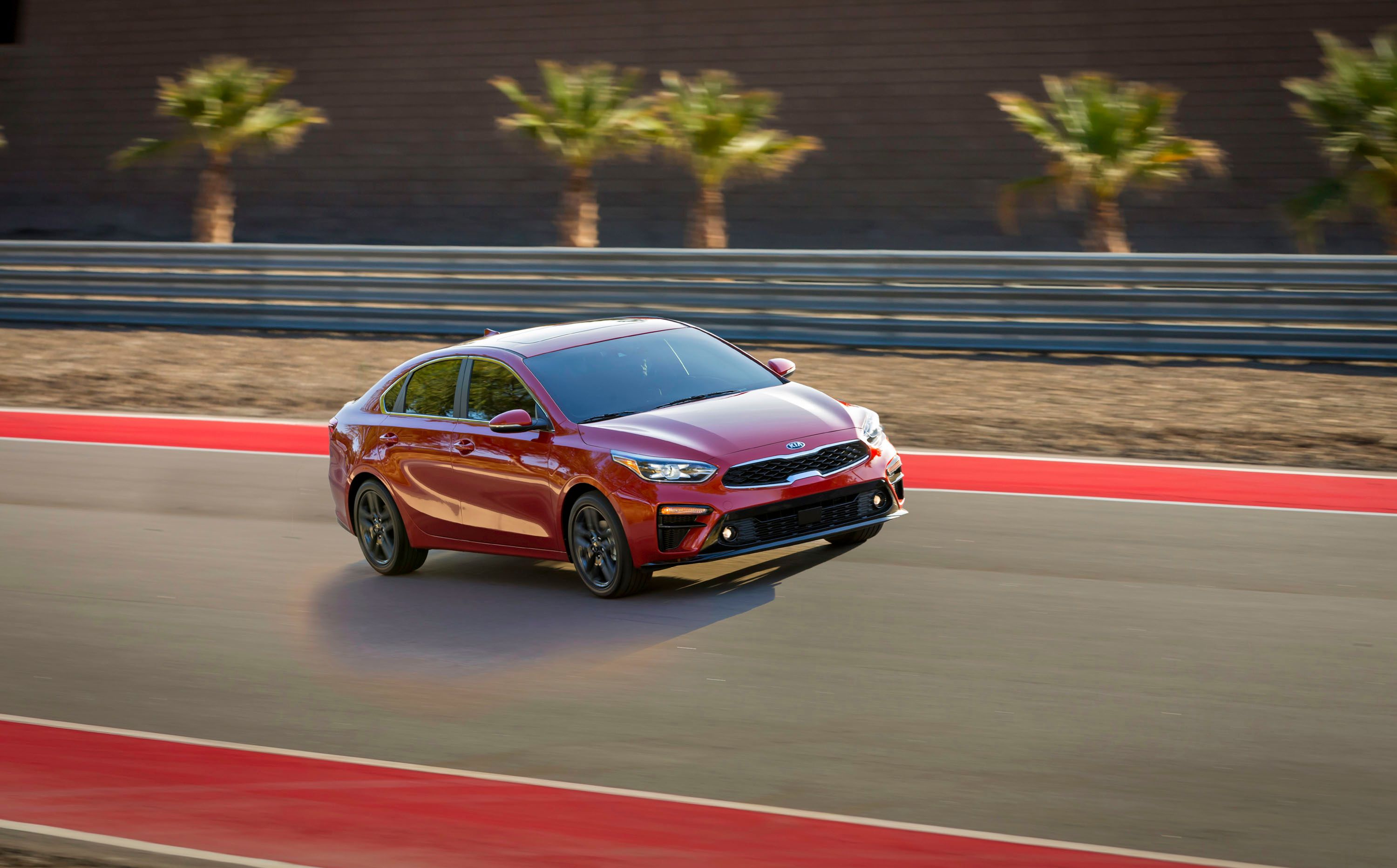
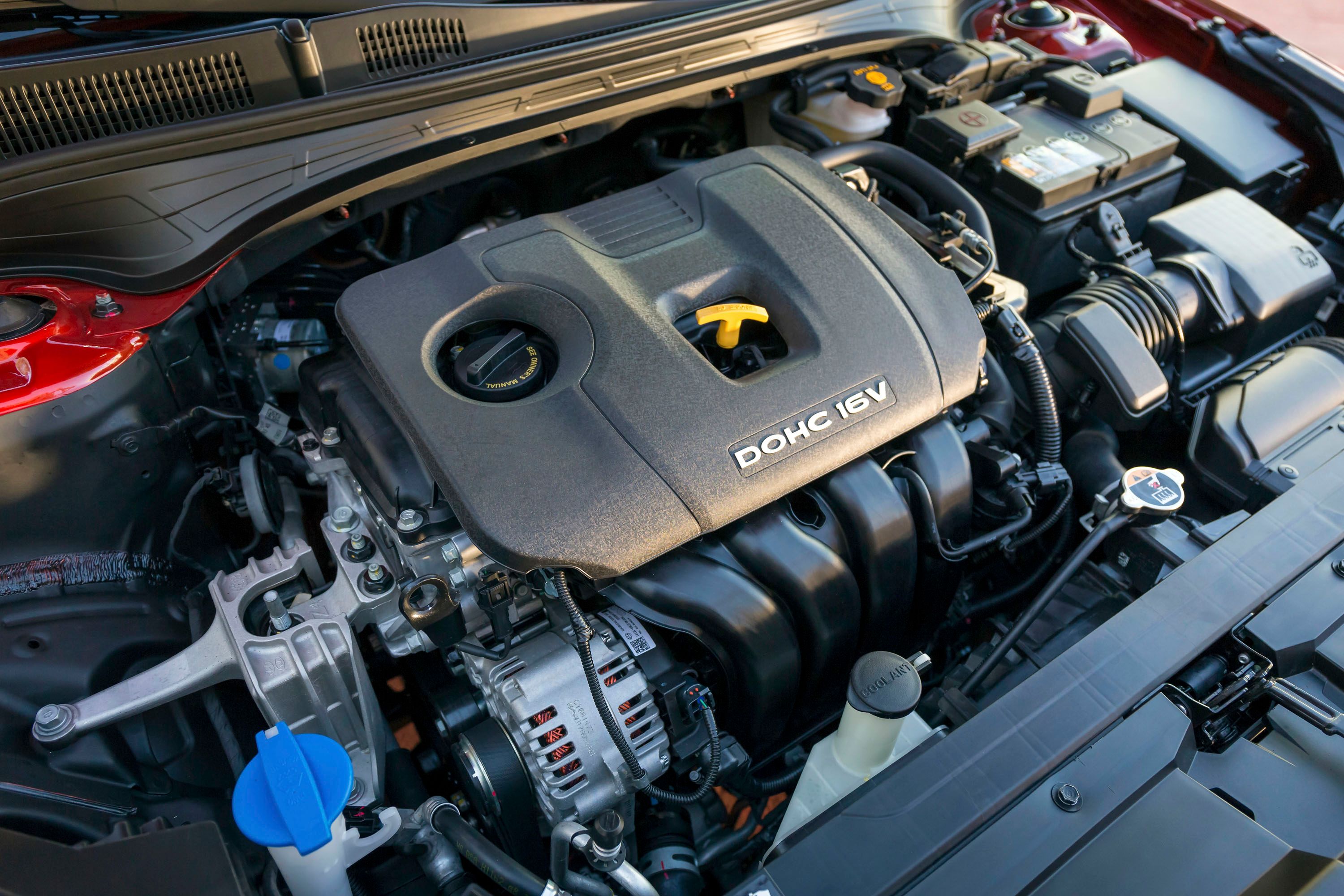
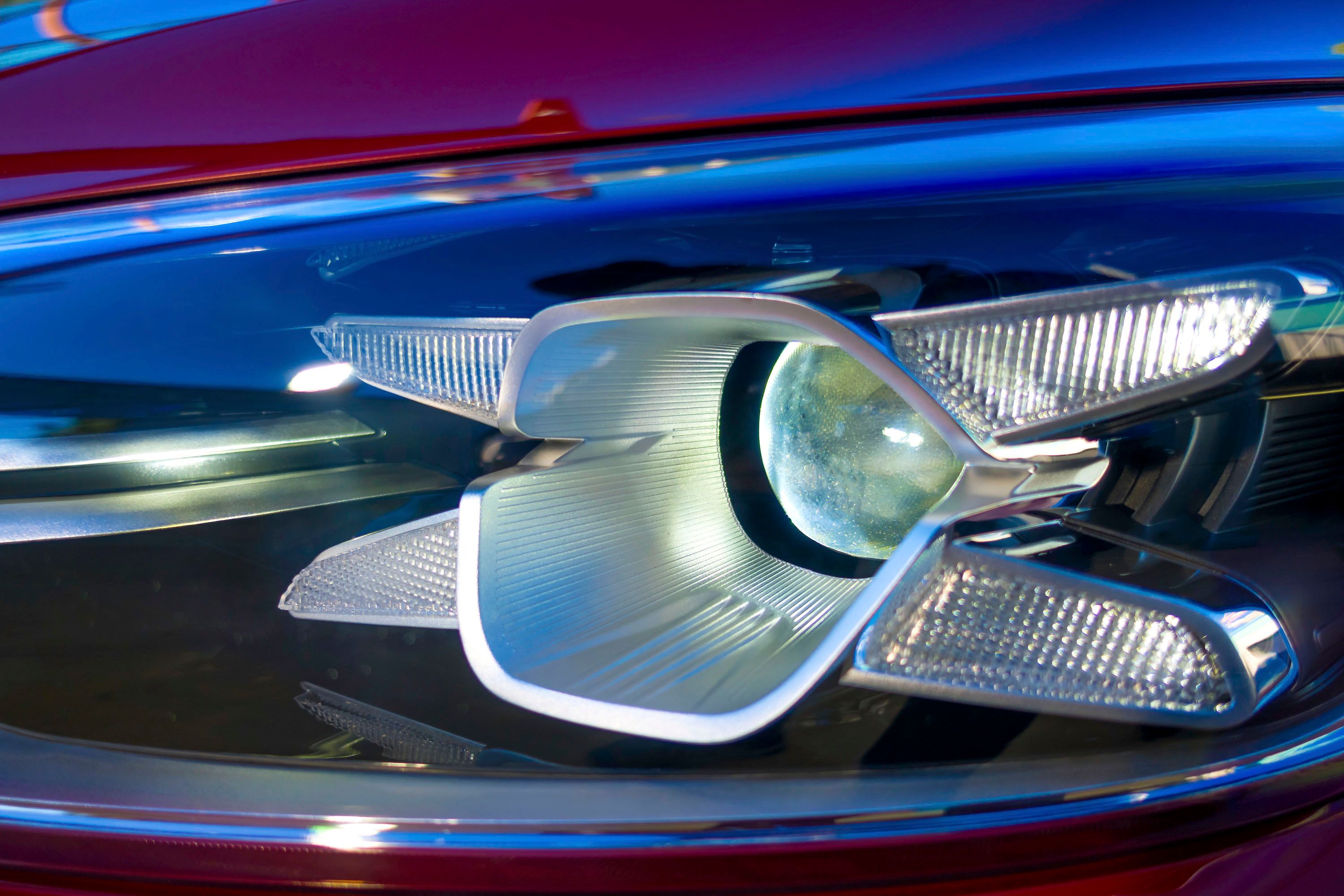
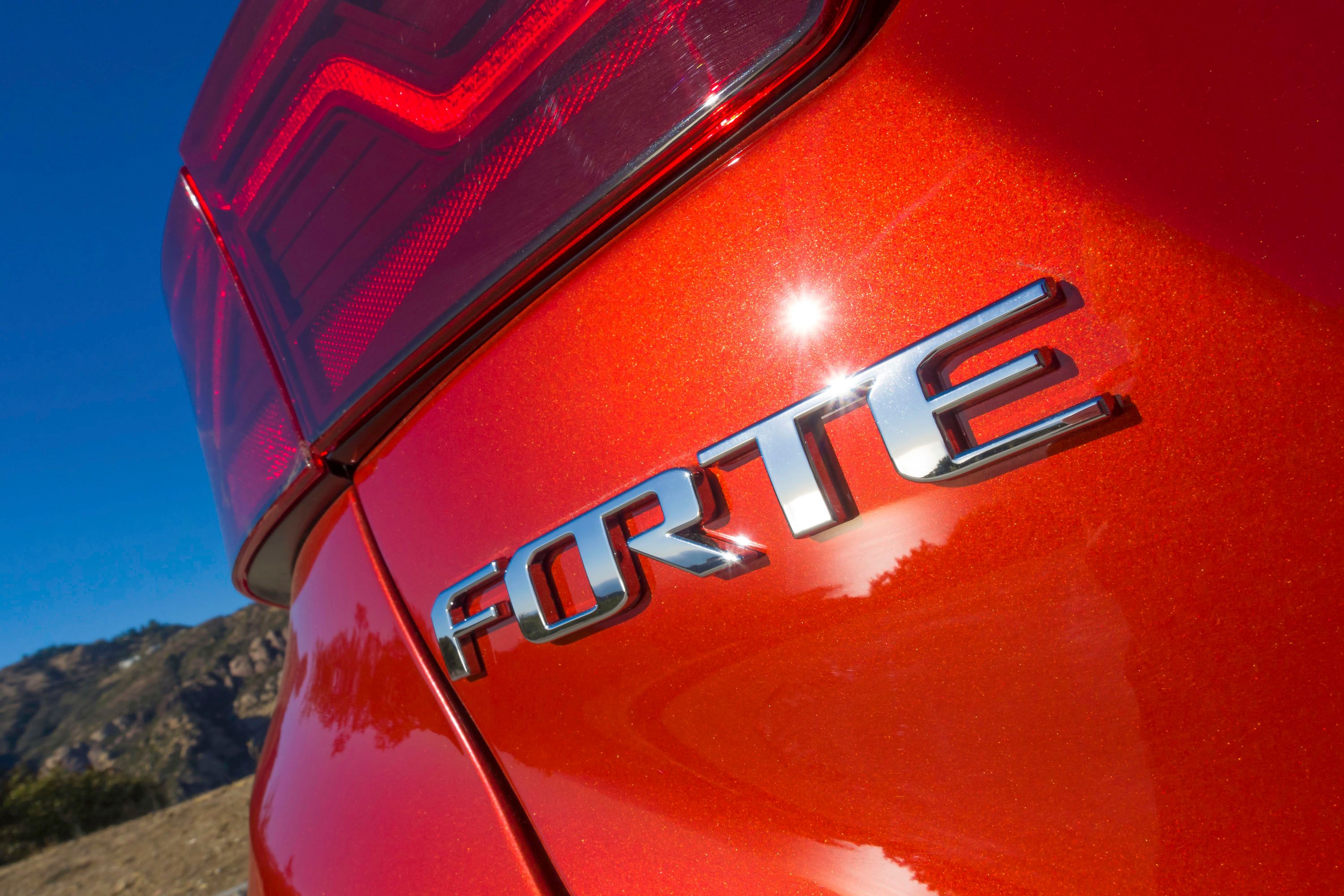
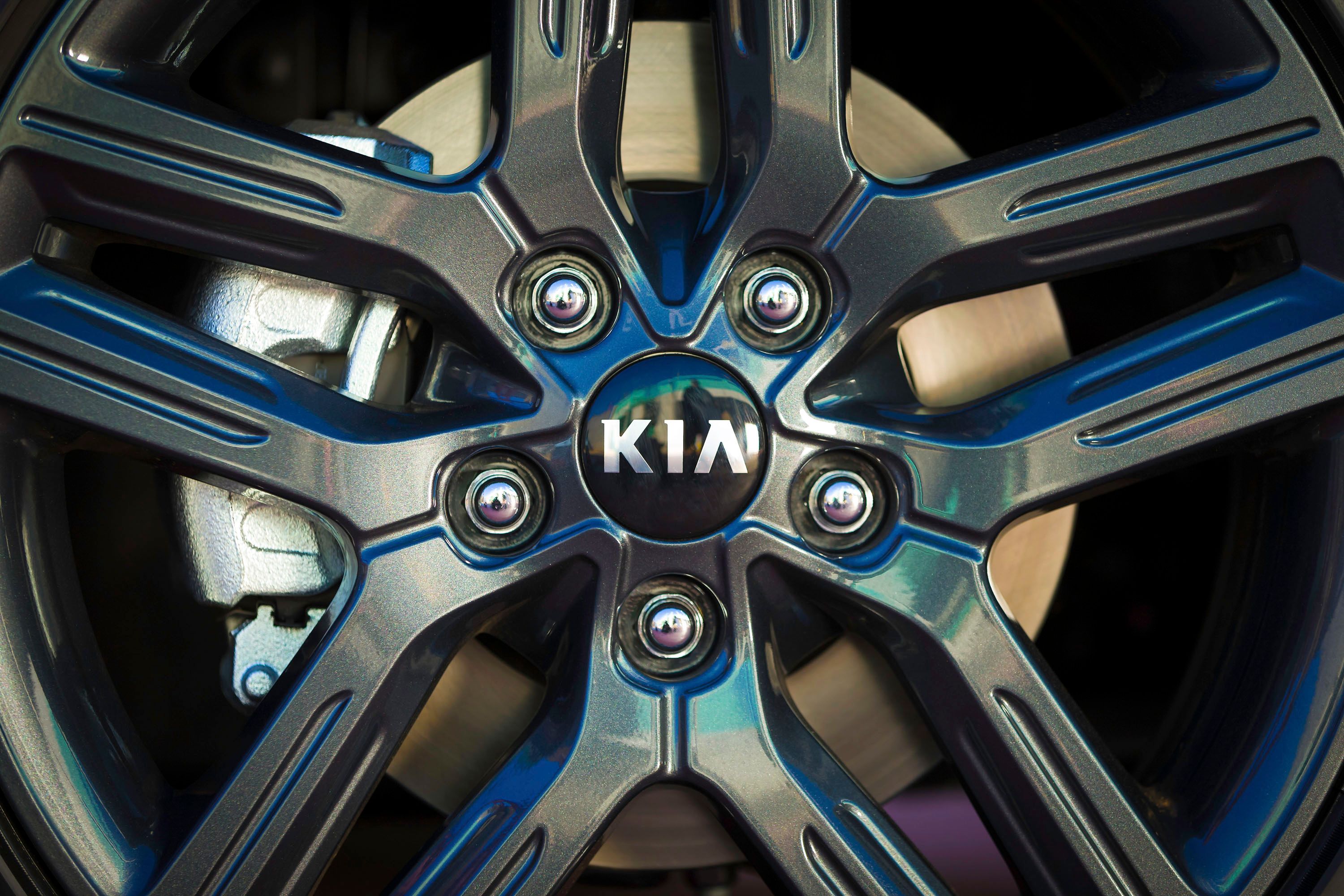
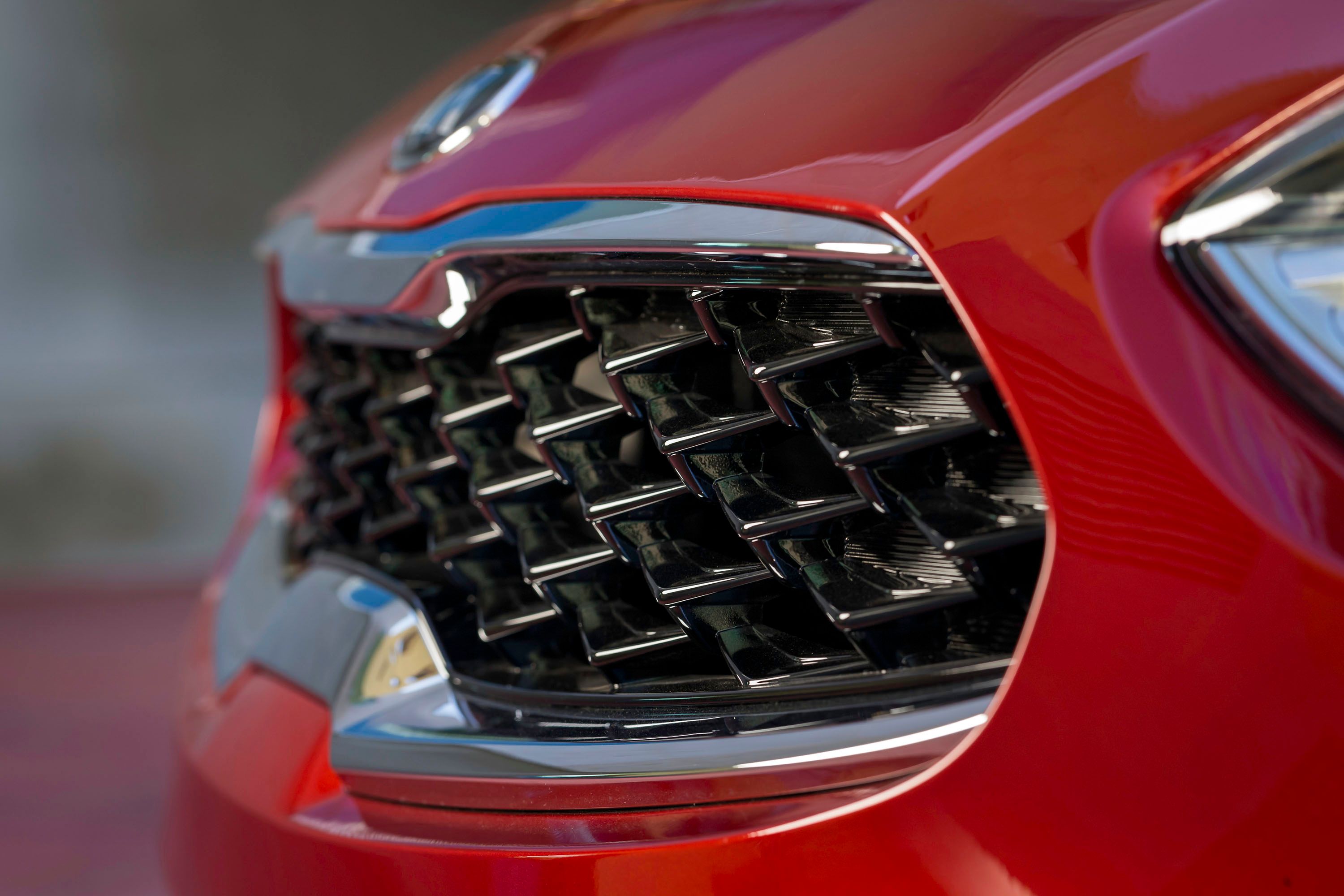
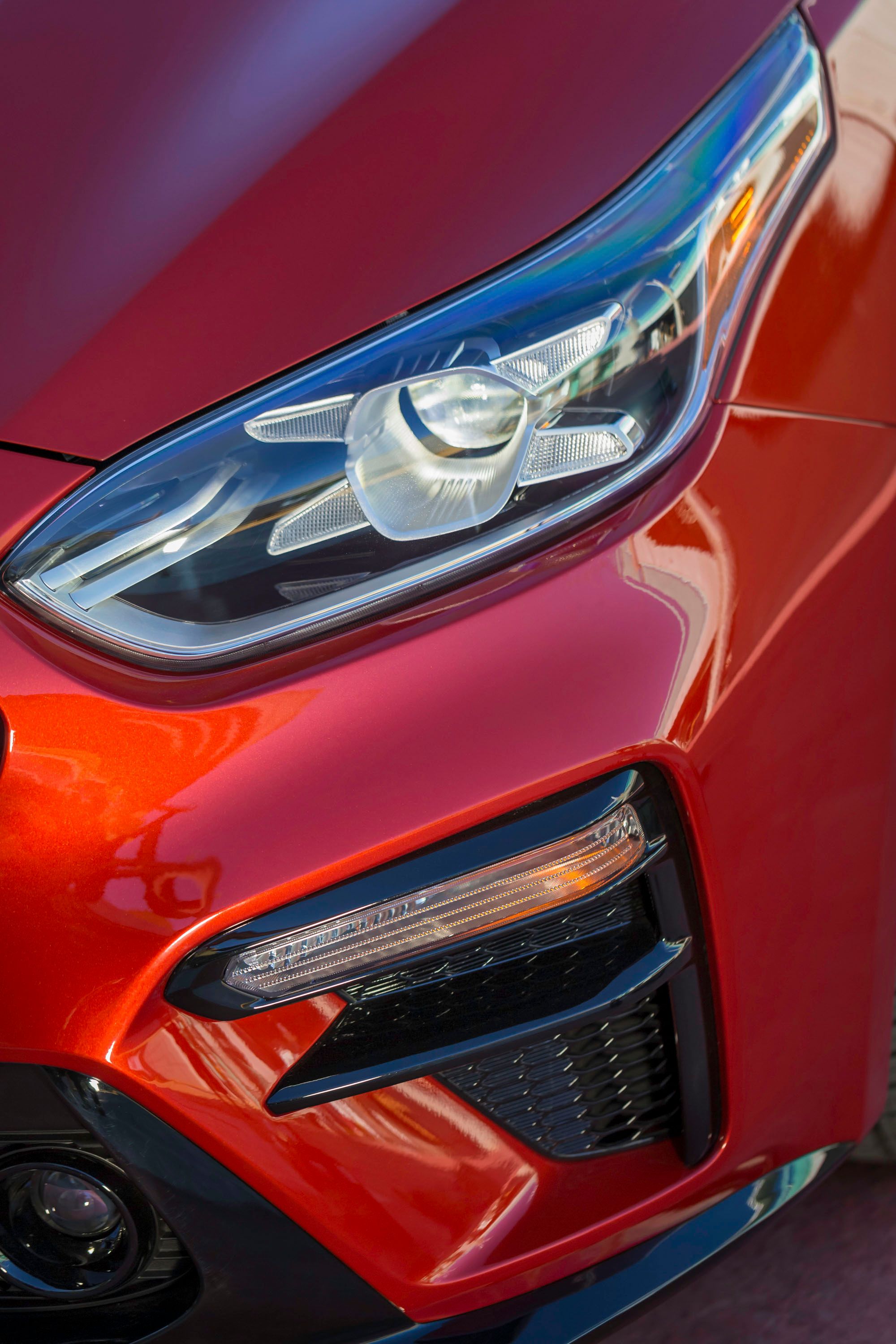
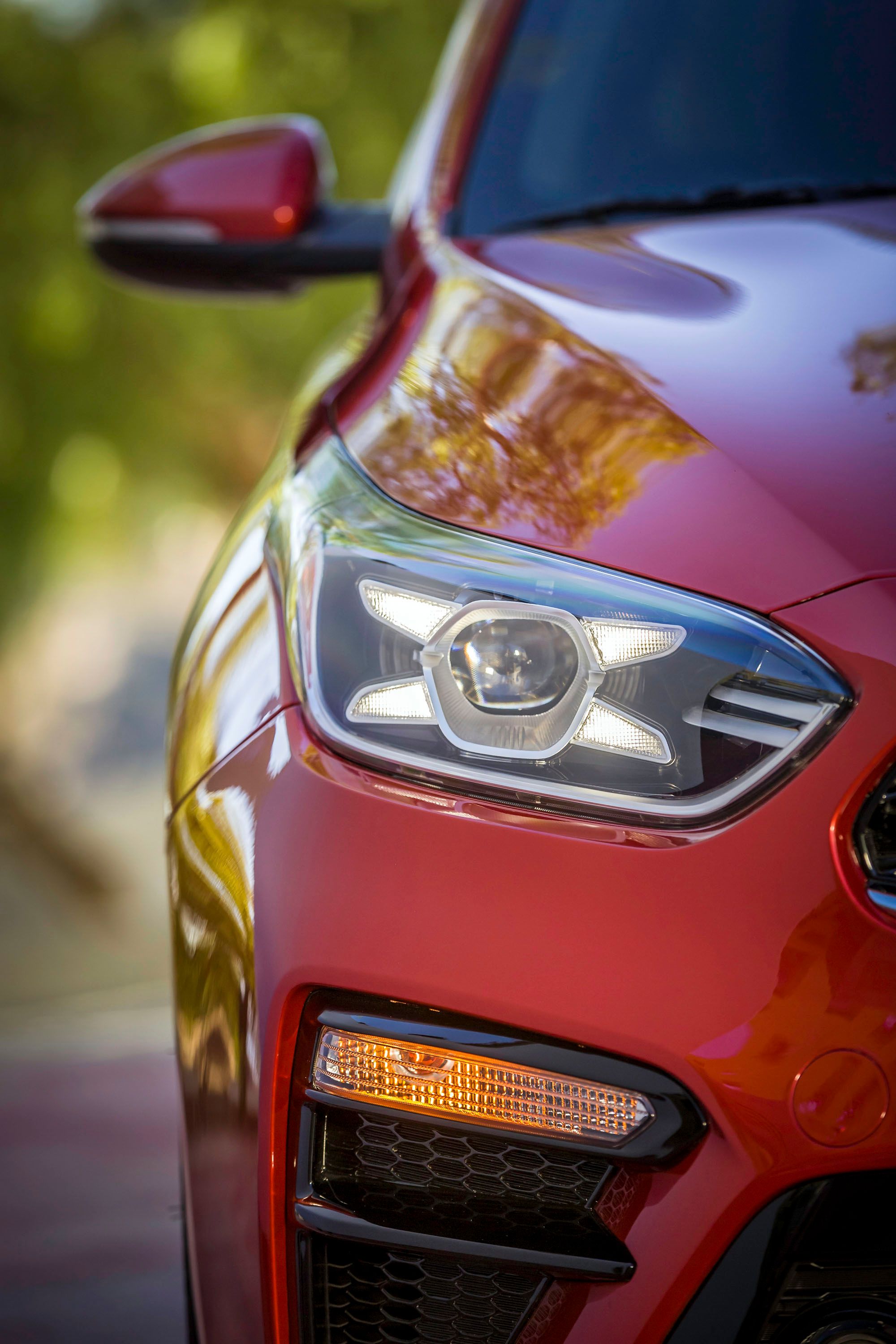
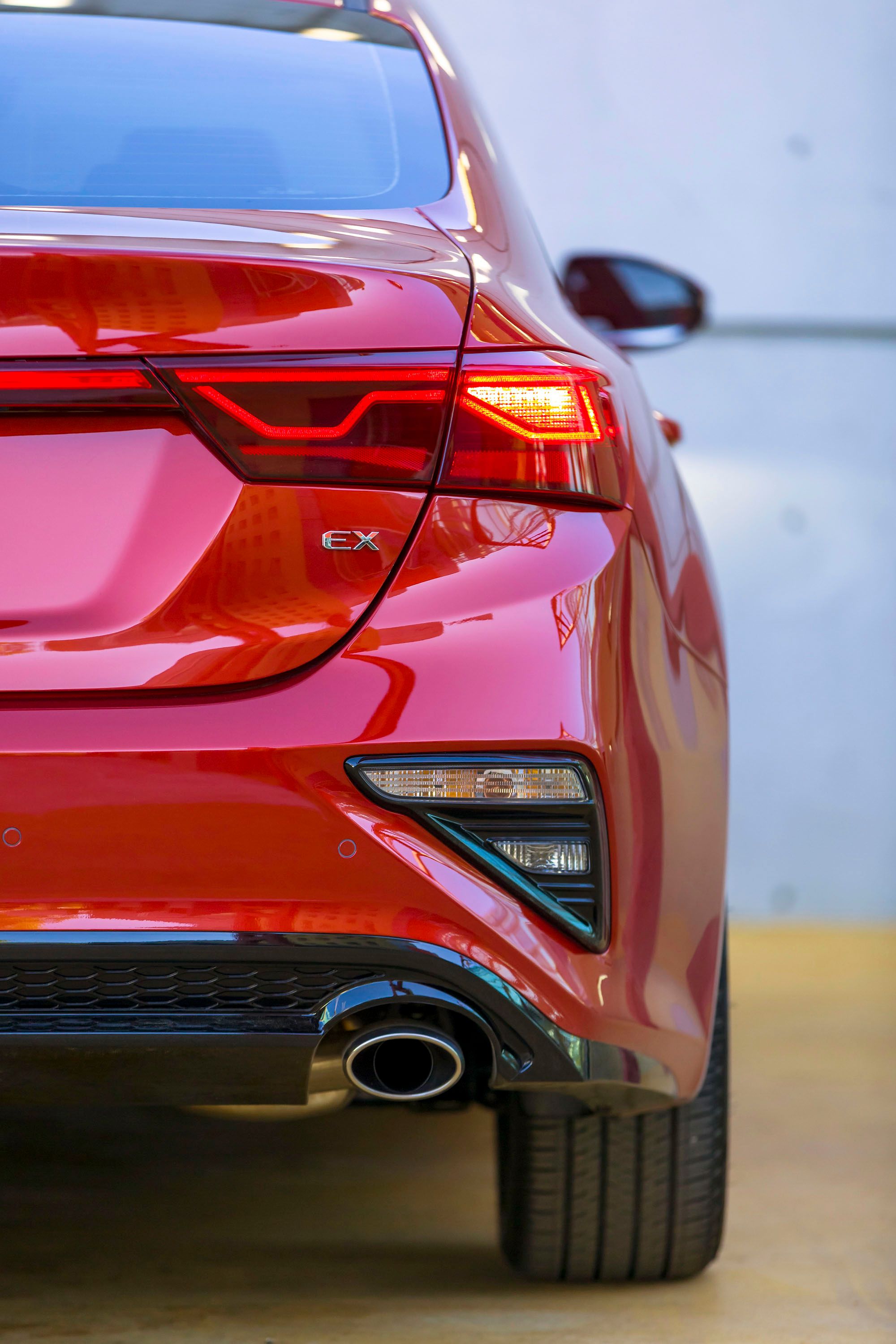
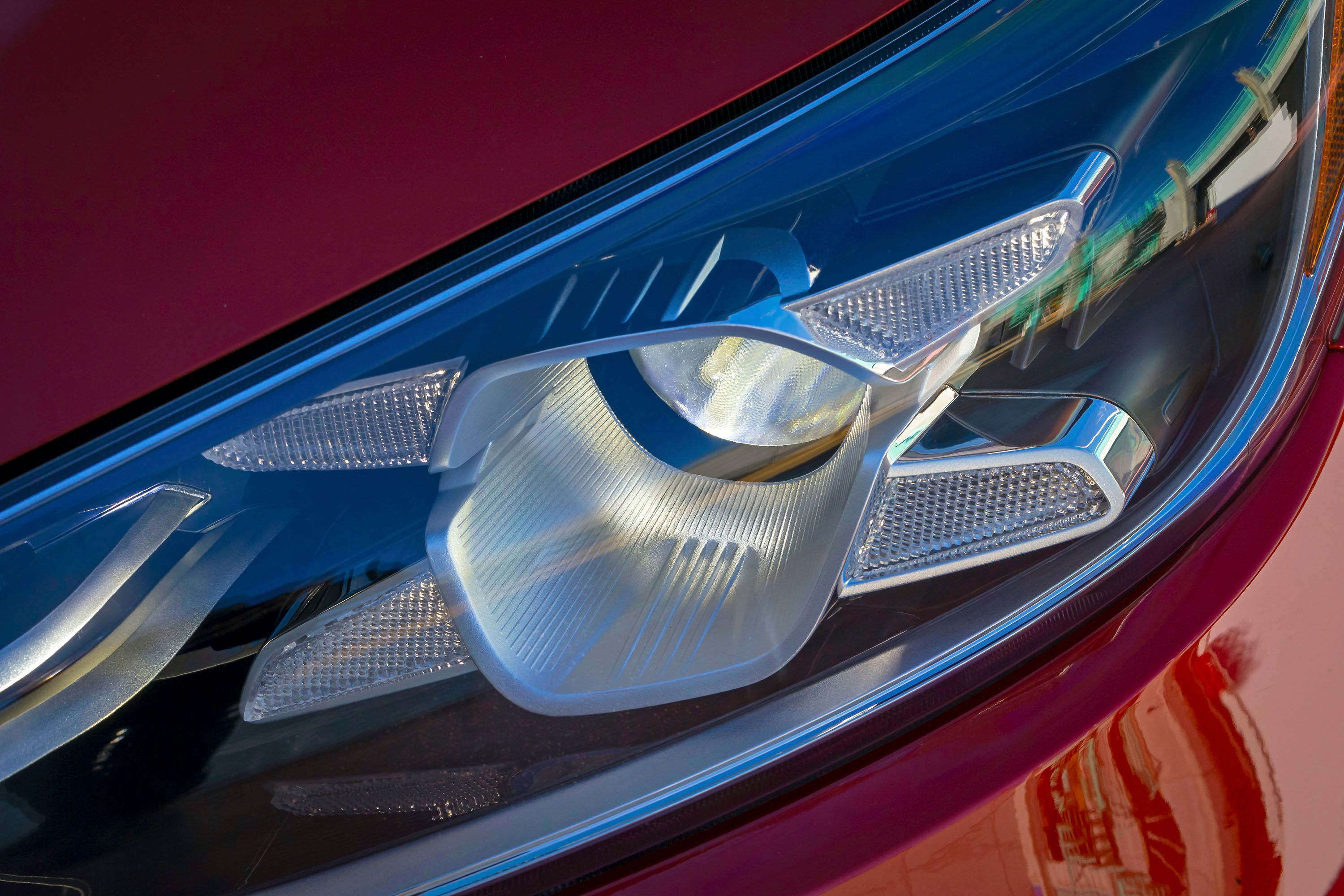
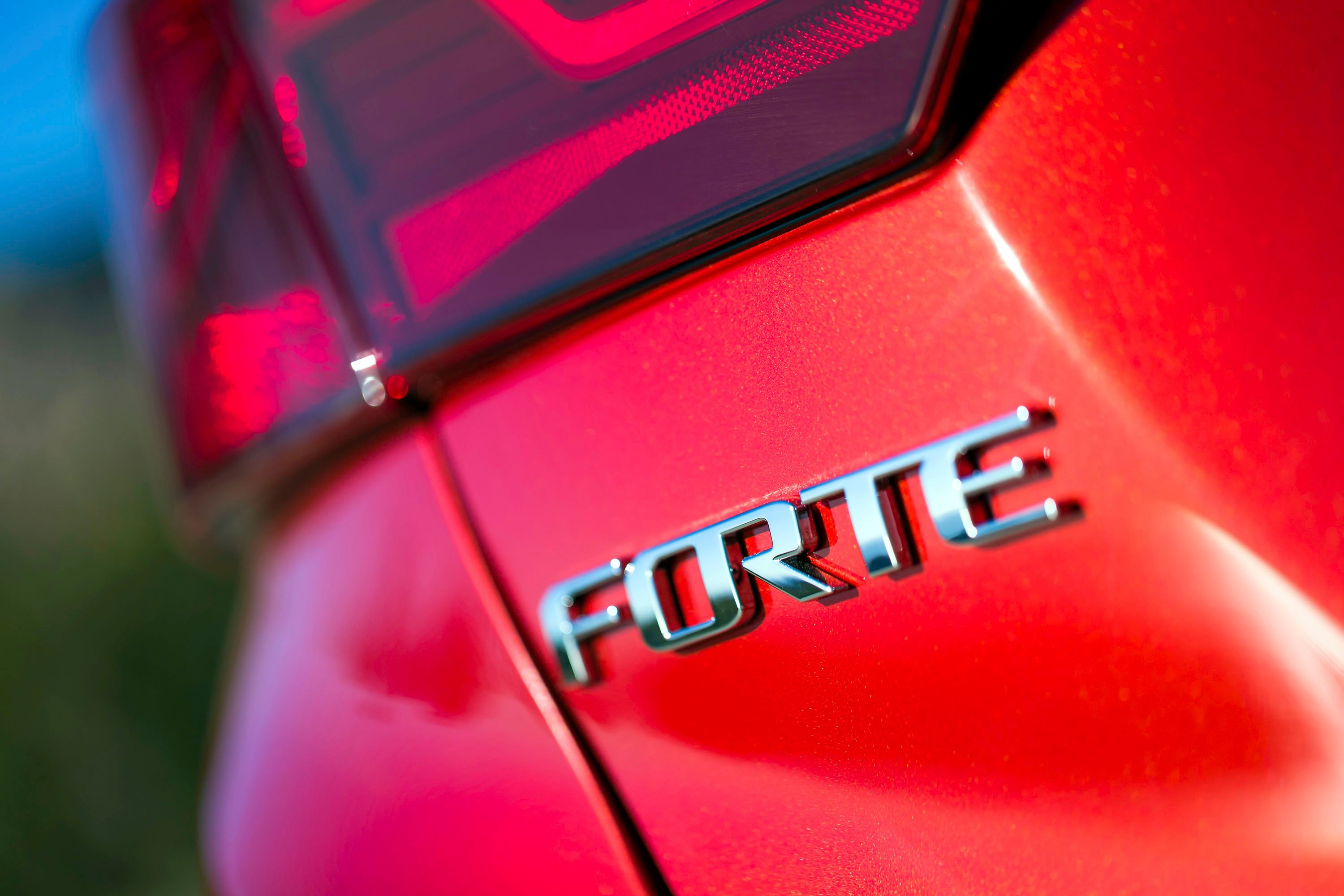
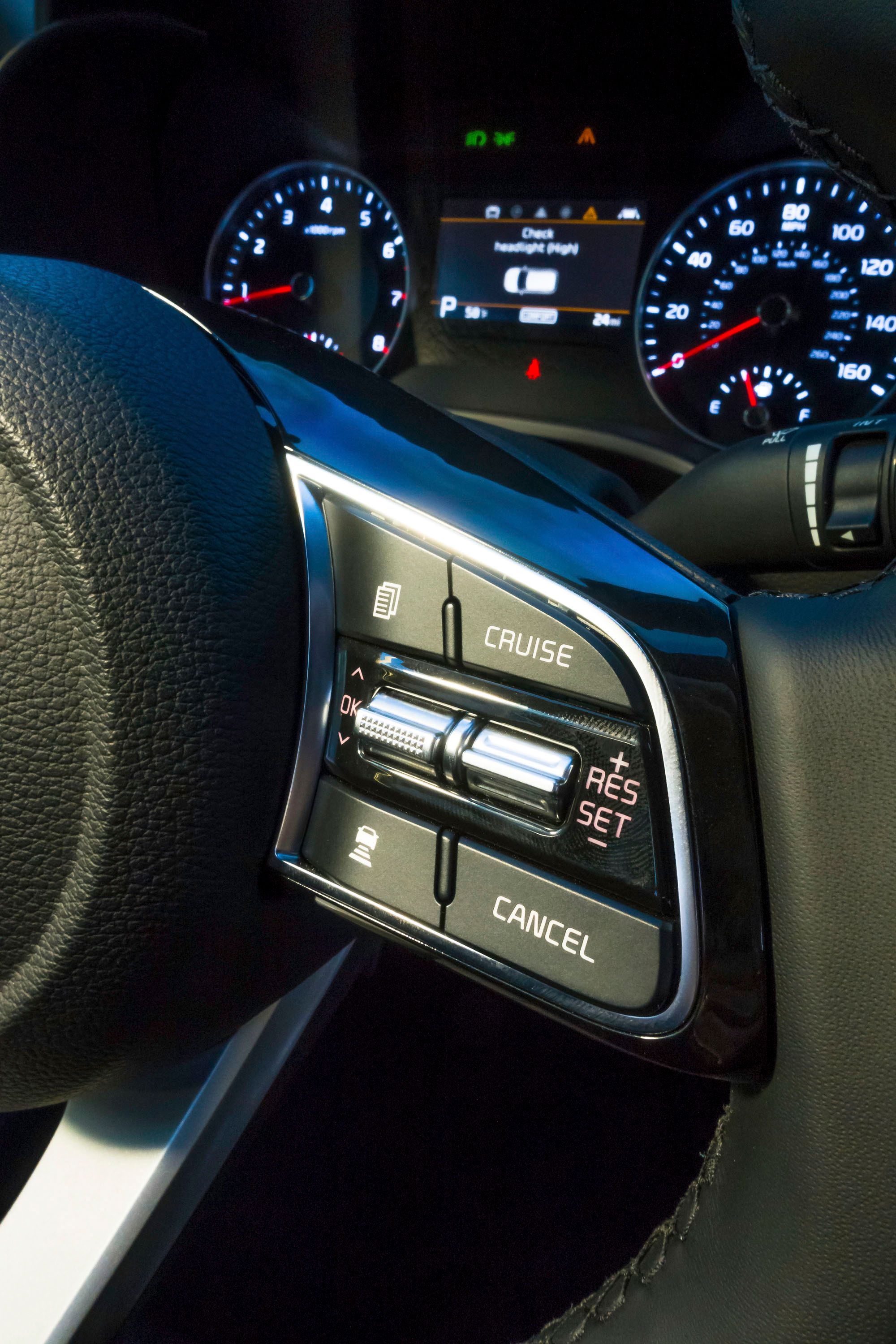
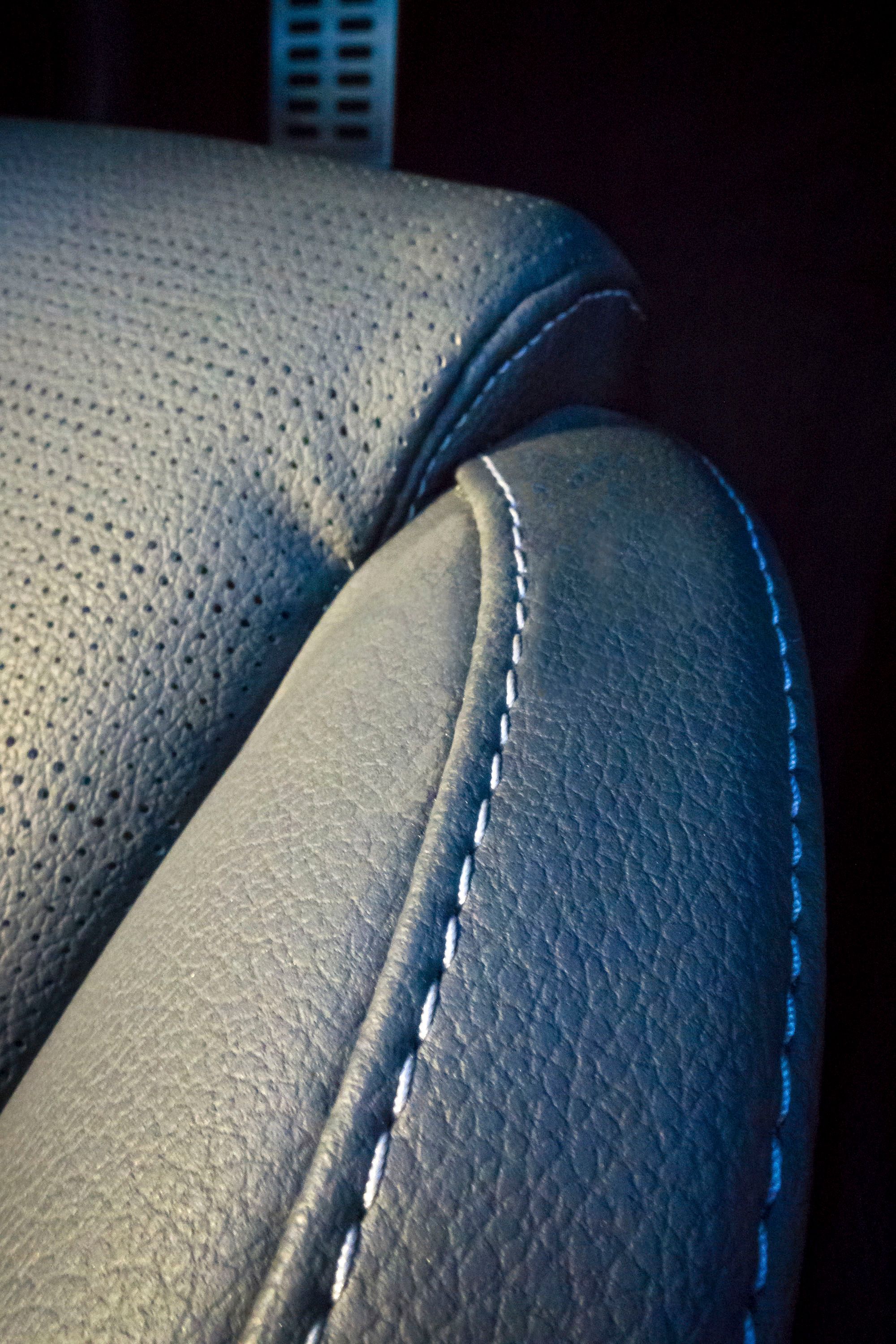
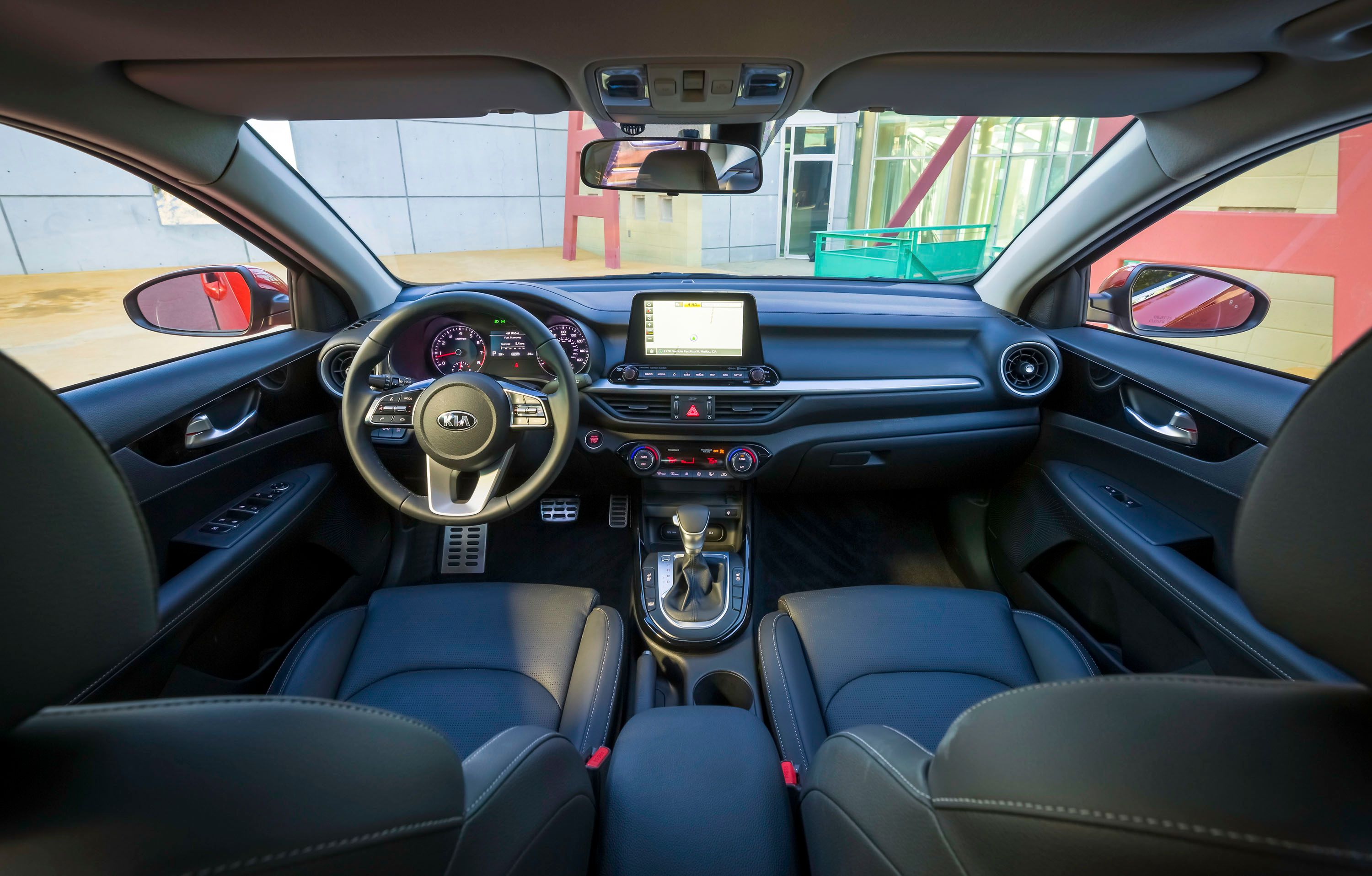
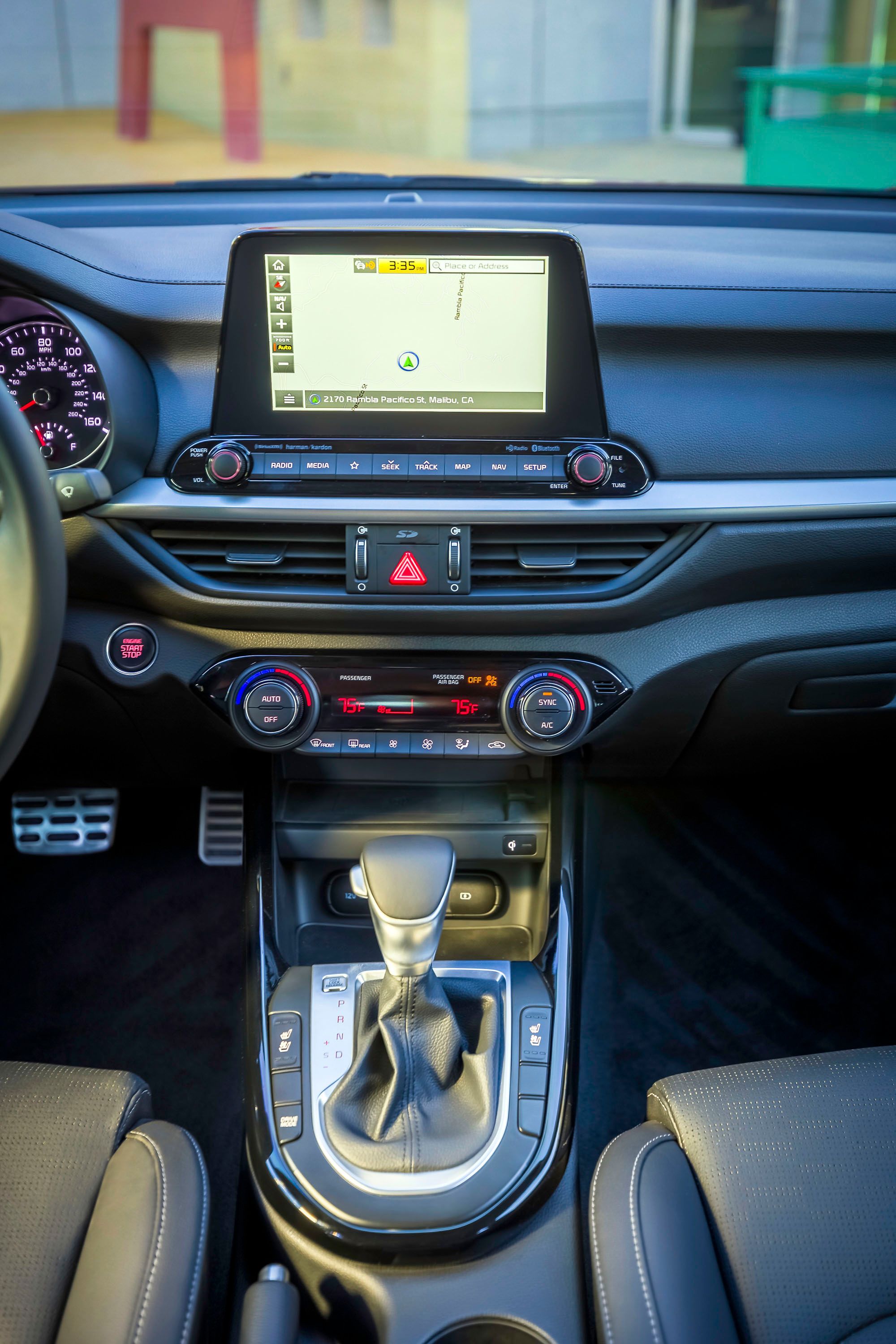
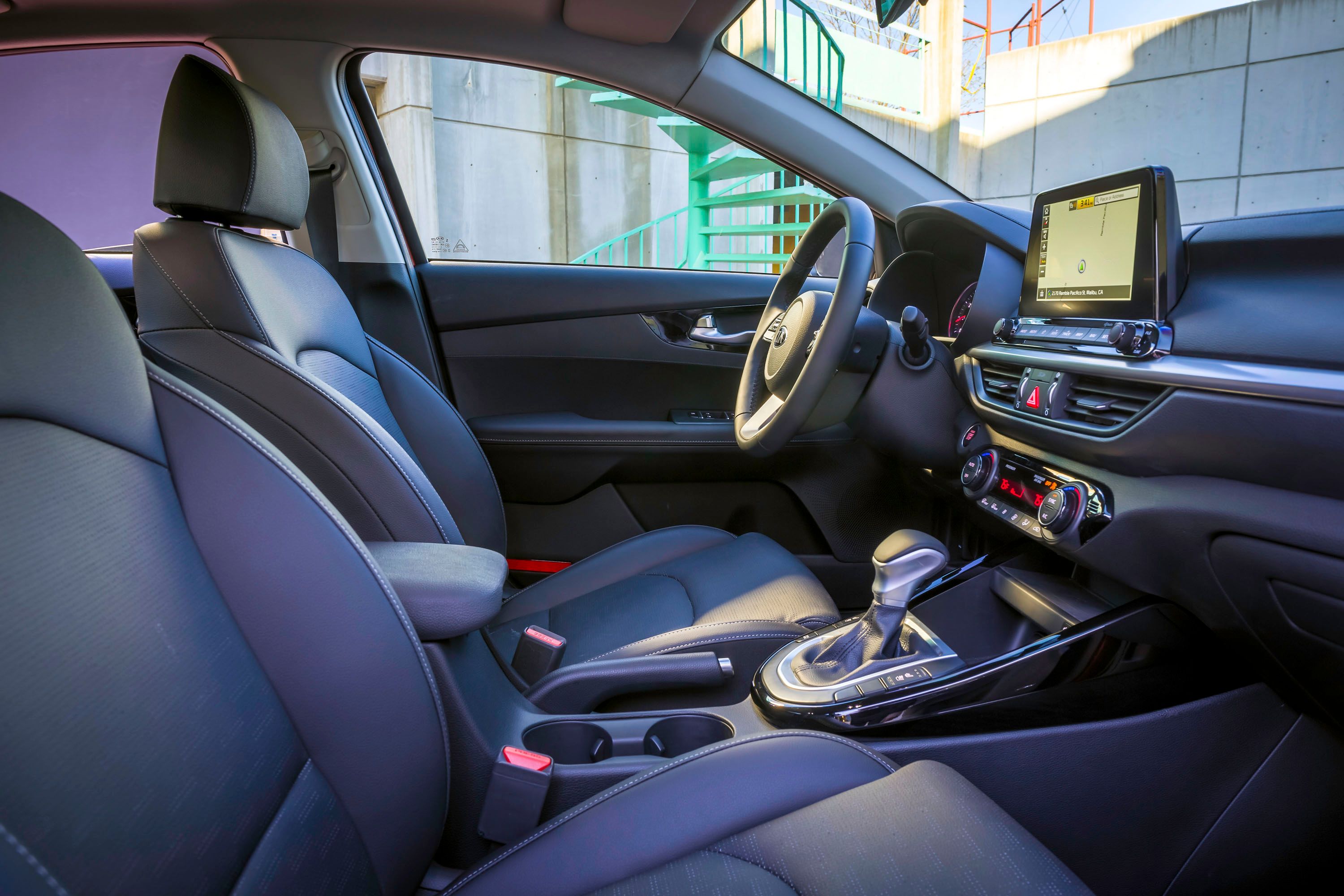
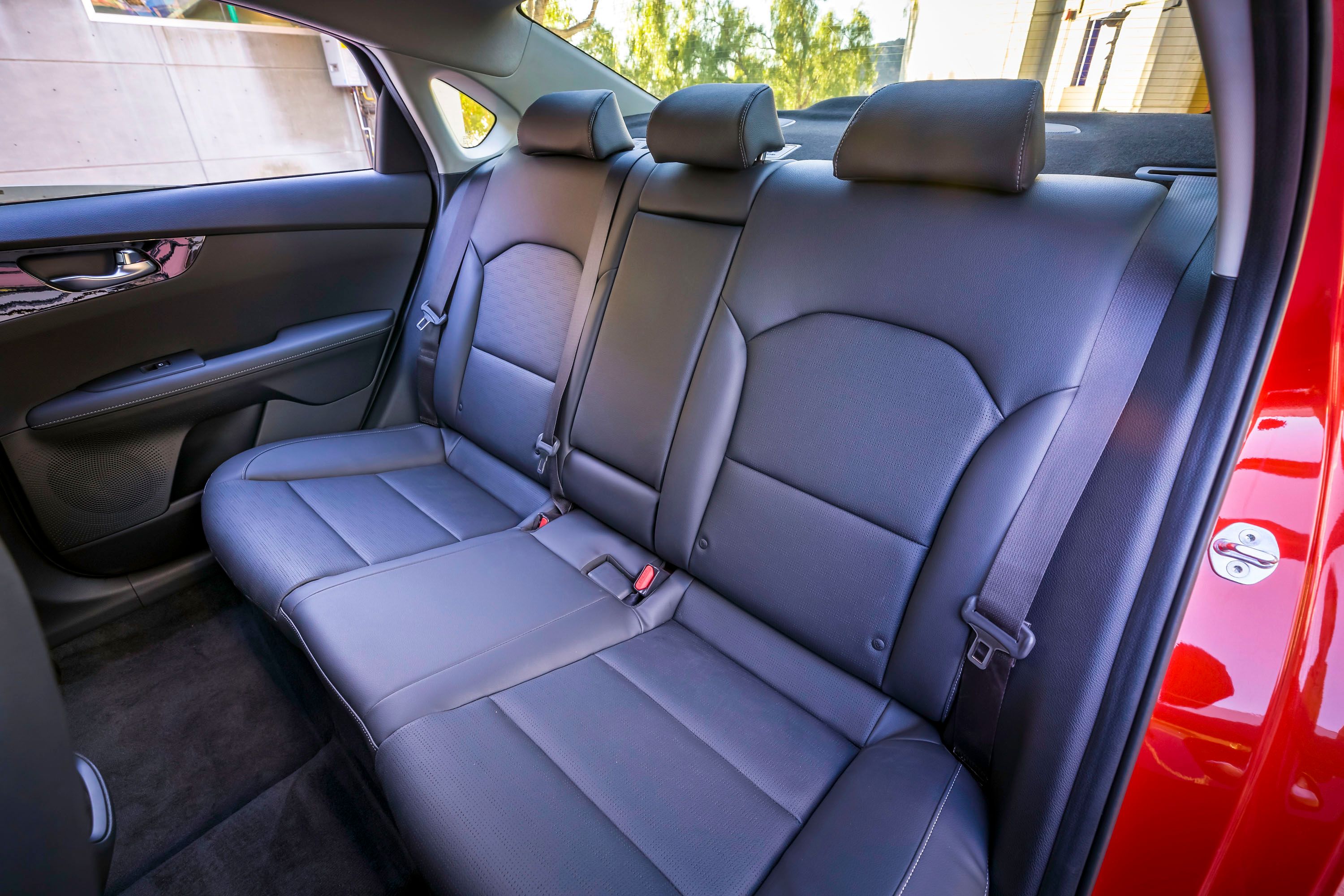
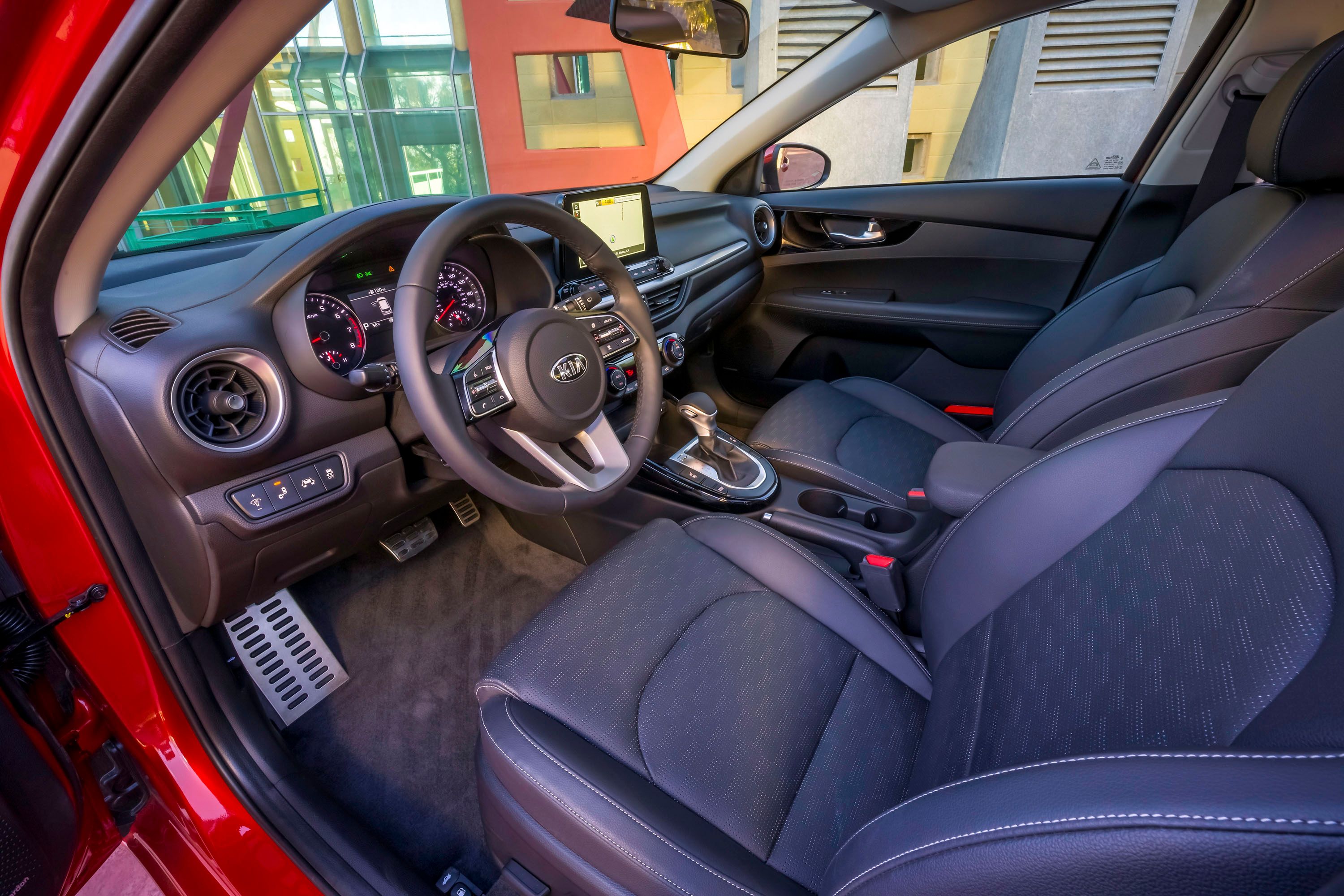
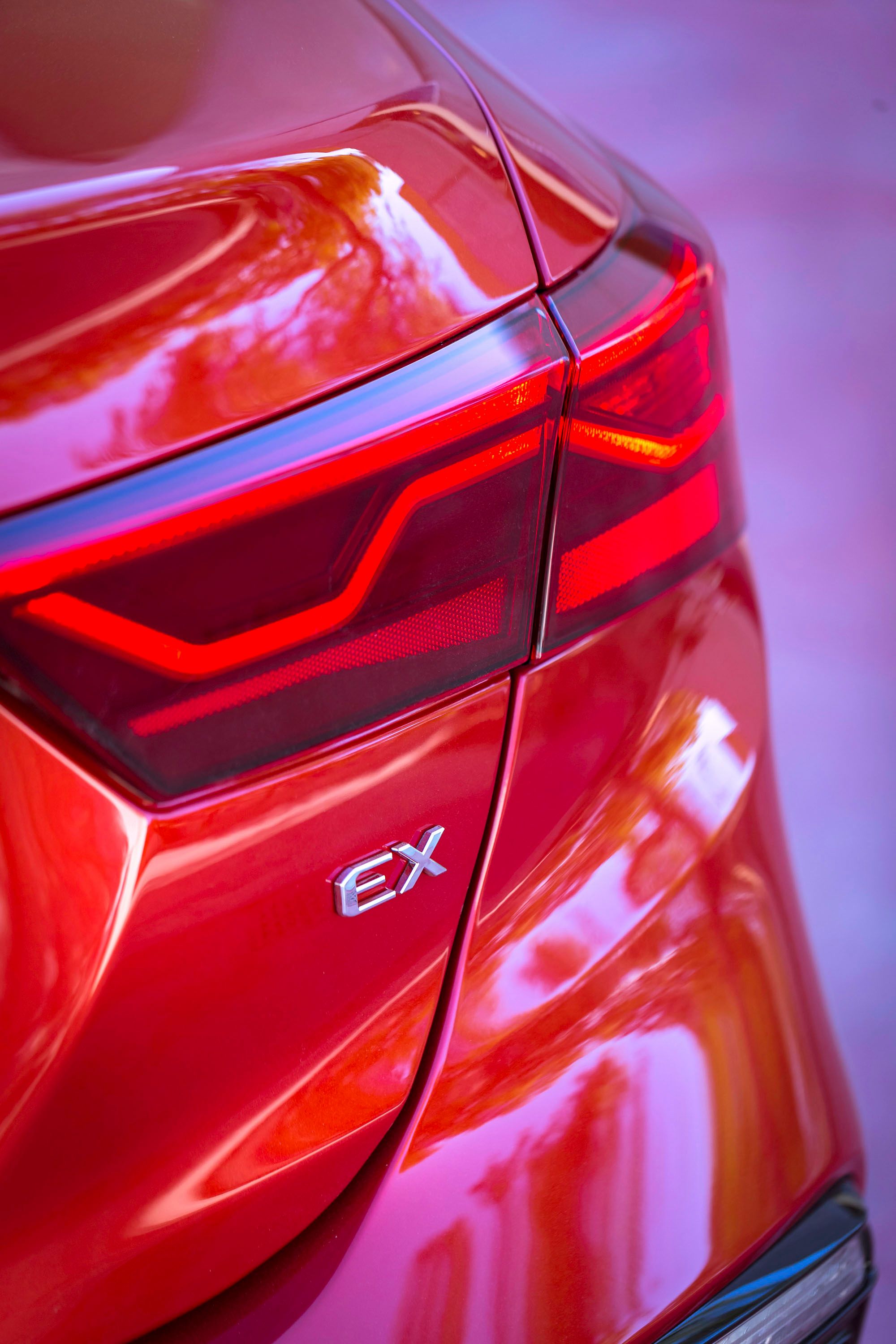
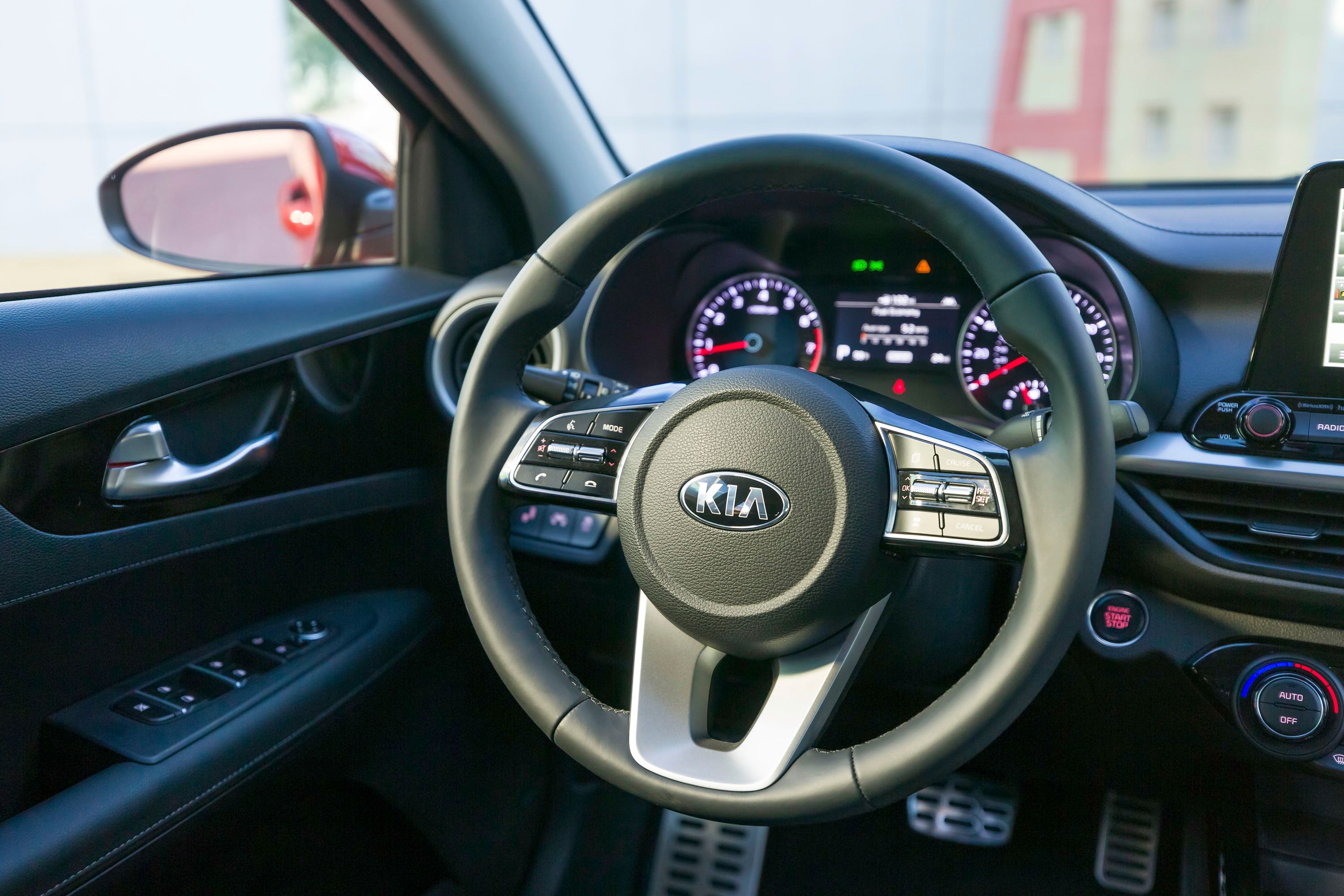
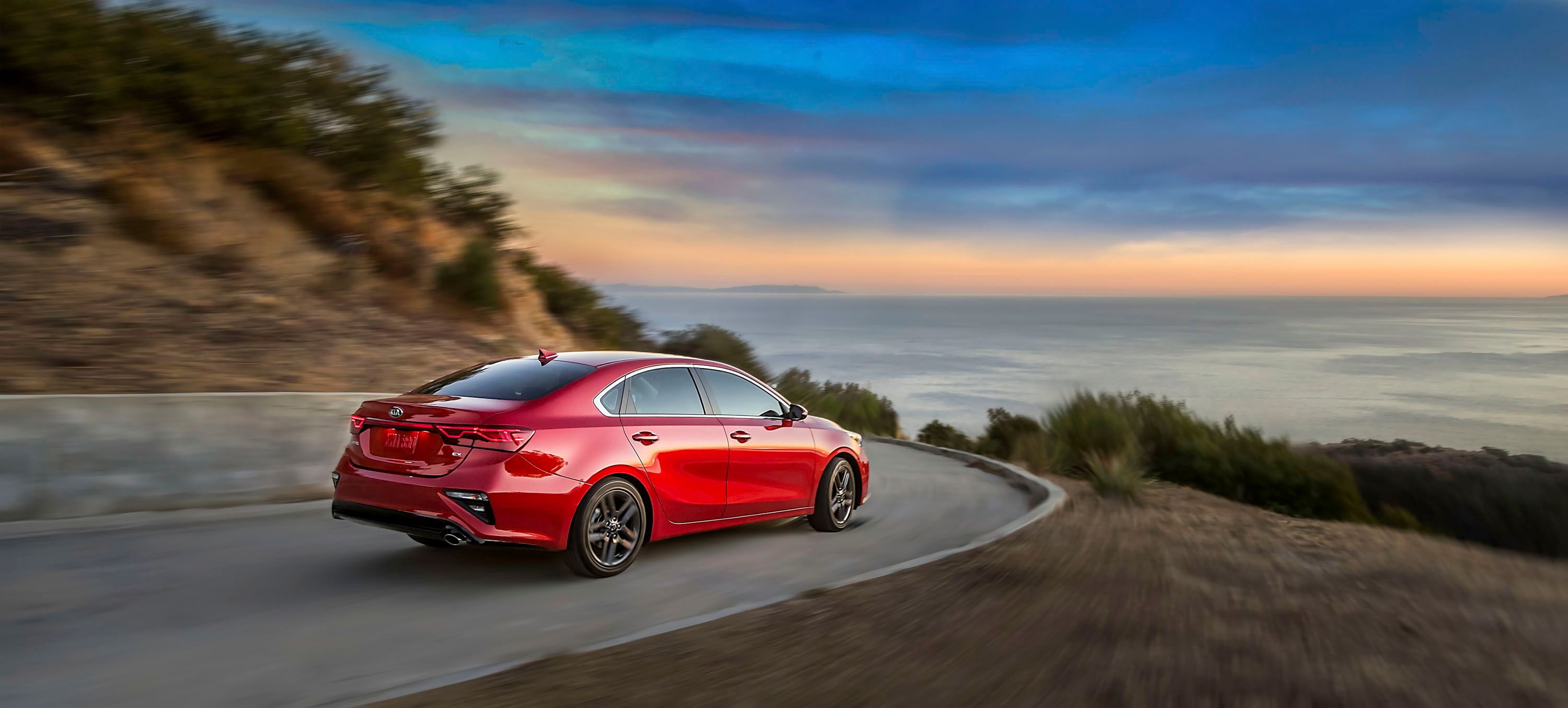
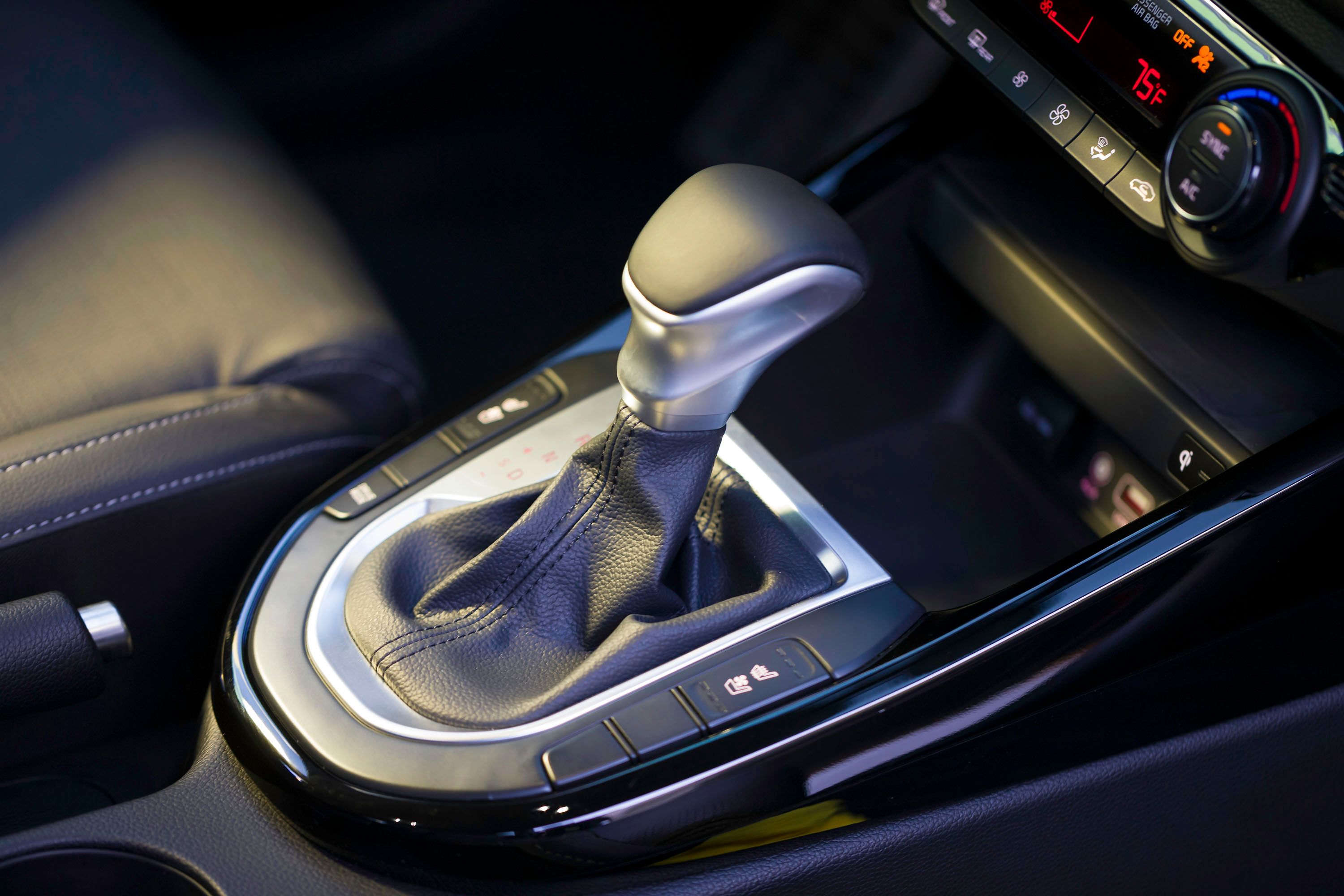
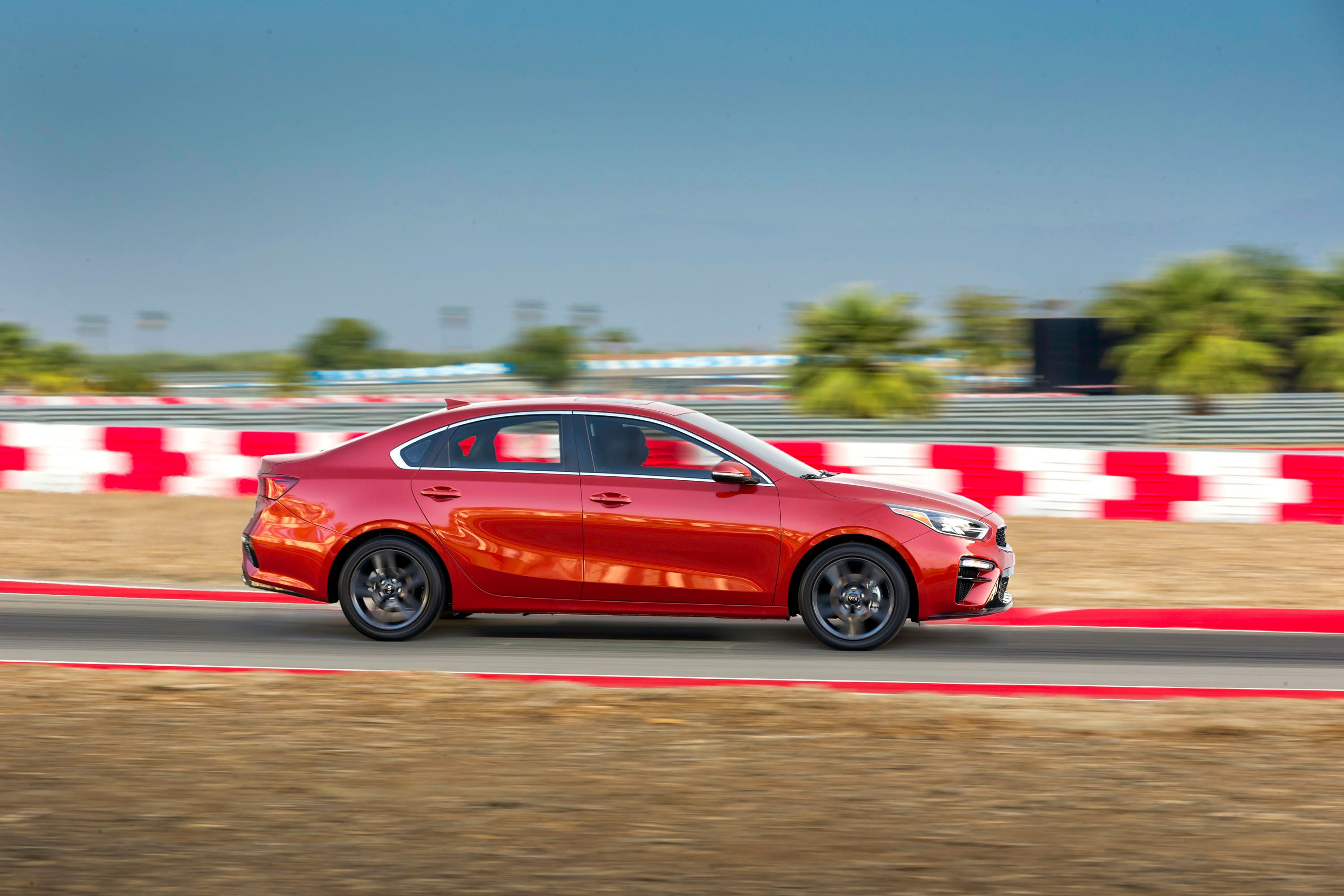
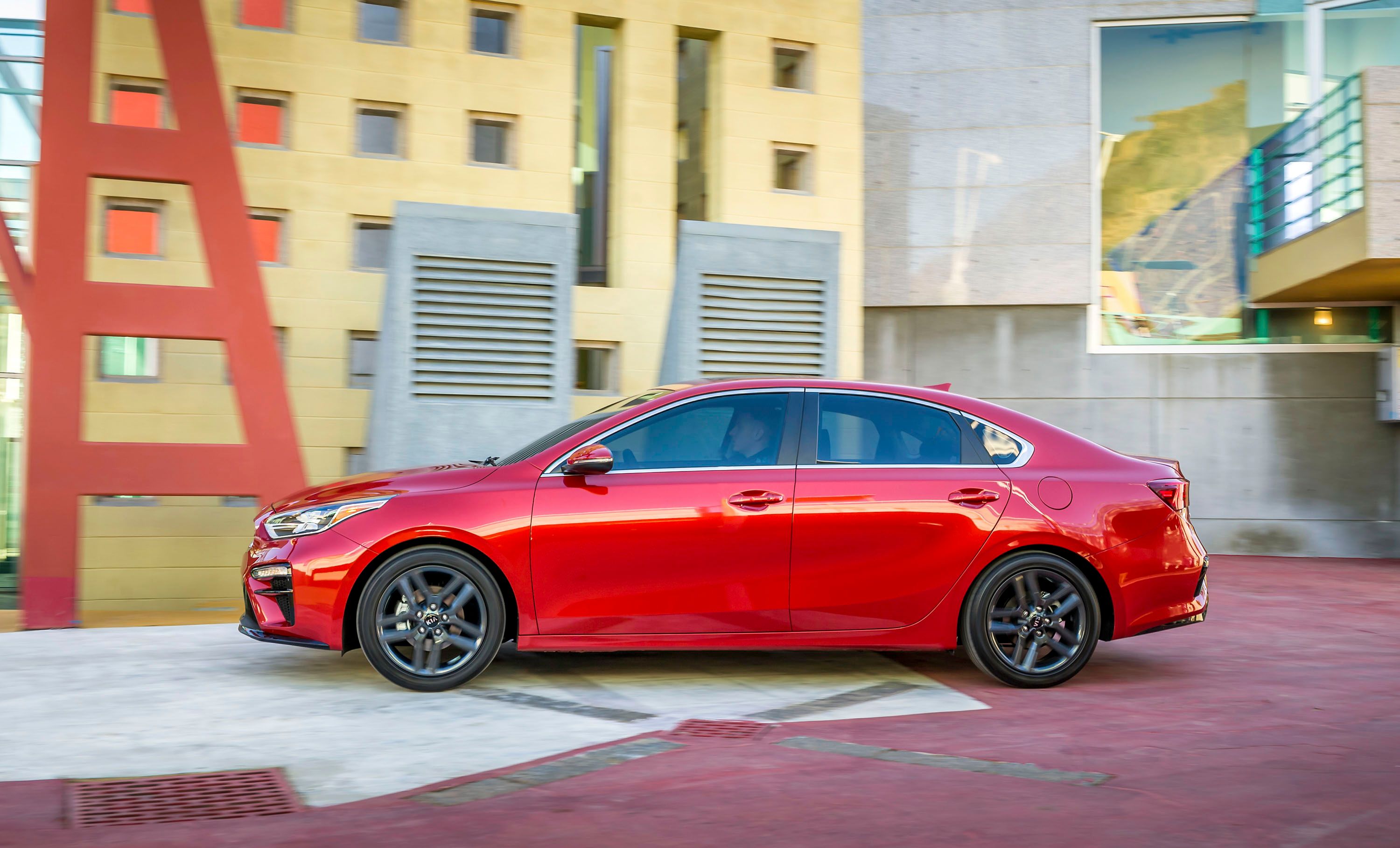
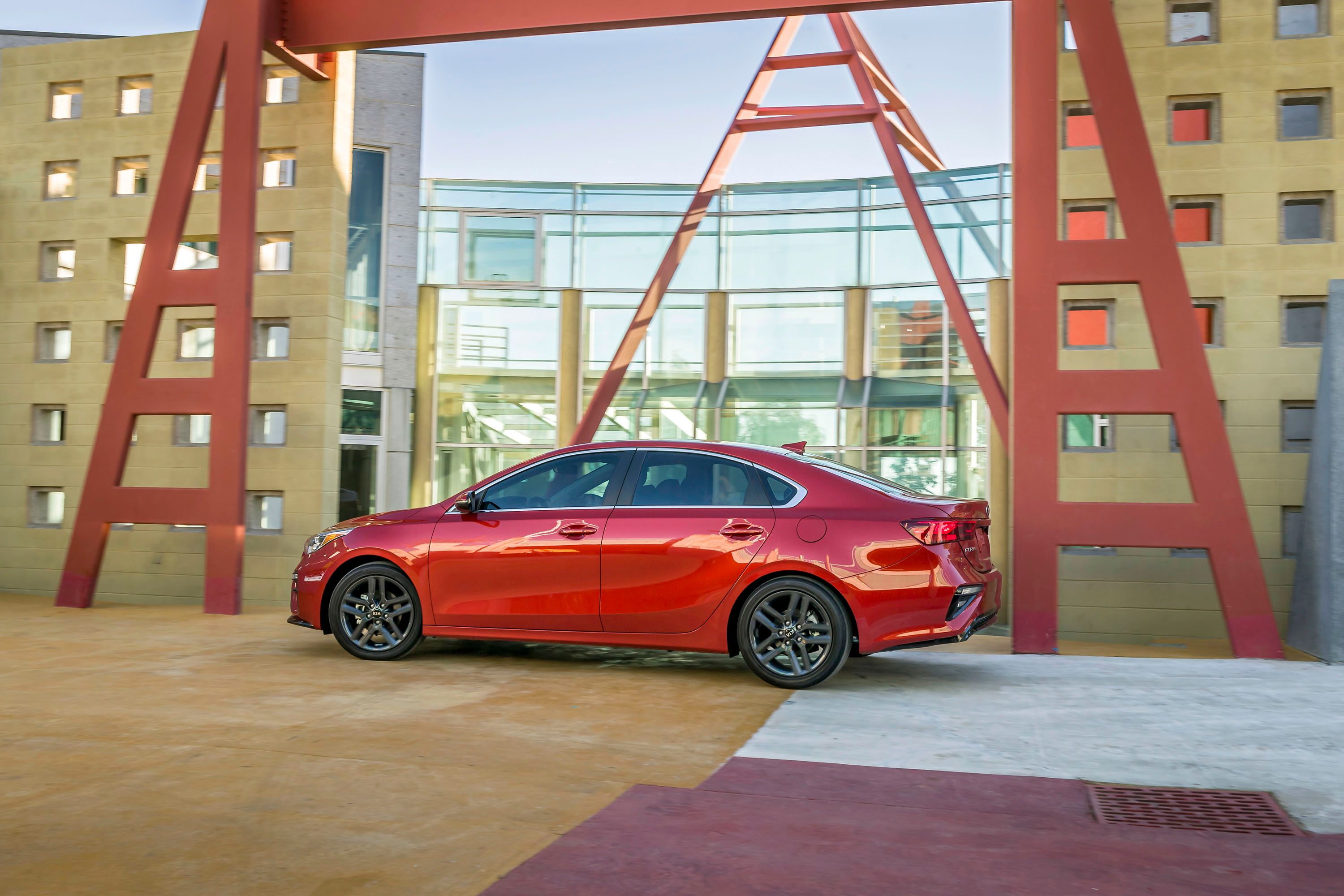
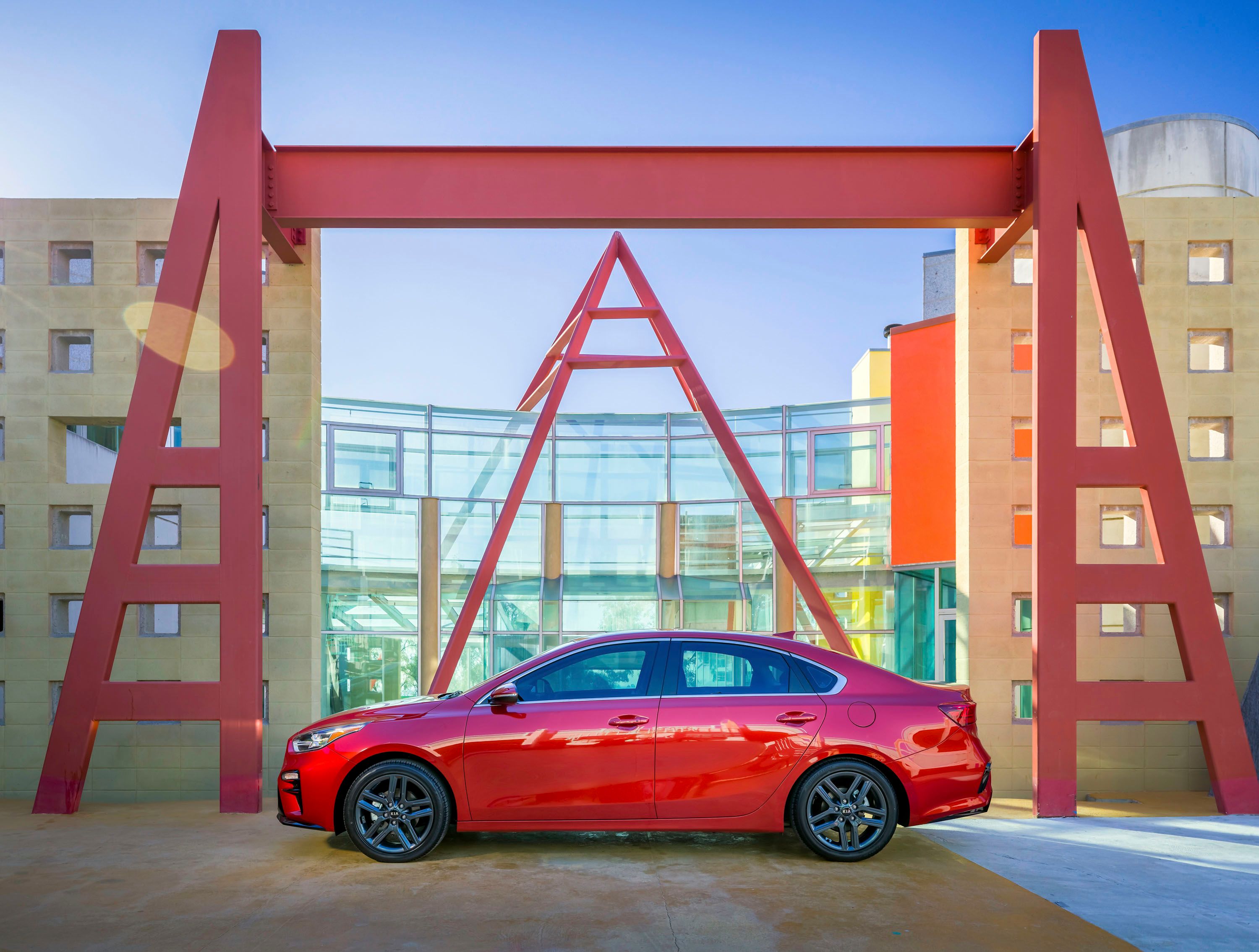
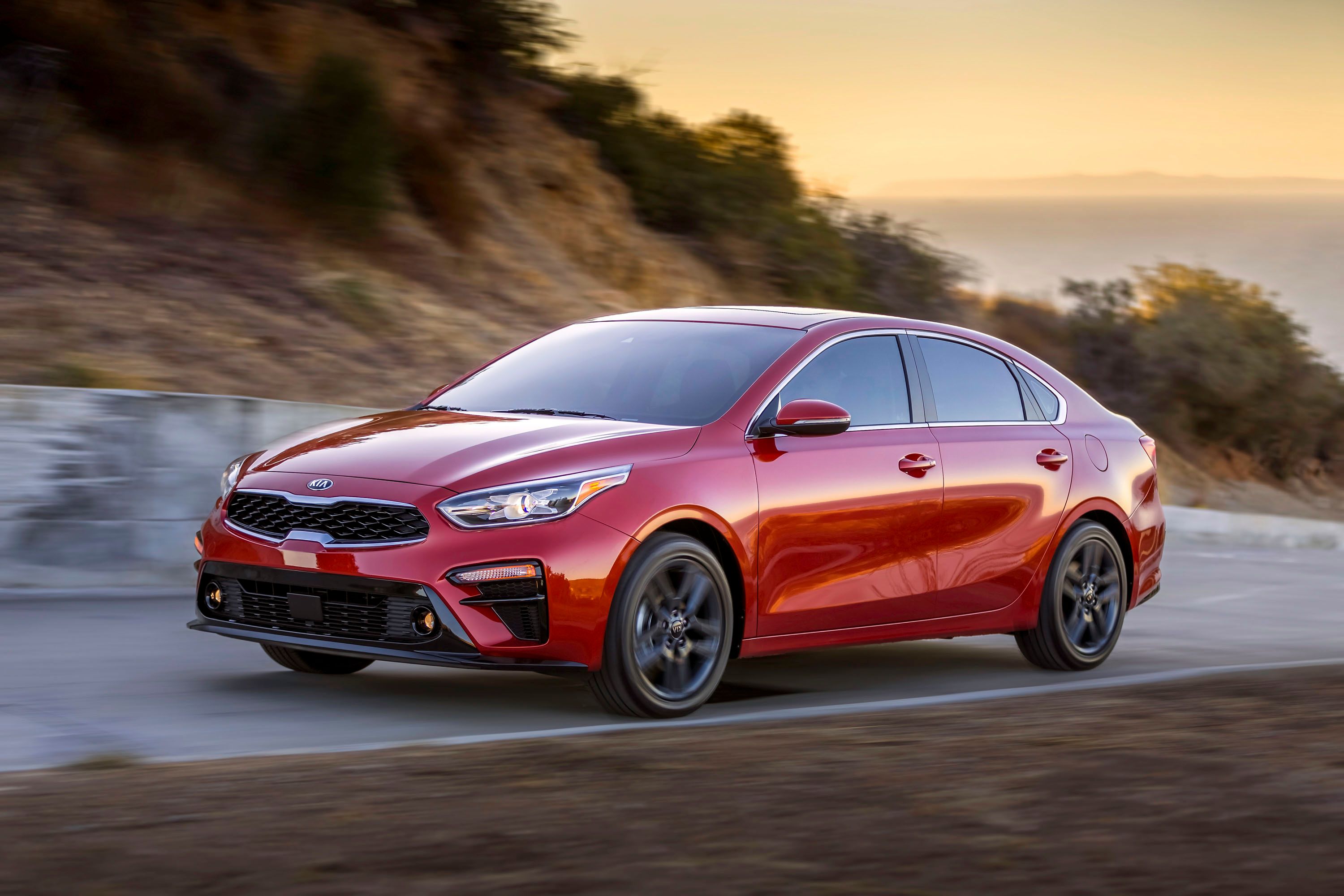
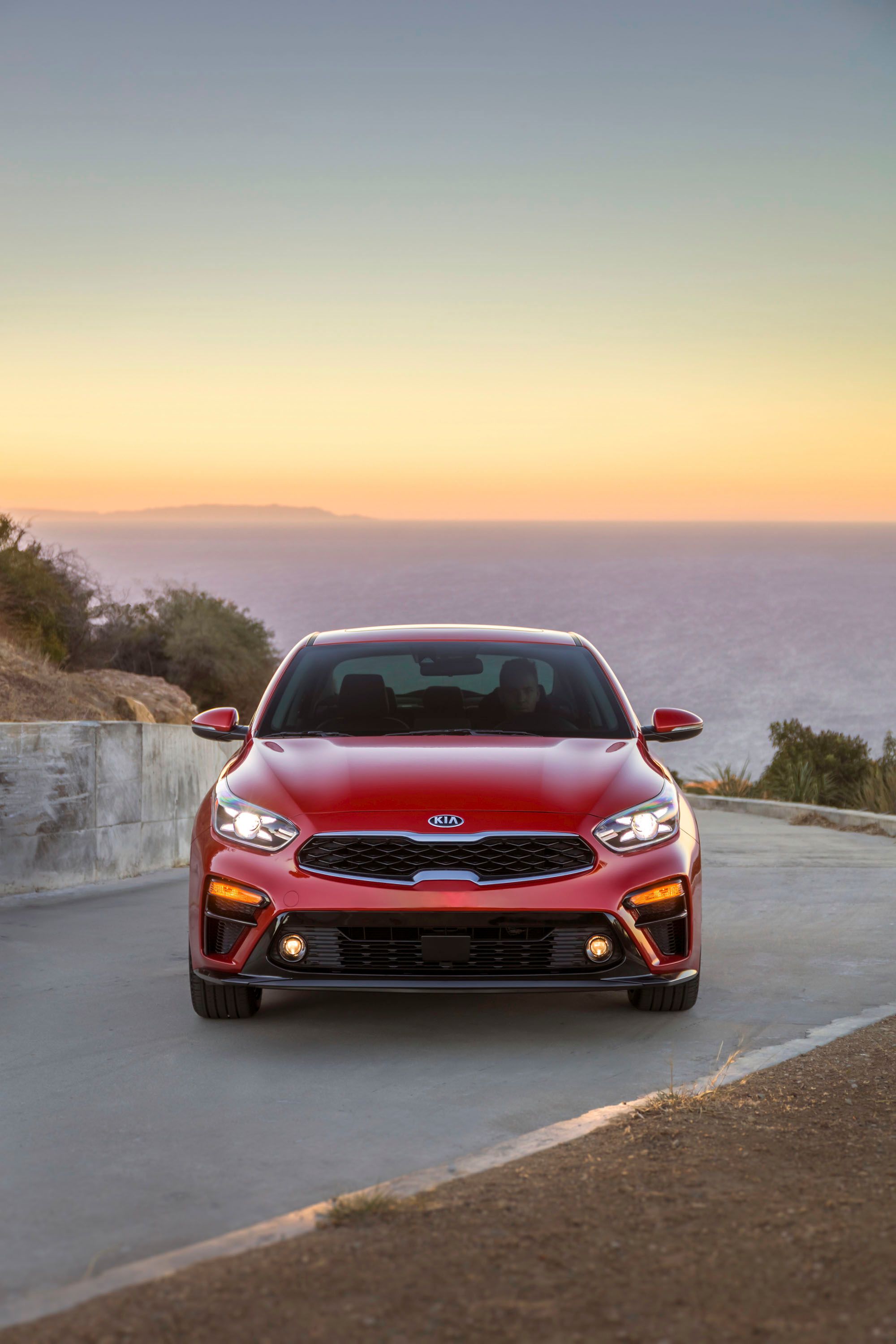
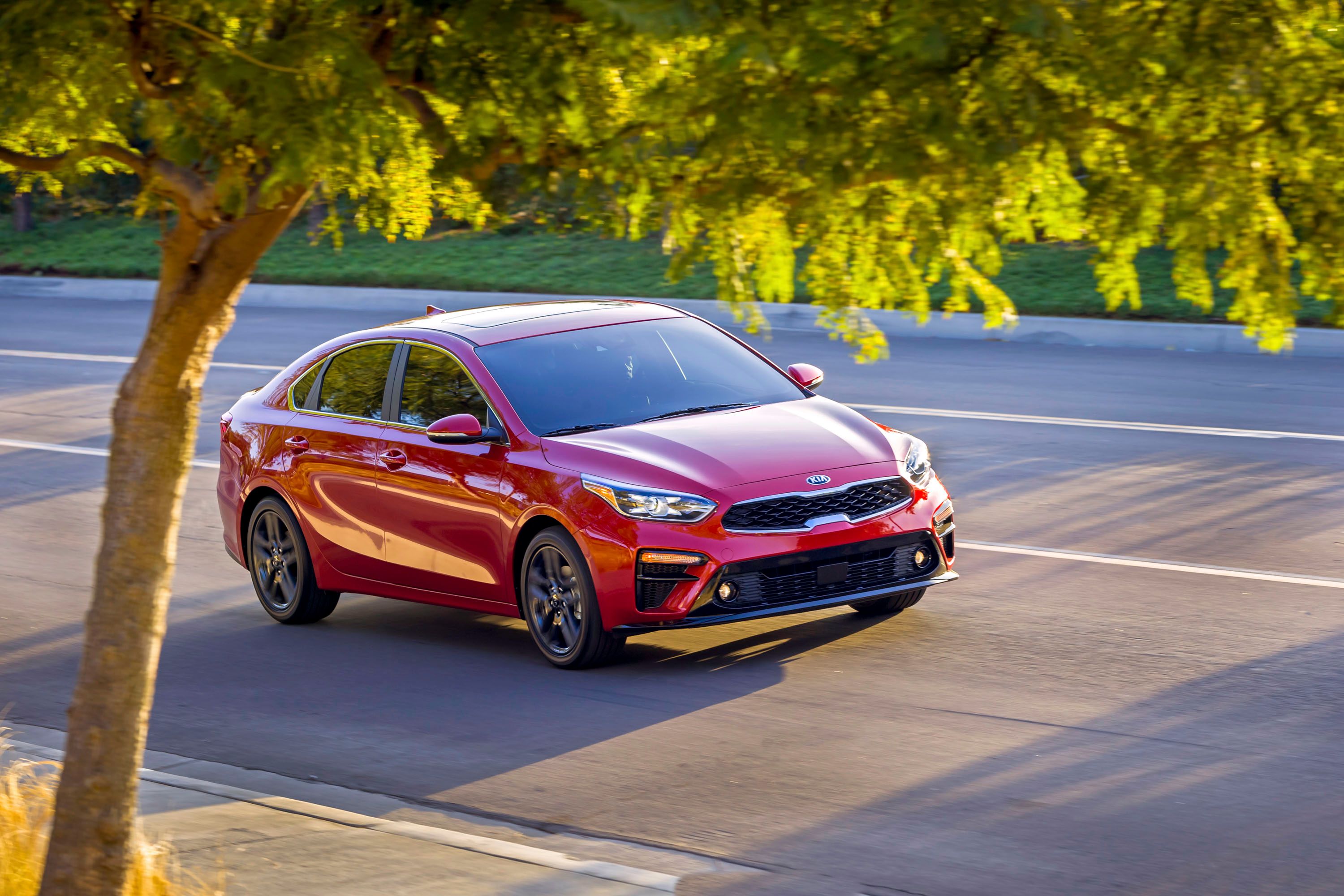
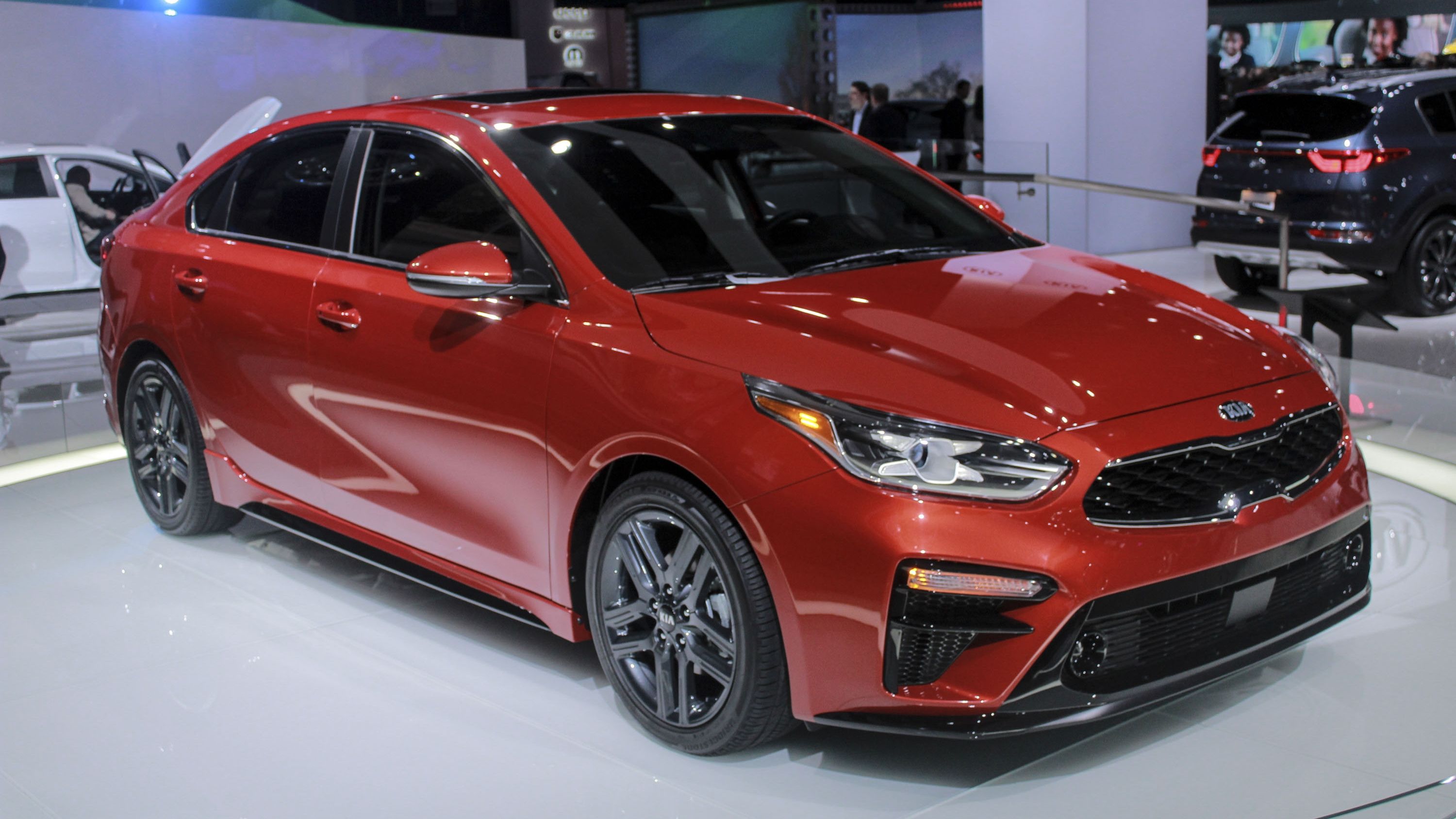
- Make: Array
- Model: 2019 Kia Forte
- [do not use] Vehicle Model: Array
Official video
Exterior
|
|
ids=761810,745677 |
no_overlay=true> |
The new Forte showcases a decidedly sportier design up front with every important design cue given a serious makeover. The new styling is clearly inspired by the Kia Stinger sedan, but the Forte is by no means as aggressive as its bigger and hotter sibling. The "tigernose" grille is indeed based on the Stinger’s, having a narrower center section and more angular outer edges. The previous grille looks mild by comparison. The headlamps are also new, and while they're no longer connected to the grille, they also become slimmer toward the fenders, which gives the car a sportier look. The bumper boasts a larger center vent with integrated foglamps, while the side intakes are bigger.
The profile sports the same clean design as its predecessor, but there are quite a few changes to talk about. For starters, the beltline seems to be dead straight from front to rear, whereas on the outgoing model it ascends from the front fenders toward the trunk lid. The window trim is more symmetrical now and has a pronounced Hofmeister Kink-like element on the quarter window.

Unlike the front fascia, the rear bears little to almost no resemblance to the Stinger. However, it’s also significantly different than the outgoing Forte. The taillights are sleeker and have a unique LED layout, while the bumper has fake triangular vents on each side. There’s also a diffuser-like element underneath, but the lack of fins and the single exhaust pipe keeps things mild. The trunk lid is rounded off by a small spoiler and a horizontal strip between the taillights, a feature borrowed from the Sportage SUV.
In all, the Forte Sedan looks quite appealing and it's a fresh take in a segment dominated by the Toyota Corolla, which is already a few years old.
As with most new-generation cars, the new Forte is a tad bigger. Kia added 3.5 inches to the overall length, while the width of the car increased by 0.7 inches. The Korean sedan is also nearly a half-inch taller.
Interior

The outgoing Forte has a rather unique dashboard with the passenger side featuring three wave-like elements that "flow" toward the A/C vent. But while this is a feature I will miss, the rest of the dash was far from impressive and quite dated in 2017. The center stack was cluttered too.
The redesign fixed most of these issues. The dash no longer looks bloated and the chrome trim and the two-tier design makes the interior seem wider. The center stack is a tad wider now, which means that the control panel buttons and knobs are set further apart, which results in better ergonomics. The infotainment screen is bigger, measuring eight inches, and sits higher on the dash. The latter is flanked by aeronautically-inspired, circular A/C vents that give the cabin a modern, sporty feel.
The steering wheel is also new and features revised controls on the upper spokes and a new, silver lower spoke. The latter gives the wheel a more premium look. The instrument cluster behind it has a bigger display between the speedometer and rev counter and displays more information than ever, keeping the driver connected to the car.

The sedan is also a tad roomier due to the car being longer and wider. The roof is slightly higher too, which improved headroom especially for rear-seat passengers. Cargo space is rated at 15.1 cubic feet, among the best in this class.
Tech-wise, it comes with features such as Android Auto, Apple CarPlay, and wireless charging, which is slowly becoming the norm in non-premium segments too. The latter is compatible with Android devices, as well as Apple iPhone 8, and iPhone X. The optional 320-watt system developed with Harman Kardon turns the Forte into a concert hall.
The new-generation platform also brings a suite of Advanced Driver Assistance Systems (ADAS) offered in many of the Kia’s more expensive vehicles. In addition to Blind-Spot Collision Warning and Lane Keeping Assist systems, the new Forte also gets Forward Collision-Avoidance Assist and Smart Cruise Control. Both are optional. The latter is designed to maintain a pre-set distance between the Forte and the vehicle in front and can slow the car and bring it to complete stop if necessary.
Drivetrain

The revised platform comes with an improved engine and a new transmission. Power comes from the same 2.0-liter four-cylinder, Atkinson-cycle unit, rated at the same 147 horsepower and 132 pound-feet as in the outgoing model. However, the six-speed manual transmission is now joined by a brand-new automatic called IVT, which short for Intelligent Variable Transmission.
An in-house designed, the IVT promises to eliminate many of the issues associated with traditional CVT transmissions. Kia says that the adaptive style shift logic and chain-type belt instead of the push belt helps the IVT eliminate the CVT's annoying rubber-band-like feel. "This results in smooth and linear acceleration, and for a more enjoyable and sporty driving experience, a step-shift-like feel mimics a conventional automatic at wide-open throttle or when more acceleration is needed," the automaker said. Well, if things work as described, it will be a big improvement over the standard CVT.

The Korean claims that they also managed to reduce noise by wrapping the transmission case in a sound-insulating cover to help quiet the typical drone associated with CVTs. Kia reports that NVH levels are also reduced by five decibels, which a notable improvement.
Finally, the revised engine and the IVT transmission return better fuel economy too. Specifically, fuel efficiency is expected to grow to 35 mpg combined, up three mpg compared to the outgoing model.
Look for this engine and IVT configuration, which is the first of a new line of highly efficient “Smart Stream” powertrains, make its way into other Kia vehicles in the future.
Prices

The new Kia Forte should come with a mild price increase over the outgoing model, which retails from $16,800. The redesigned model will probably cost at least $17,500 in base LX trim, while the S will fetch a bit more than $20,000. The range-topping EX version should cost around $22,500 before options. Kia says that the model line will be expanded during the generation's life-cycle, so expect new trims and special editions to be offered.
Competition
Toyota Corolla
The new Forte Sedan will go against a few tough competitors, starting with the Toyota Corolla, the world's best selling car since the 1990s. Redesigned most recently in 2013, the Corolla may be a little old compared to the upcoming Forte, but it remains a popular choice in the United States and Europe. But while it may be reliable and efficient, the Corolla feels a bit dated inside the cabin and the fact that it's limited to just one engine in the U.S. makes things easier for Kia. The 1.8-liter four-cylinder is rated at either 132 horsepower and 128 pound-feet of torque or 140 horses and 126 pound-feet, so the Forte should win the horsepower battle with the range-topping model. Mileage varies between 27 to 28 mpg city and 35 to 36 mpg highway depending on drivetrain, but Kia should be able to top that given that the outgoing Forte is already good for up to 37 mpg on the highway. Pricing for the Corolla starts from $18,550 for the base model and goes up to $22,730 for the range-topping trim.
Read our full review of the 2017 Toyota Corolla.
Honda Civic
The Honda Civic is the second-most popular car in this niche and, unlike the Corolla, it's brand-new for 2018 and boasts a sportier, more modern appearance. It's also slightly larger than the competition and comes with a solid convenience and tech package. Motivation comes from three different engines, starting with a 2.0-liter four-cylinder rated at 158 horsepower and 138 pound-feet of torque. More oomph comes from the more expensive trims, which get juice from the turbocharged, 1.5-liter four-pot with 174 horses and 162 pound-feet. The tiny powerplant is found in the Si model too, rated at 205 horsepower and 192 pound-feet. The Si also enables Honda to rise above the competition as neither Toyota, Kia, Hyundai or Chevrolet offer similar power ratings. Pricing starts at $18,840 for the base model, while the Touring trim retails from $26,700. The higher performance Si variant fetches $24,100 before options.
Read our full story on the 2017 Honda Civic.
Volkswagen Jetta
A new-generation Jetta was unveiled at the 2018 Detroit Auto Show, and unlike its predecessor, it will remain a U.S.-only model for the time being. Its Passat-inspired design is decidedly sportier compared to the outgoing model, while interior includes more premium features that ever, Which makes it the perfect competitor for the new Forte. Power comes from a turbocharged, 1.4-liter four-cylinder engine rated at 147 horsepower and 184 pound-feet of torque, and mated to either a six-speed manual or an eight-speed automatic with a start/stop system. Pricing starts from $18,545 and the standard package includes the new People First Warranty with 6-years/72,000-mile (whichever occurs first) coverage. An R-Line and a performance-oriented GLI version will be added later, with the latter likely to cost around $30,000 before options.
Read our review of the 2019 Volkswagen Jetta.
Conclusion

On paper, Kia did a tremendous job with the new Forte. It definitely looks sportier on the outside, and it feels more upscale on the inside, feats that put it on par with the new Volkswagen Jetta and Honda Civic, and a step above the all-popular Toyota Corolla. The Stinger-inspired cues are far from surprising. I was expecting Kia to use the sedan's hot features from the moment the Stinger was unveiled, and here we are looking at a Forte that draws inspiration for the brand's most exciting production car yet. The third-generation Forte is definitely appealing and it should become the nameplate's best-selling iteration yet.
References
Kia Forte
Read our full review on the 2017 Kia Forte.
Read more Detroit Auto Show news.
Read more Kia news.

